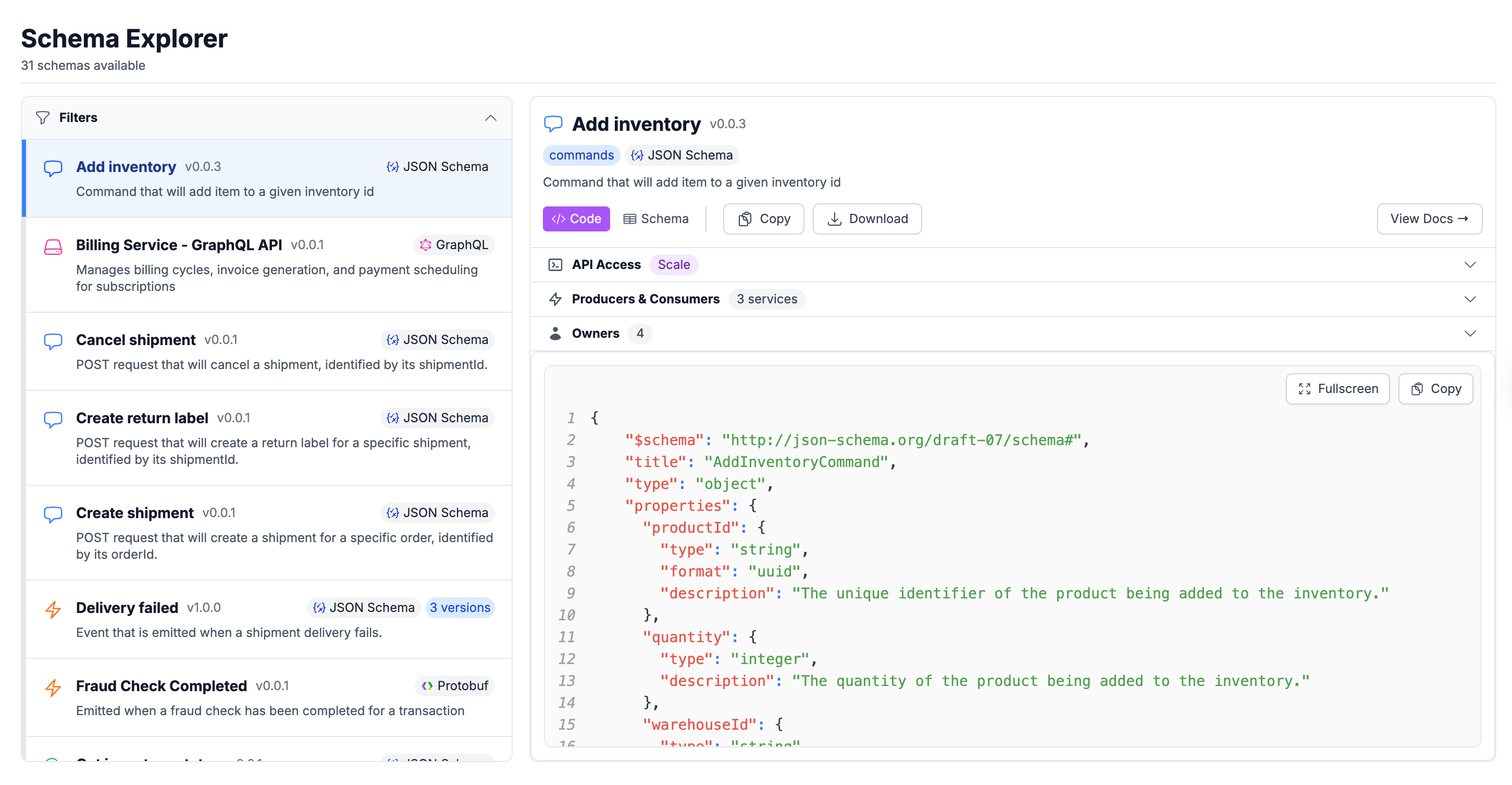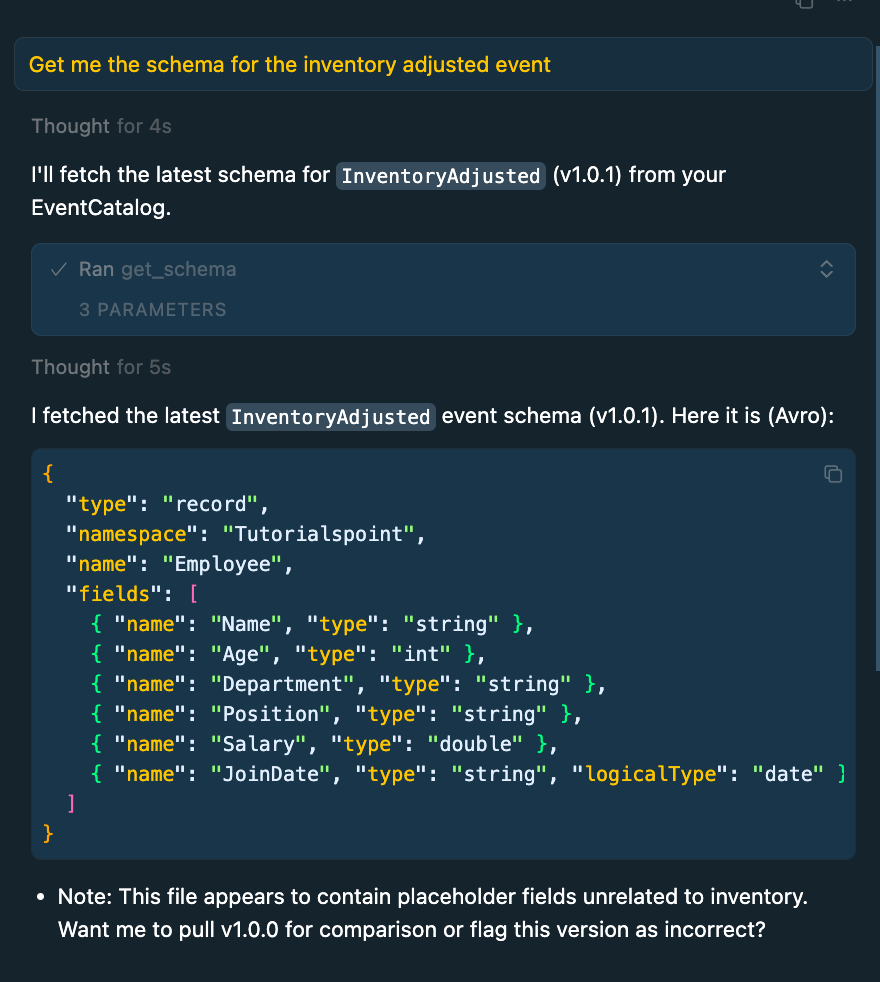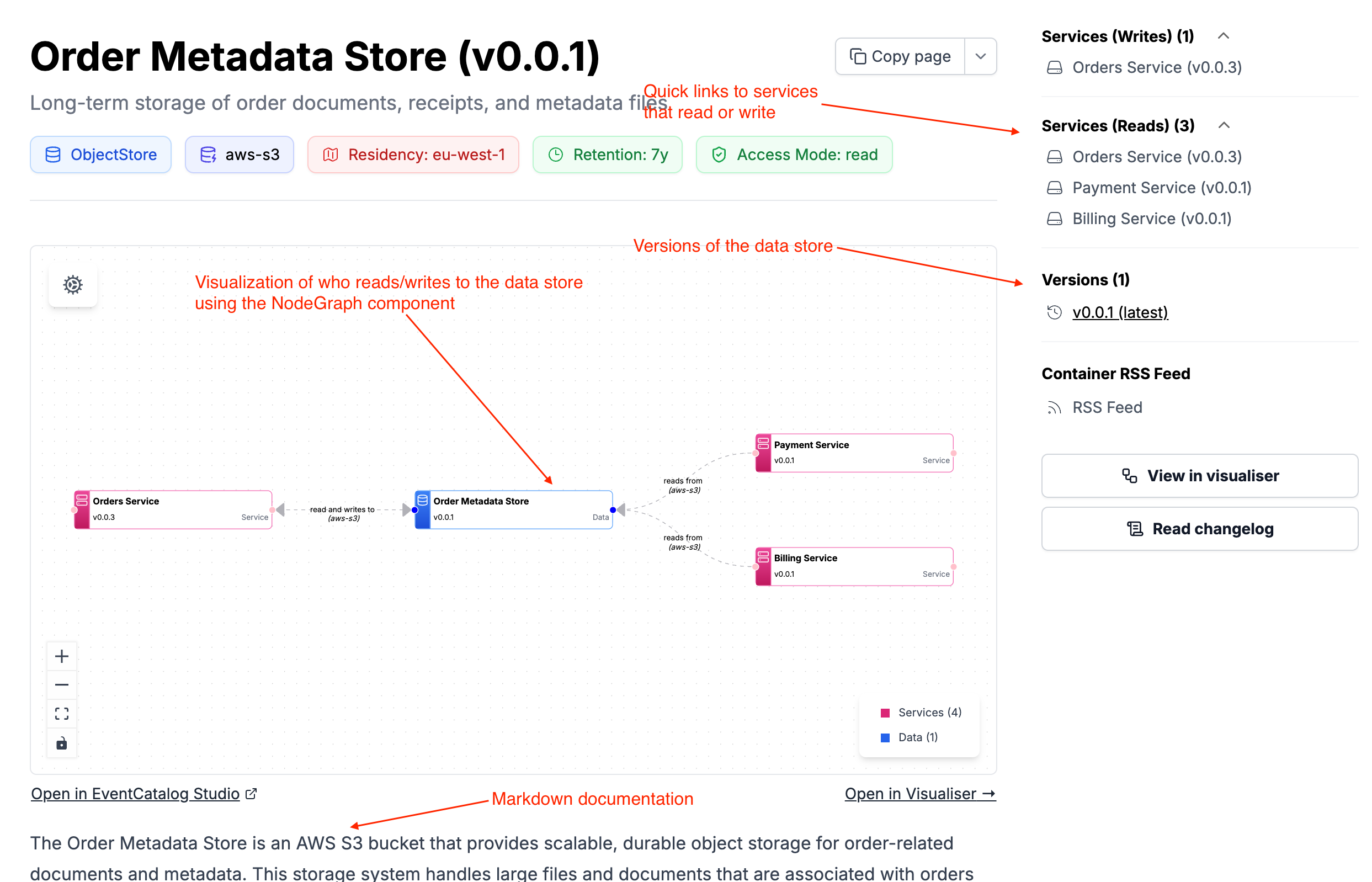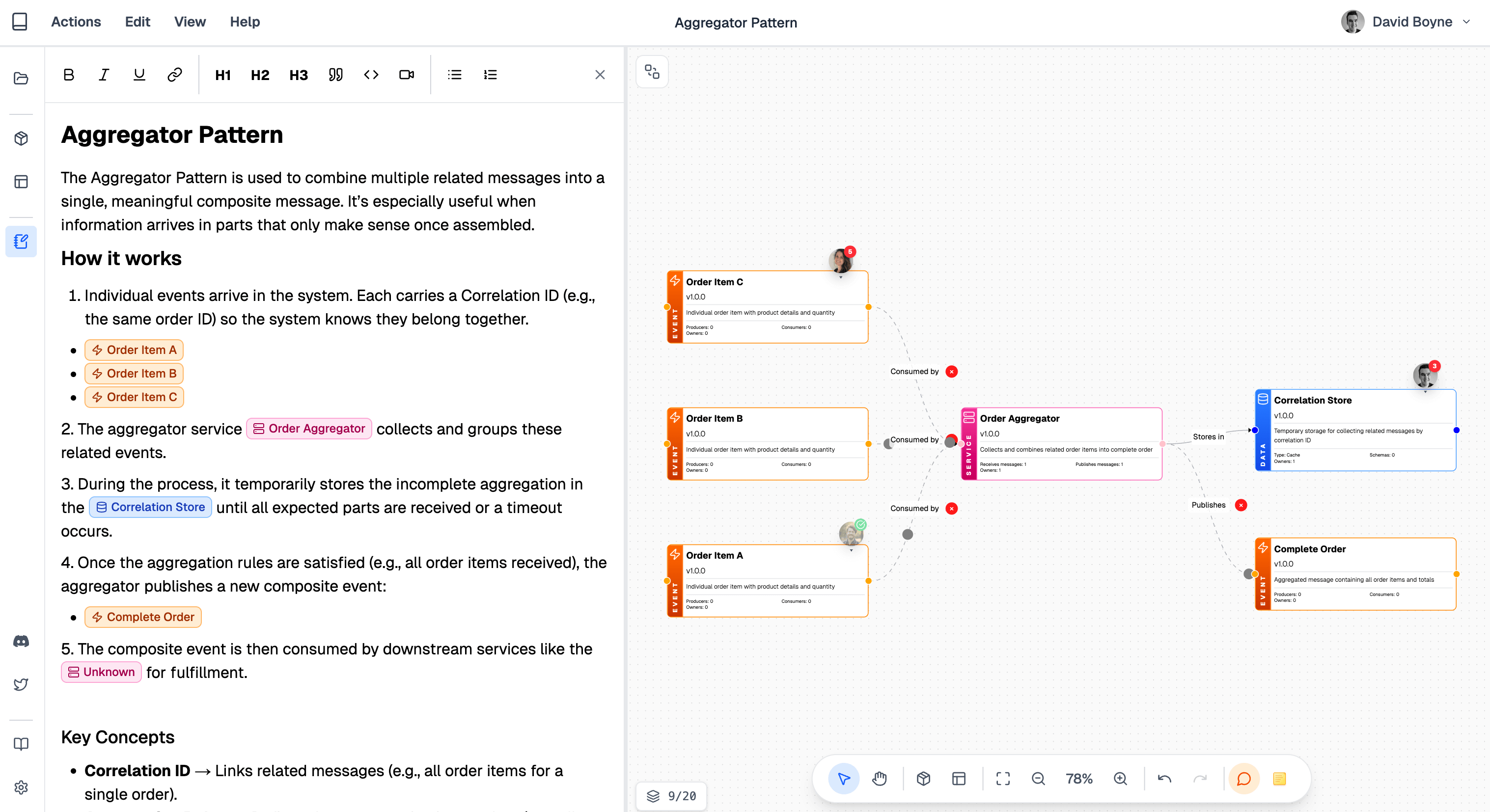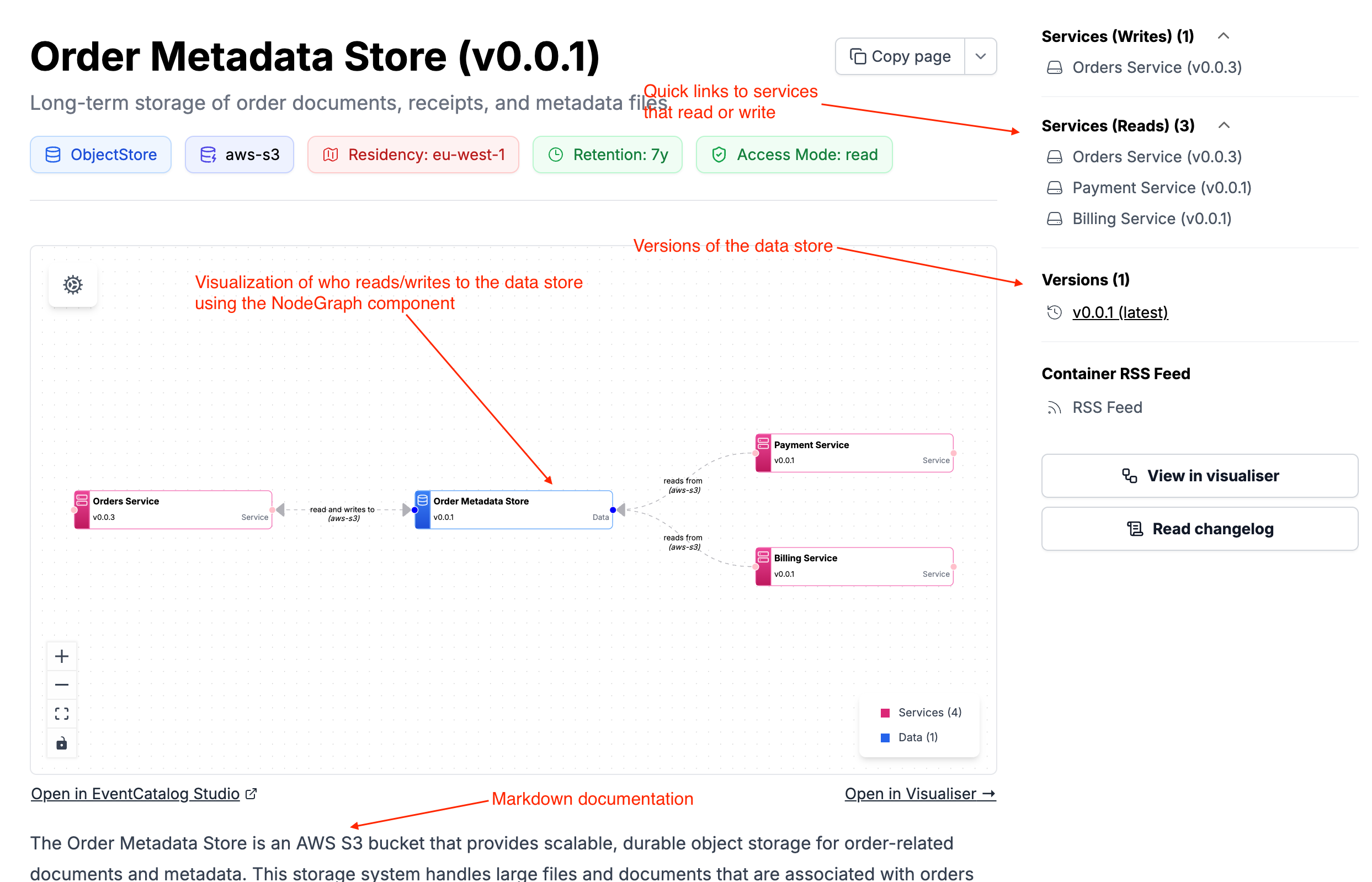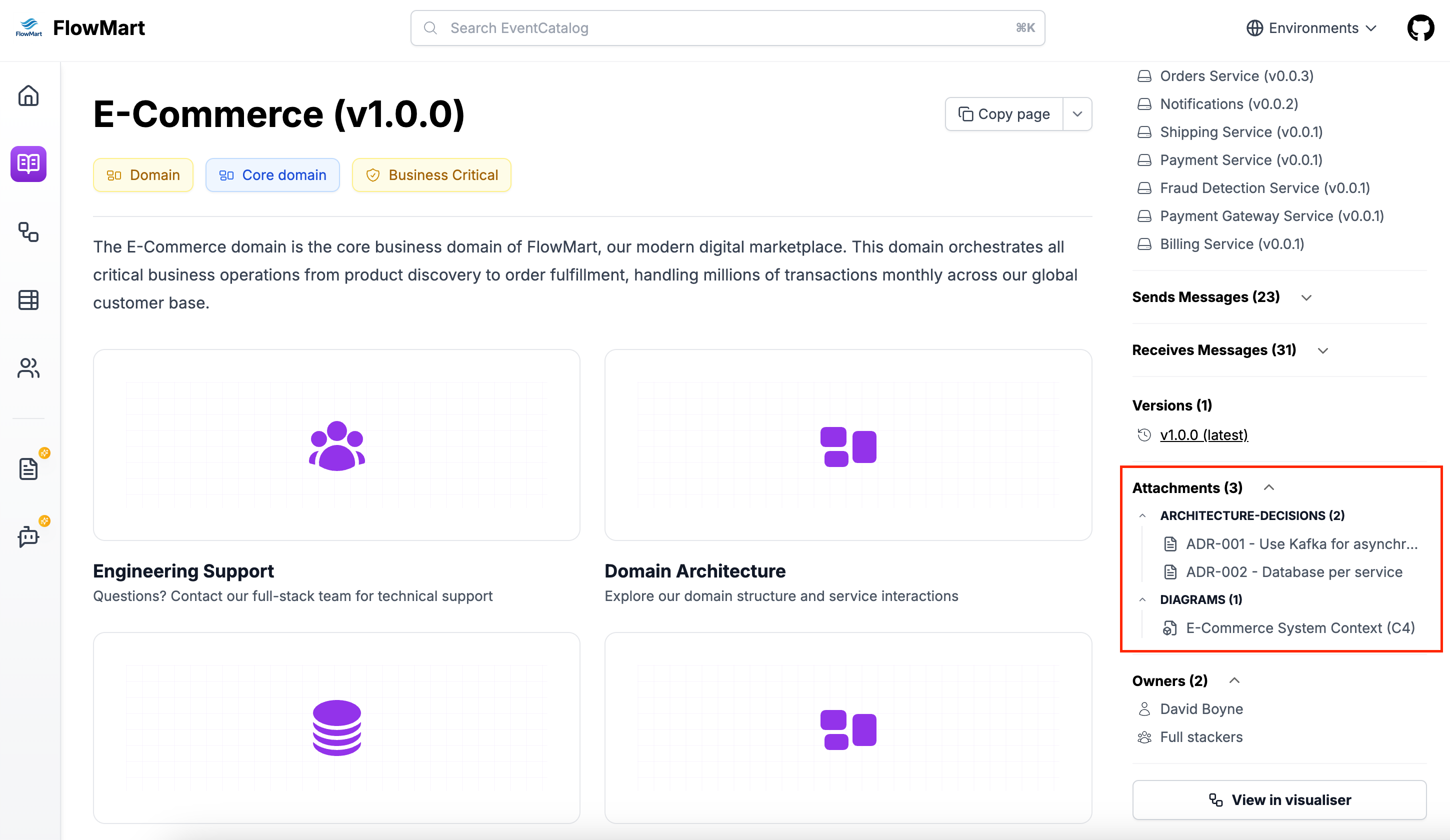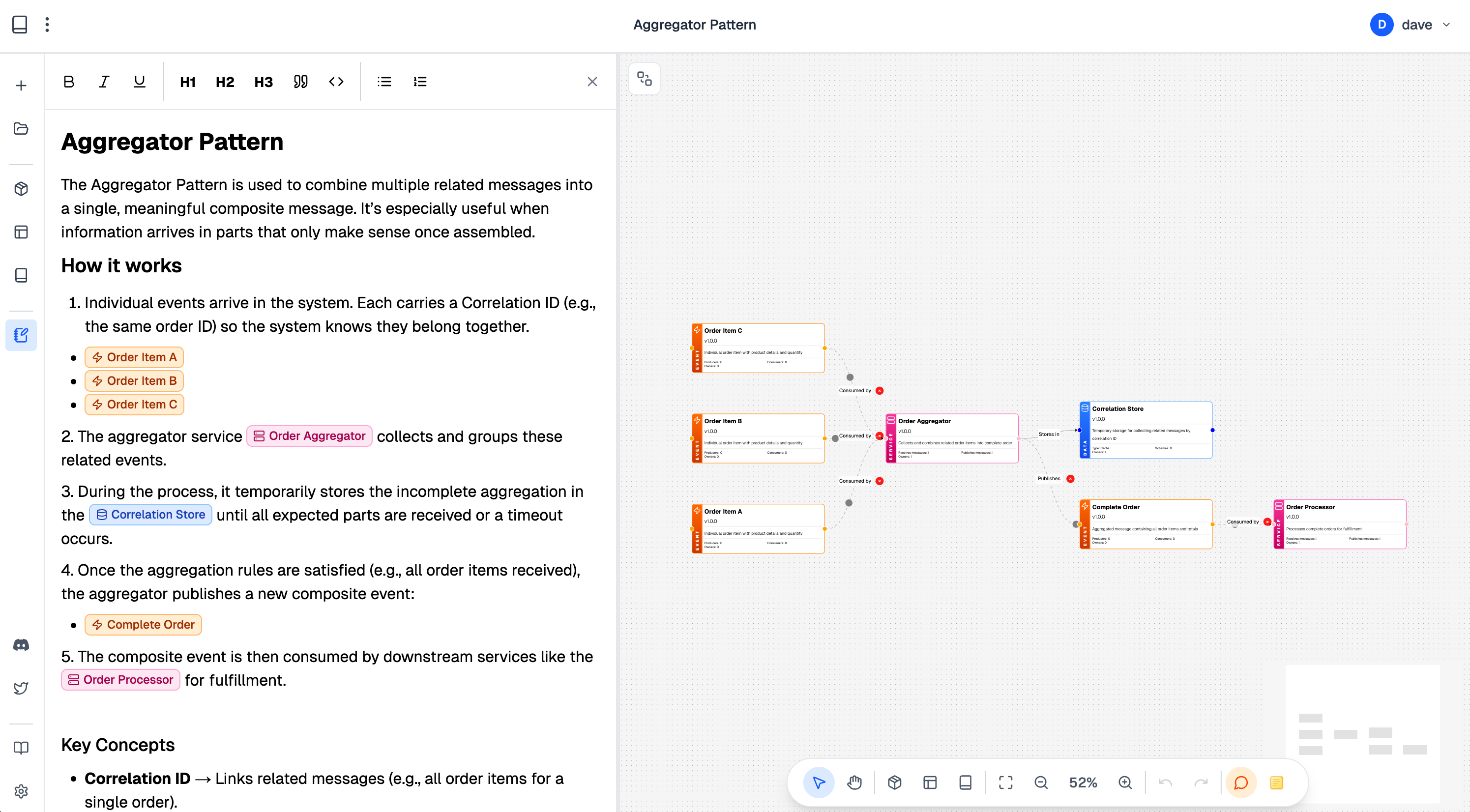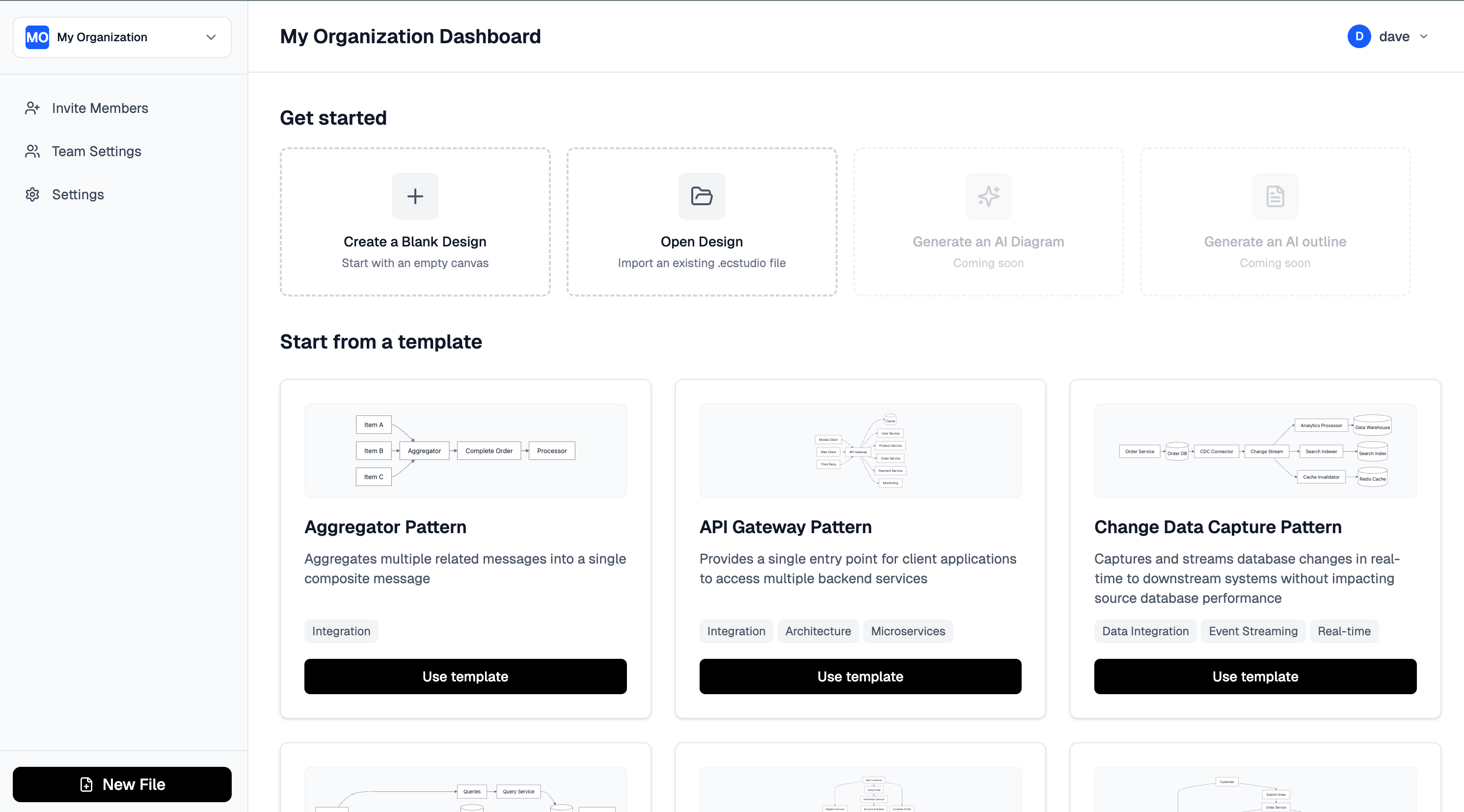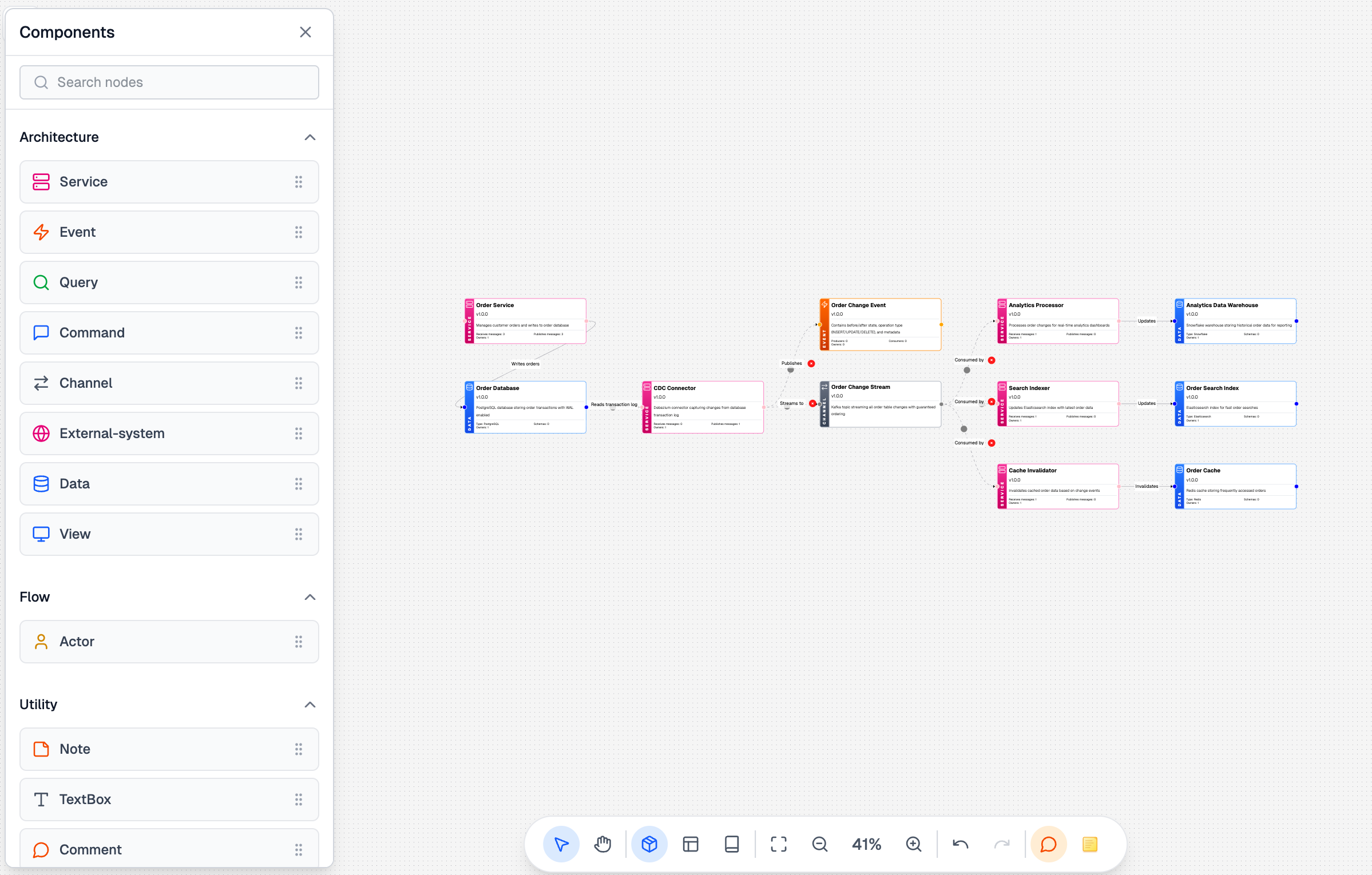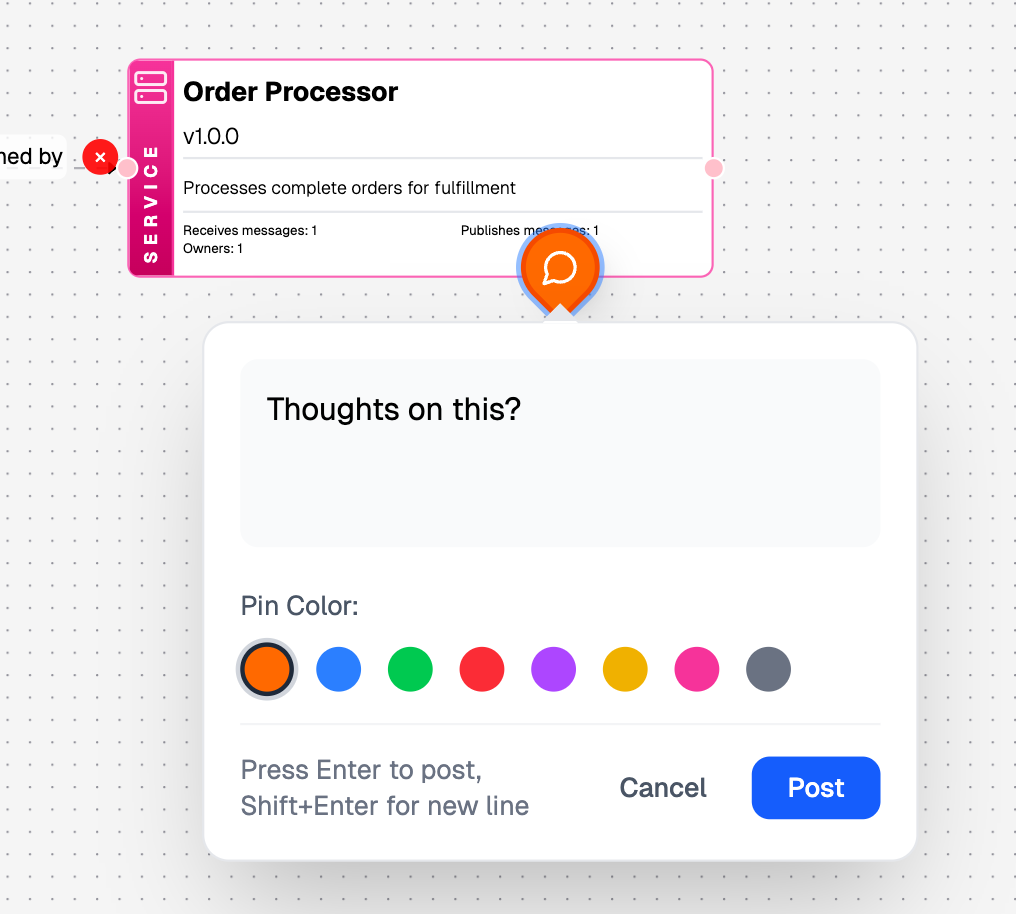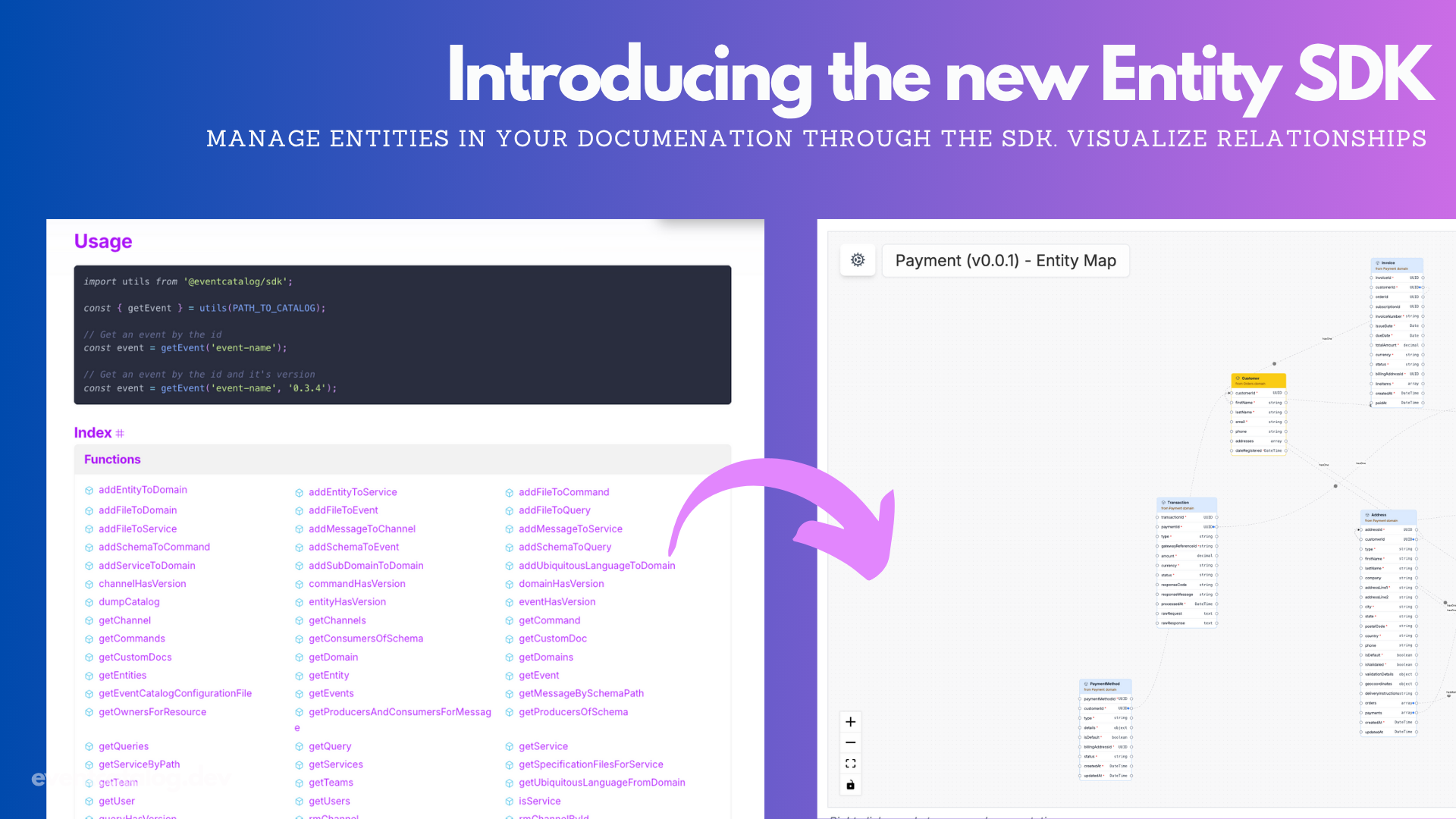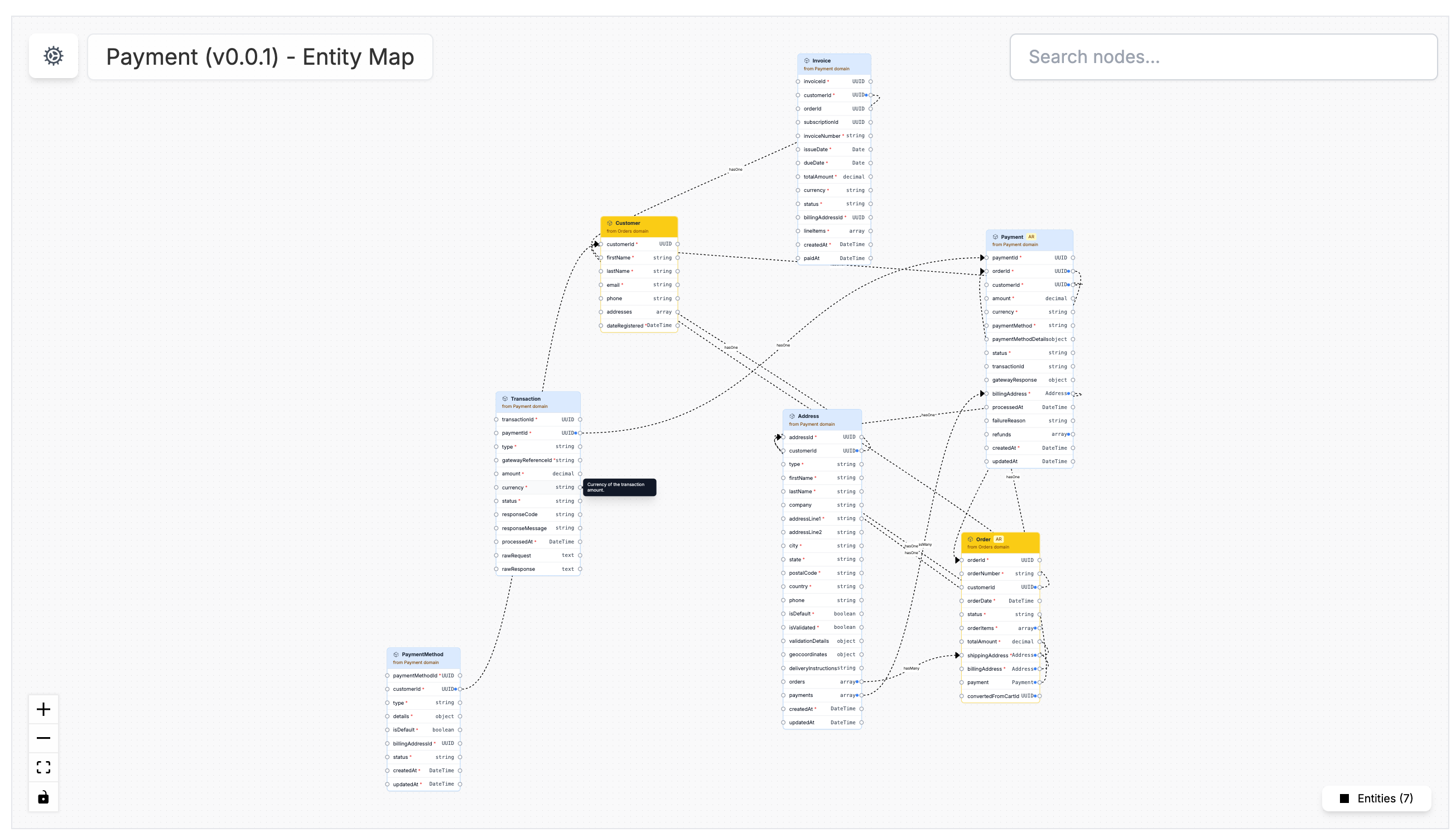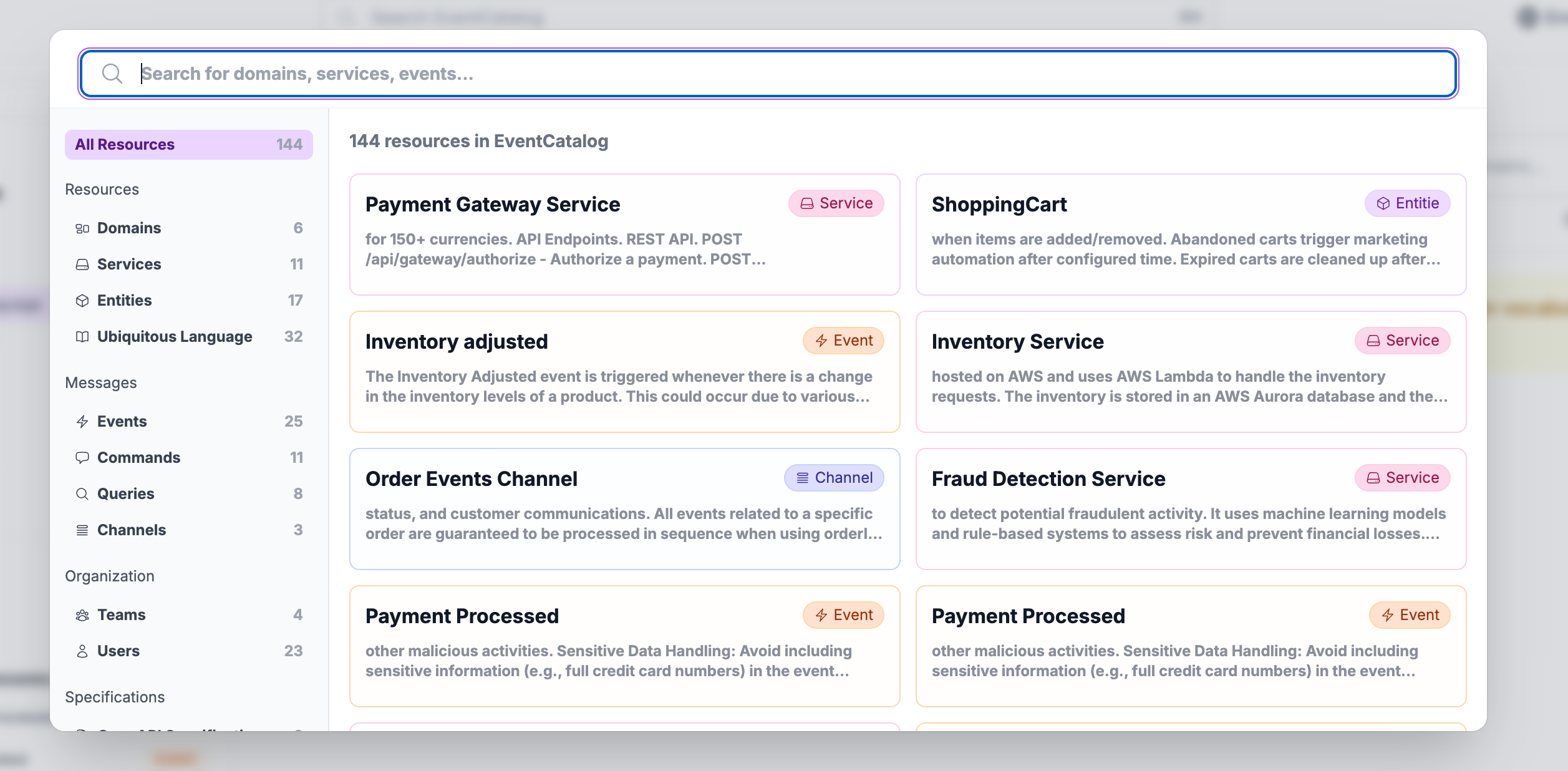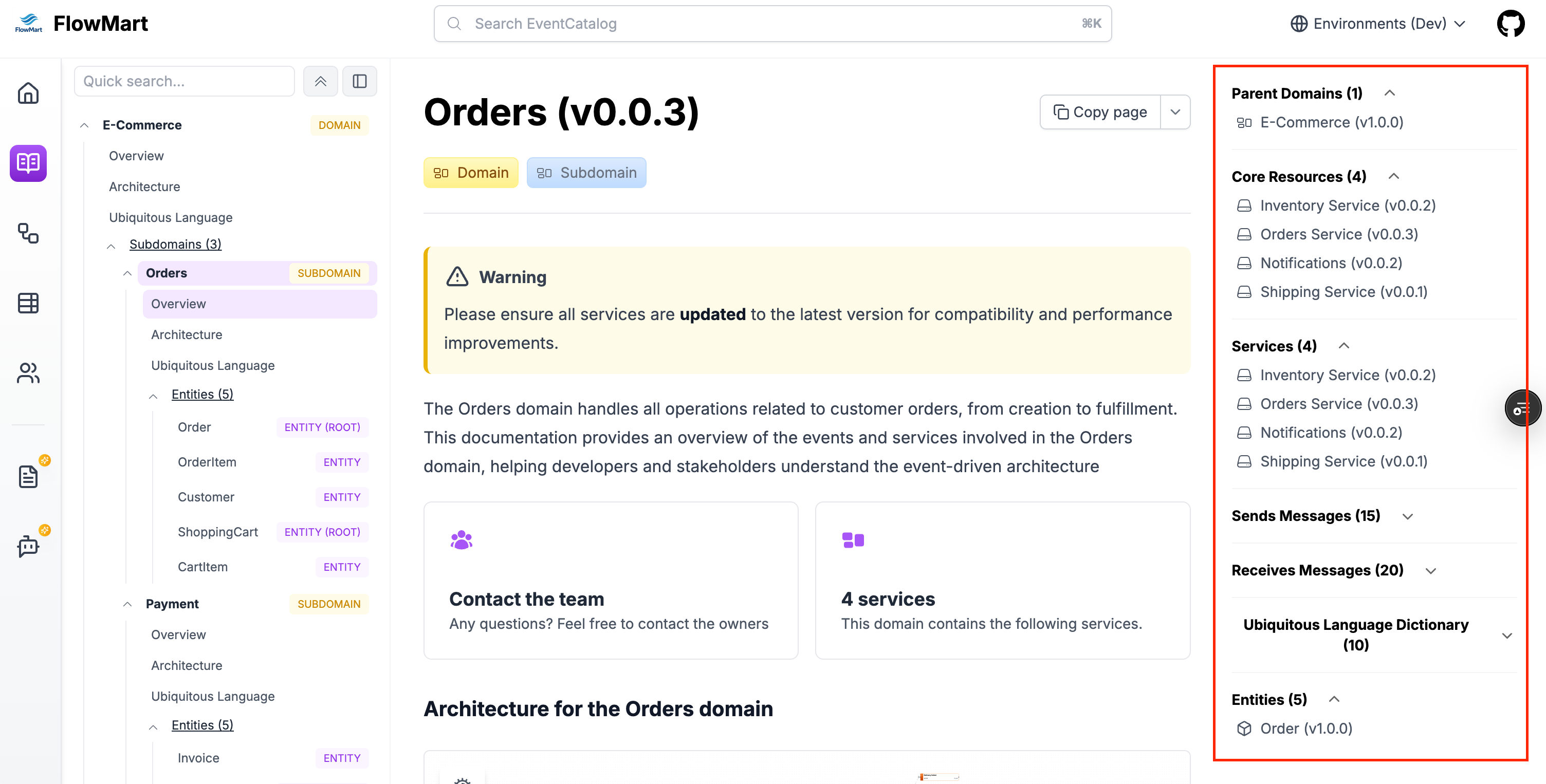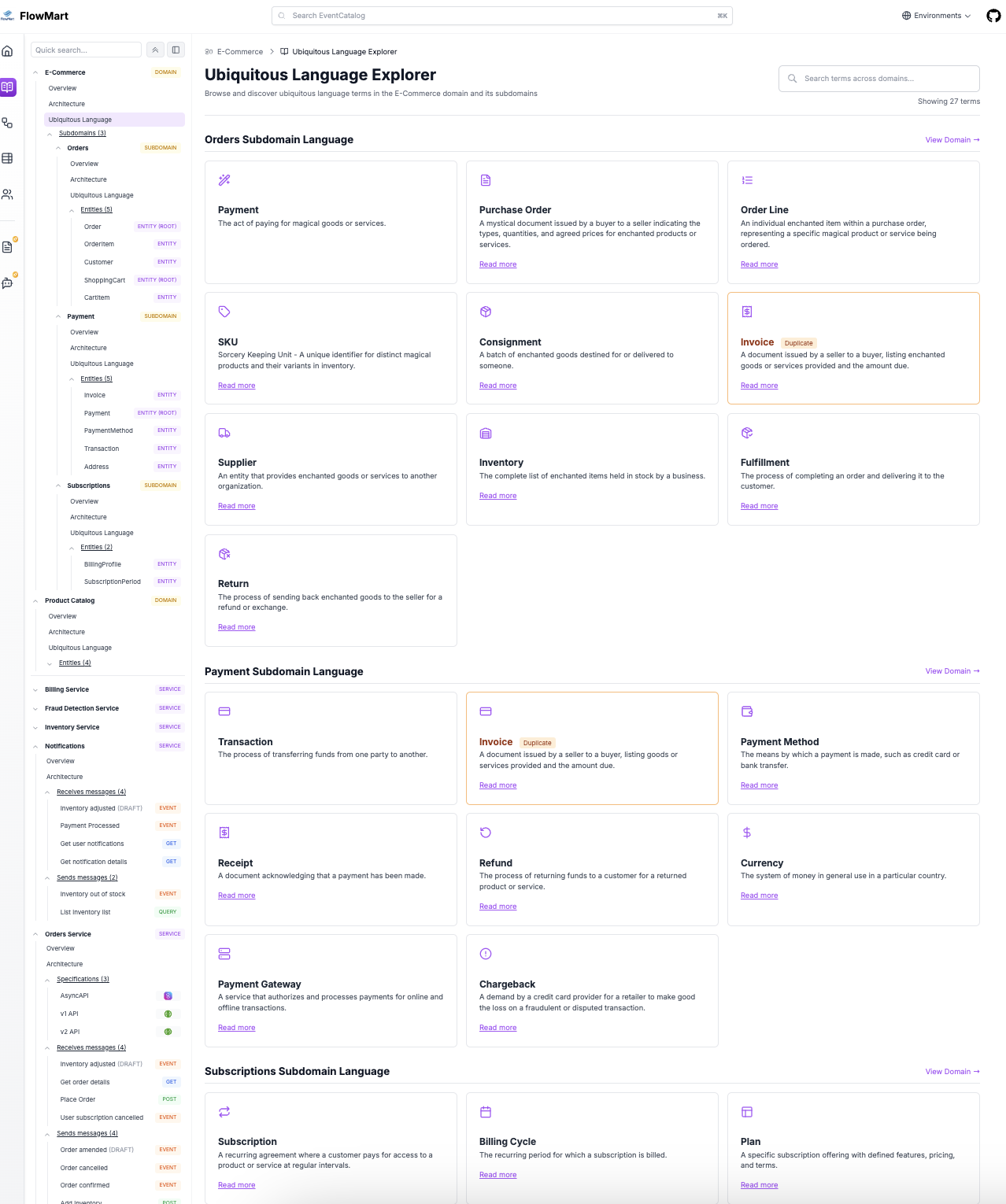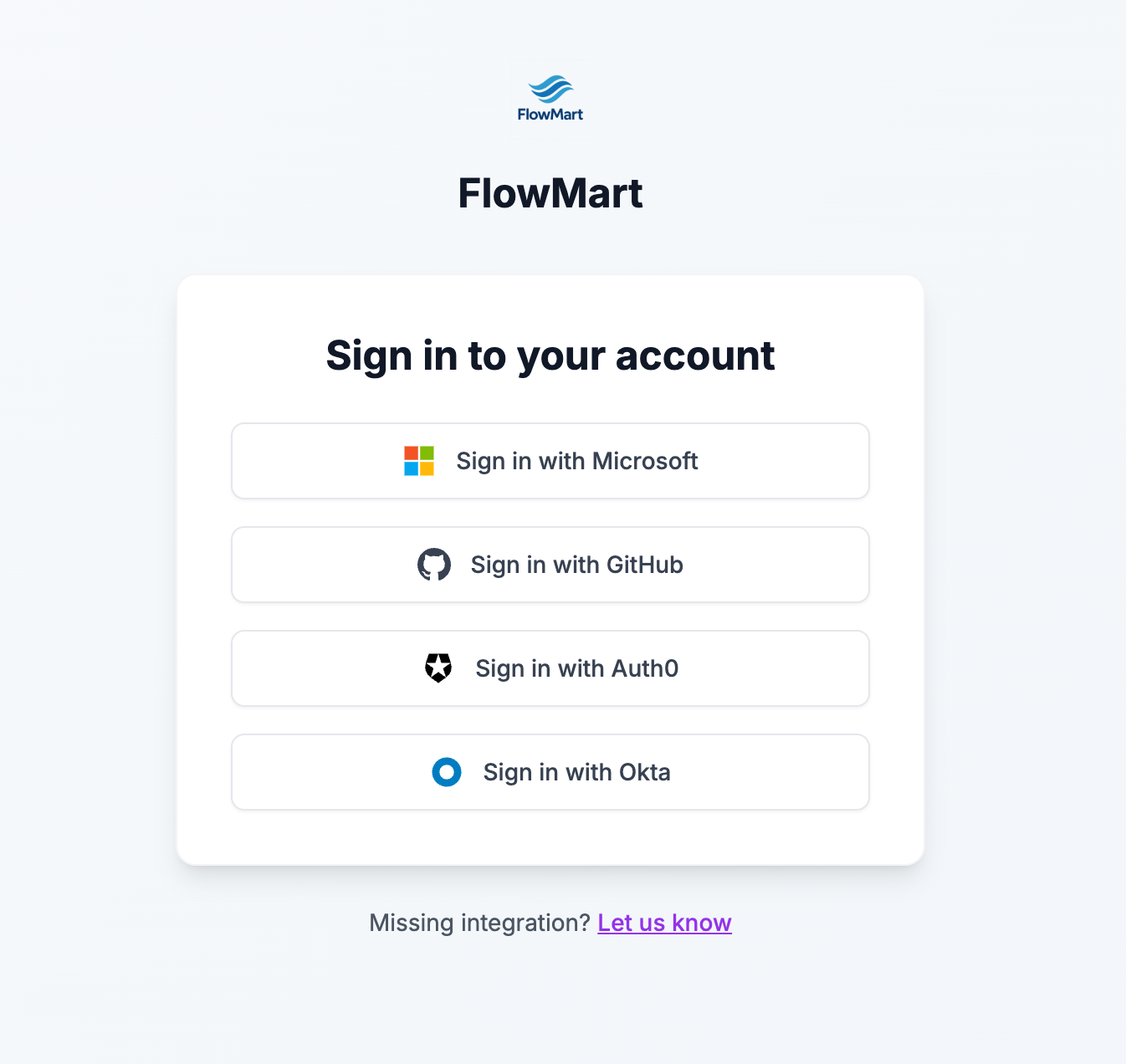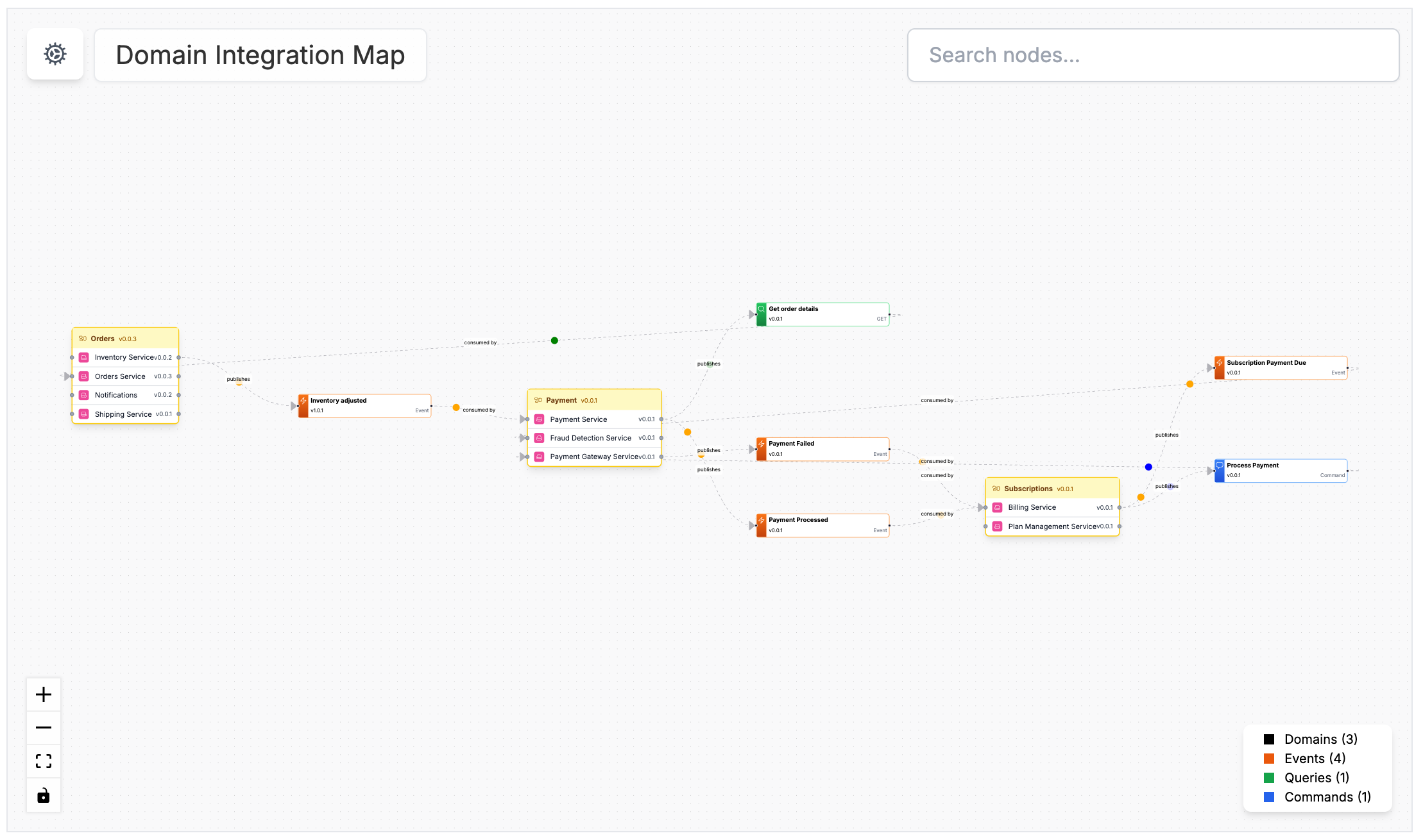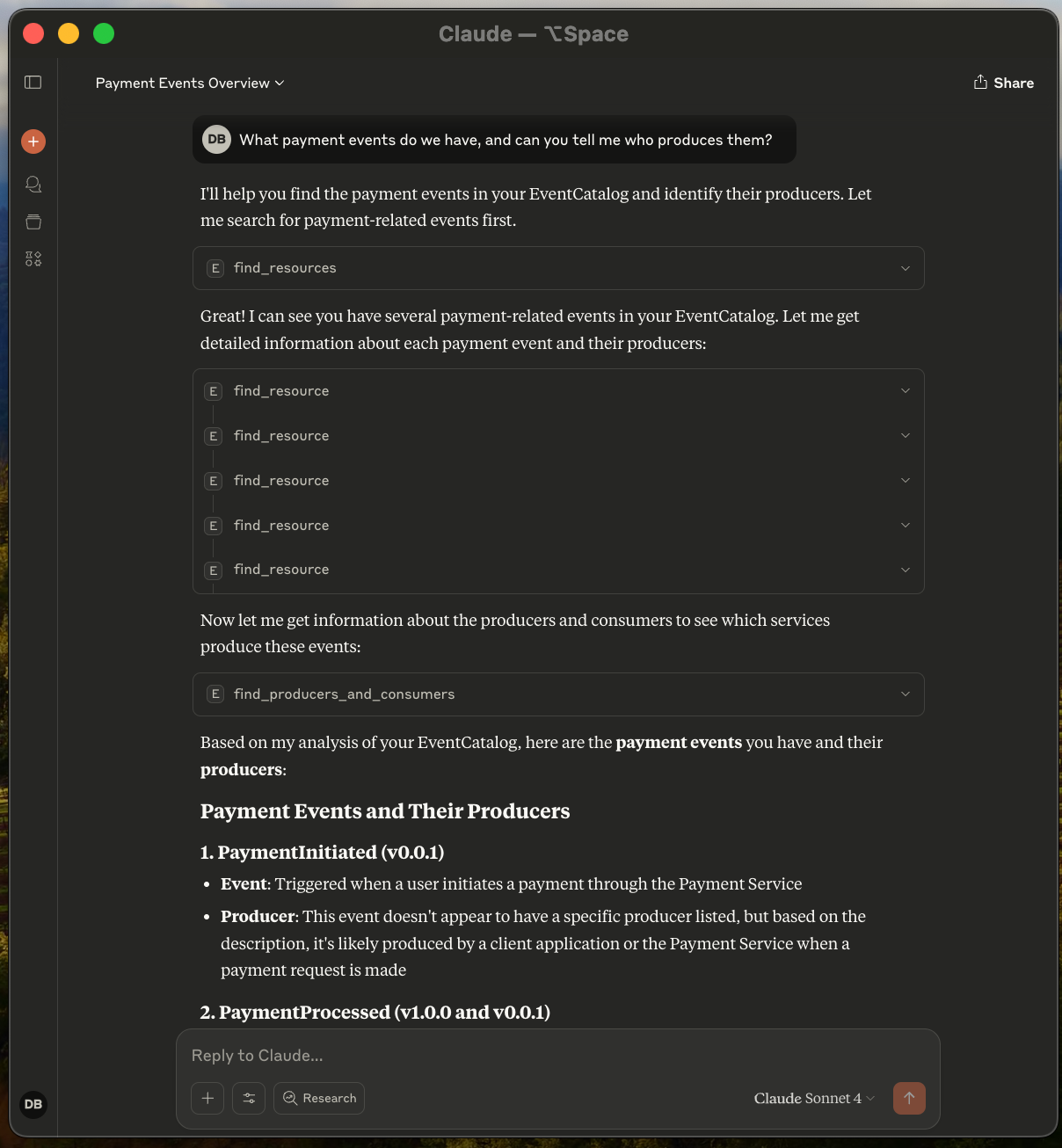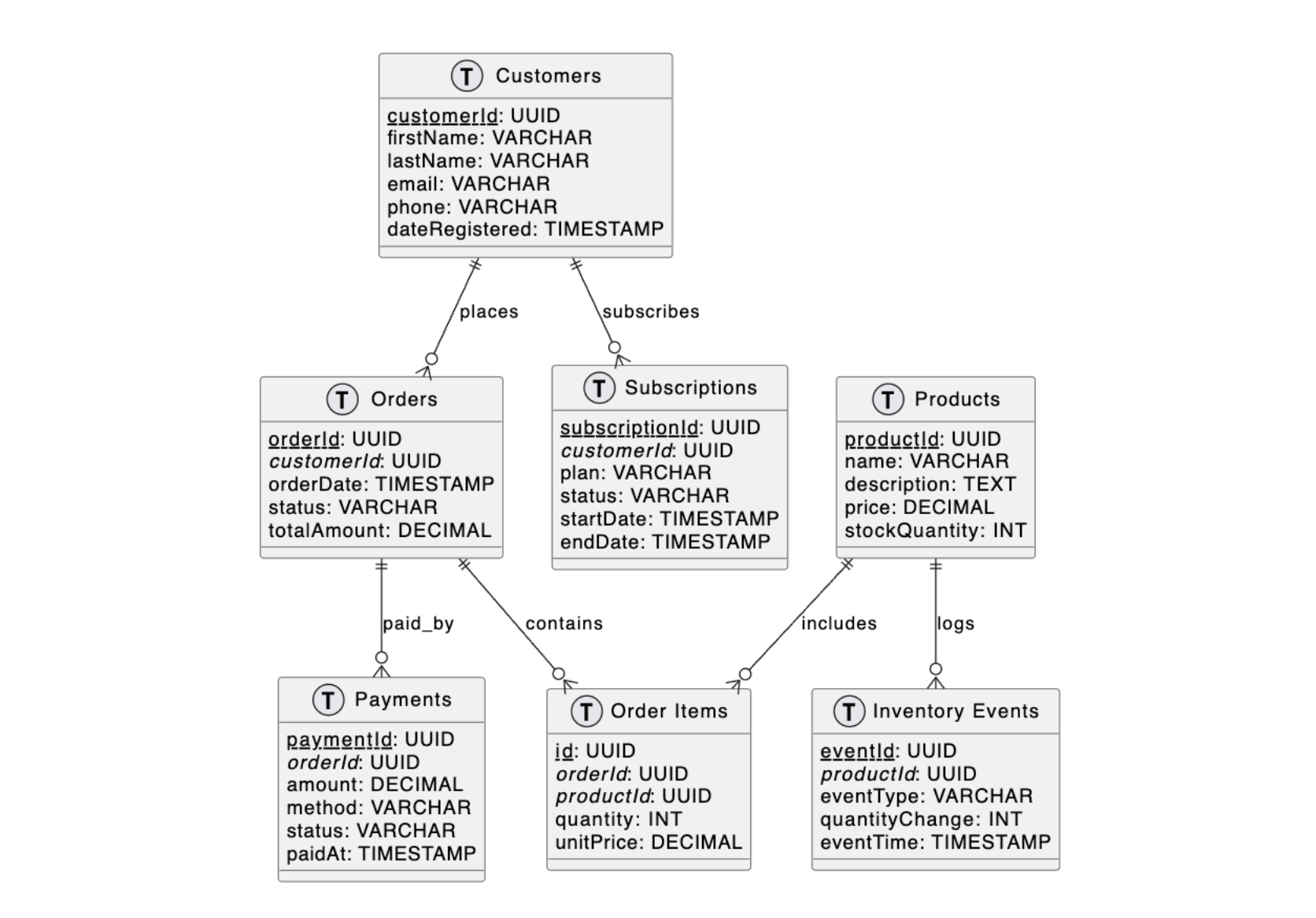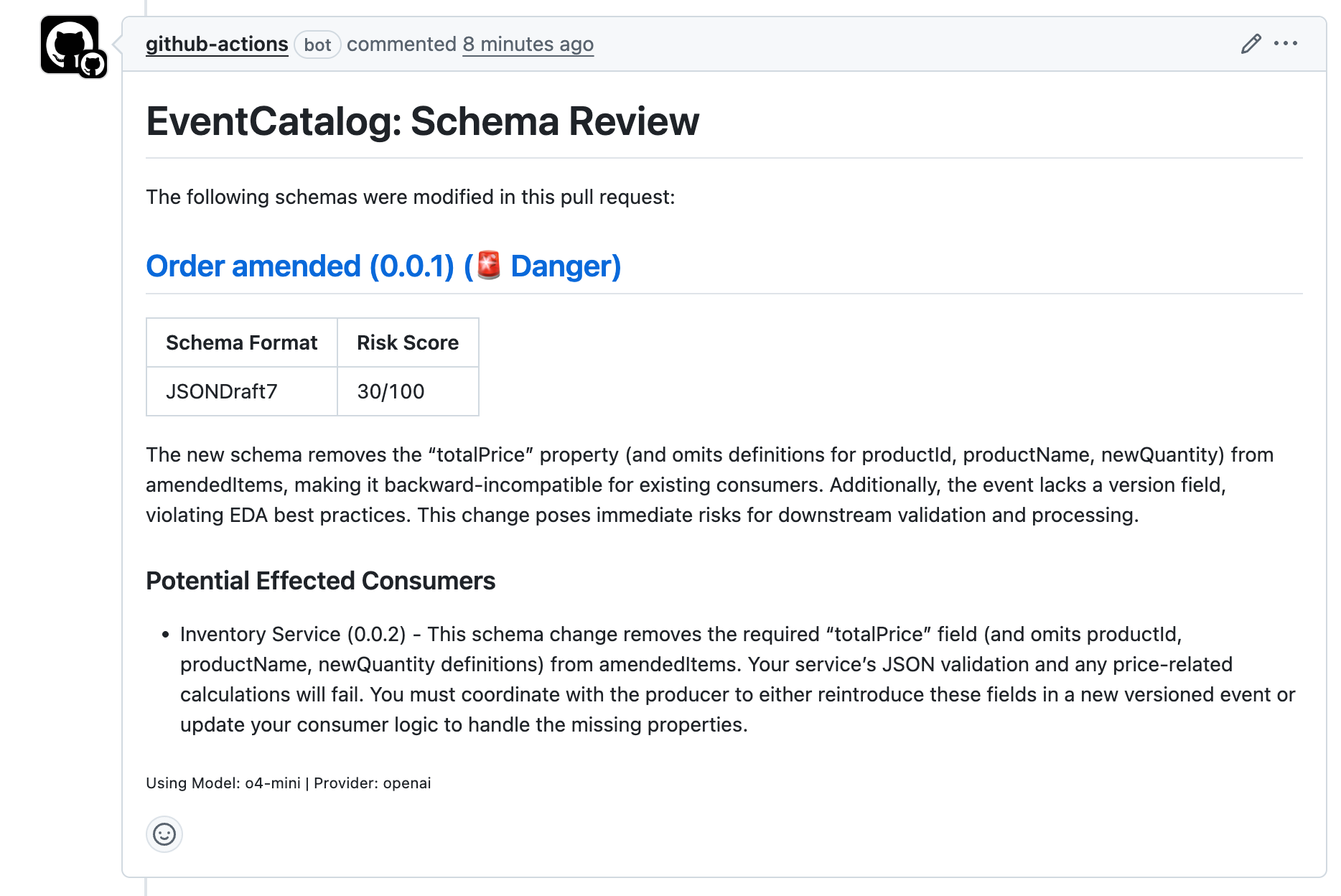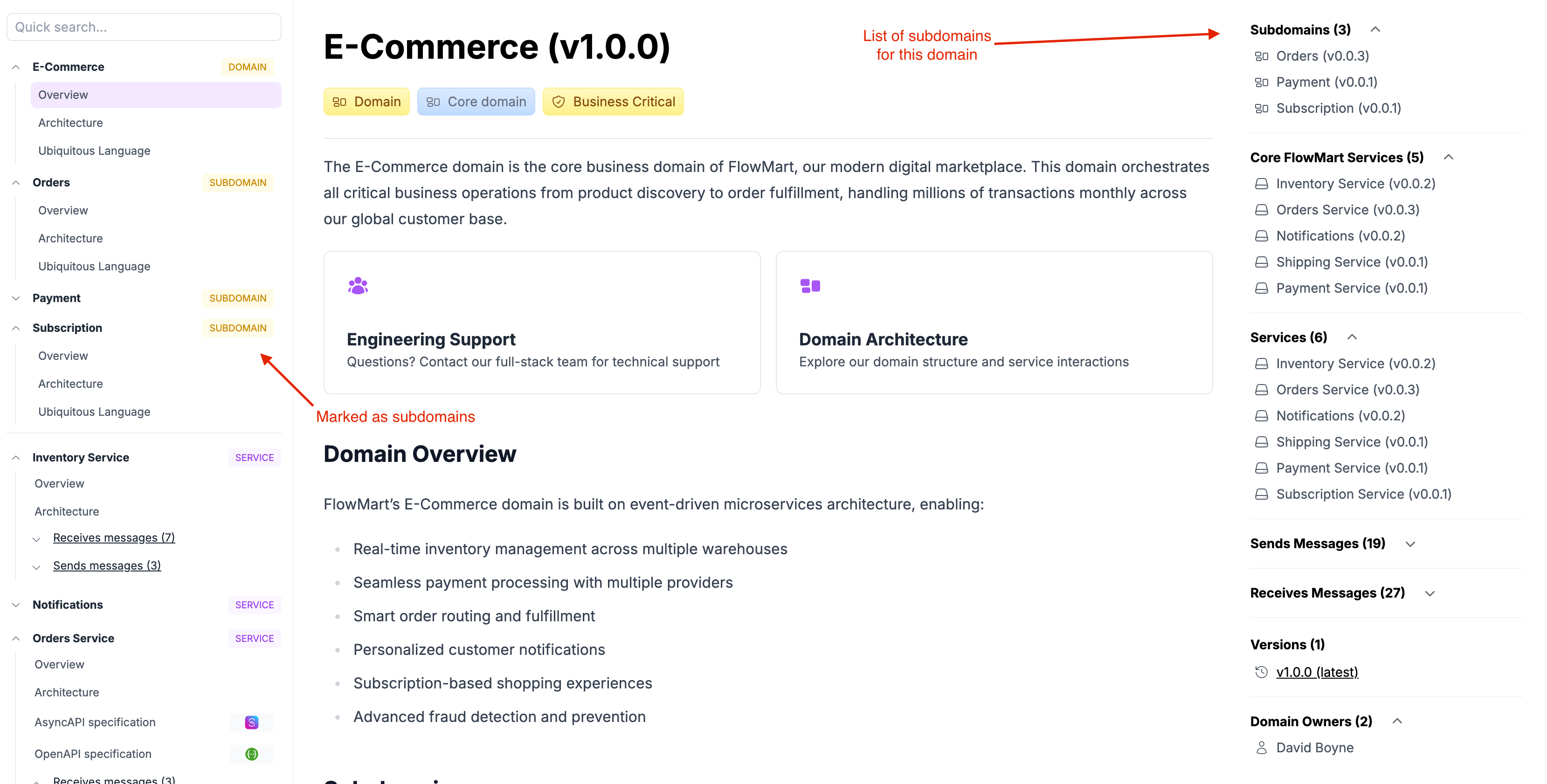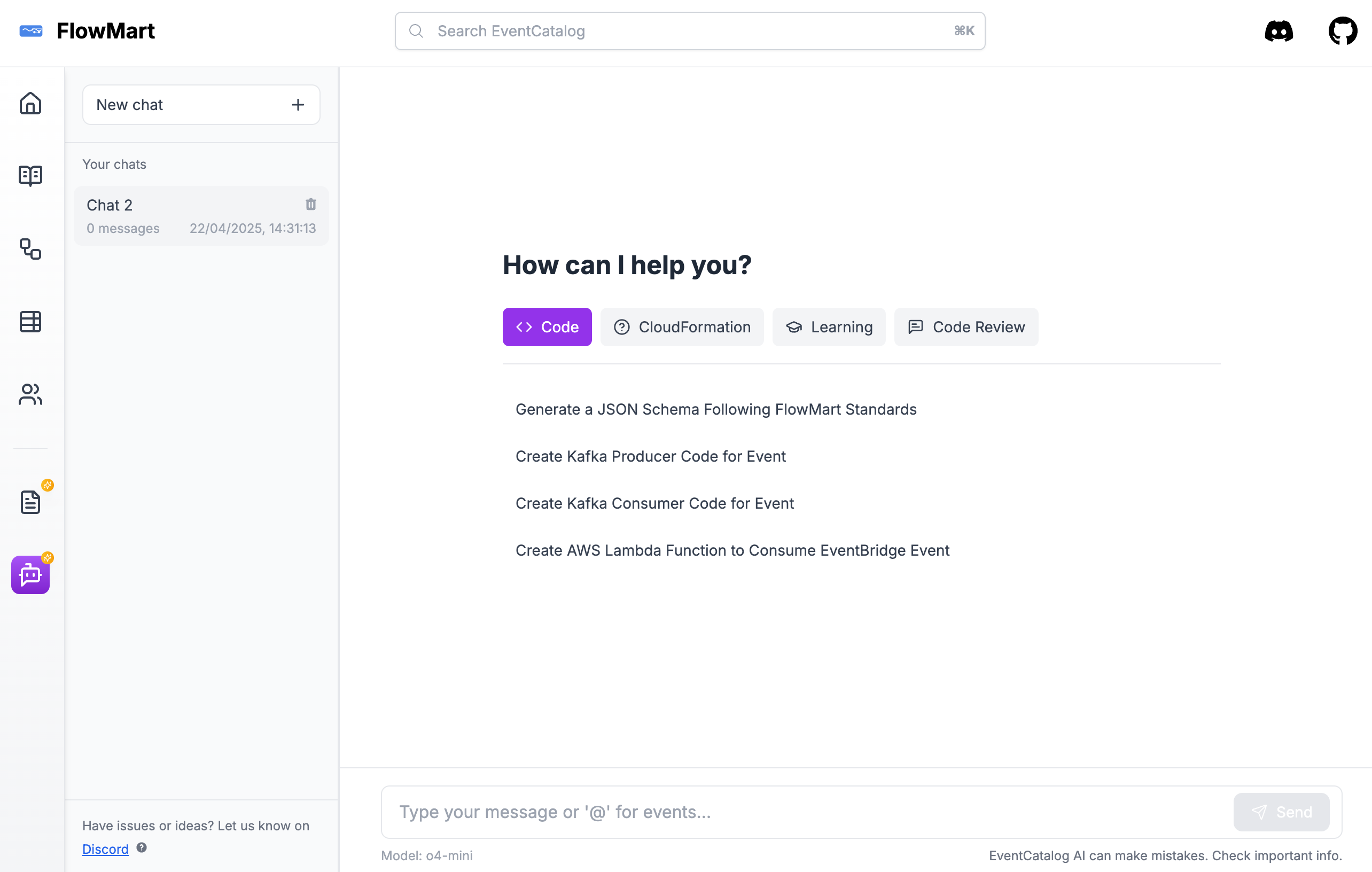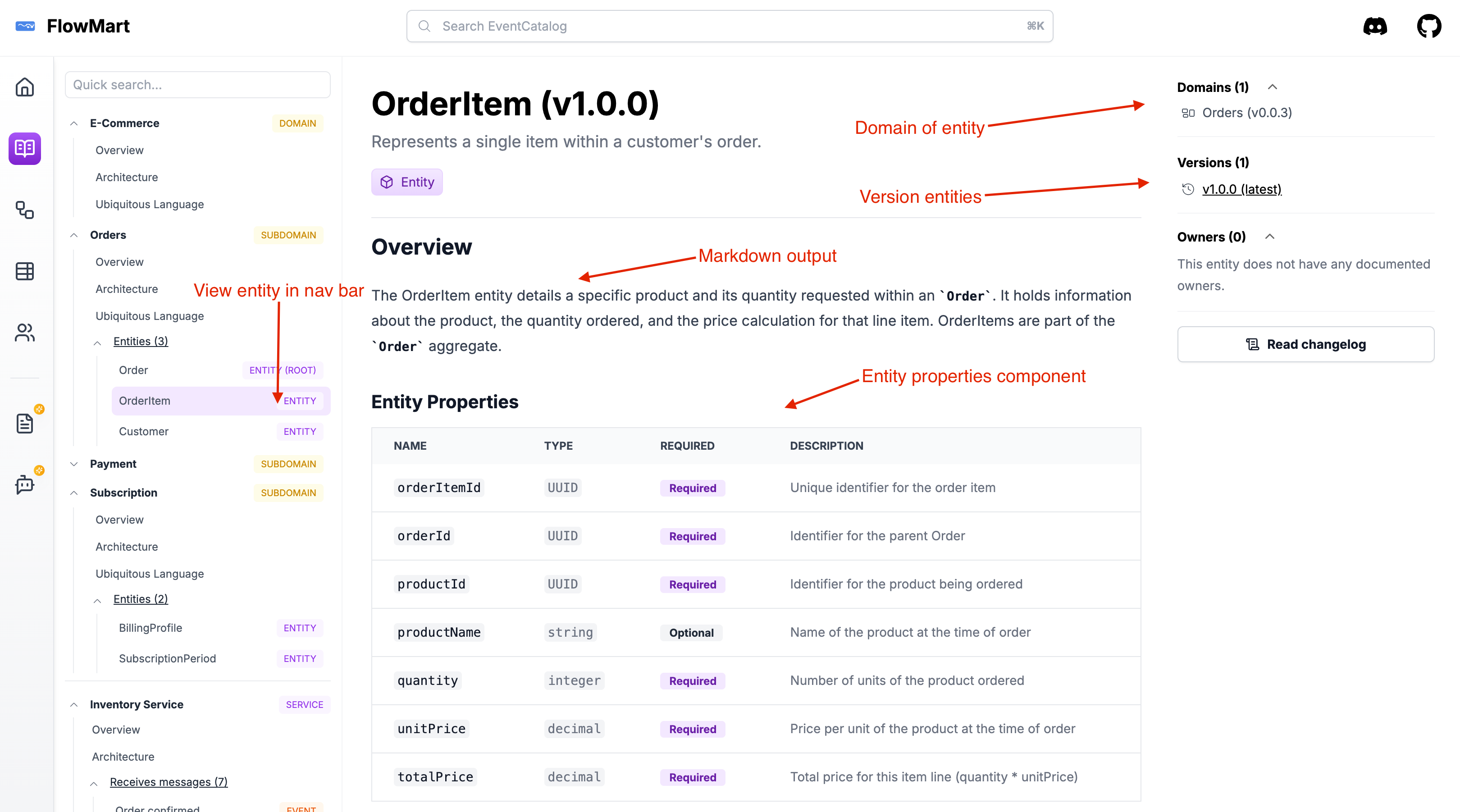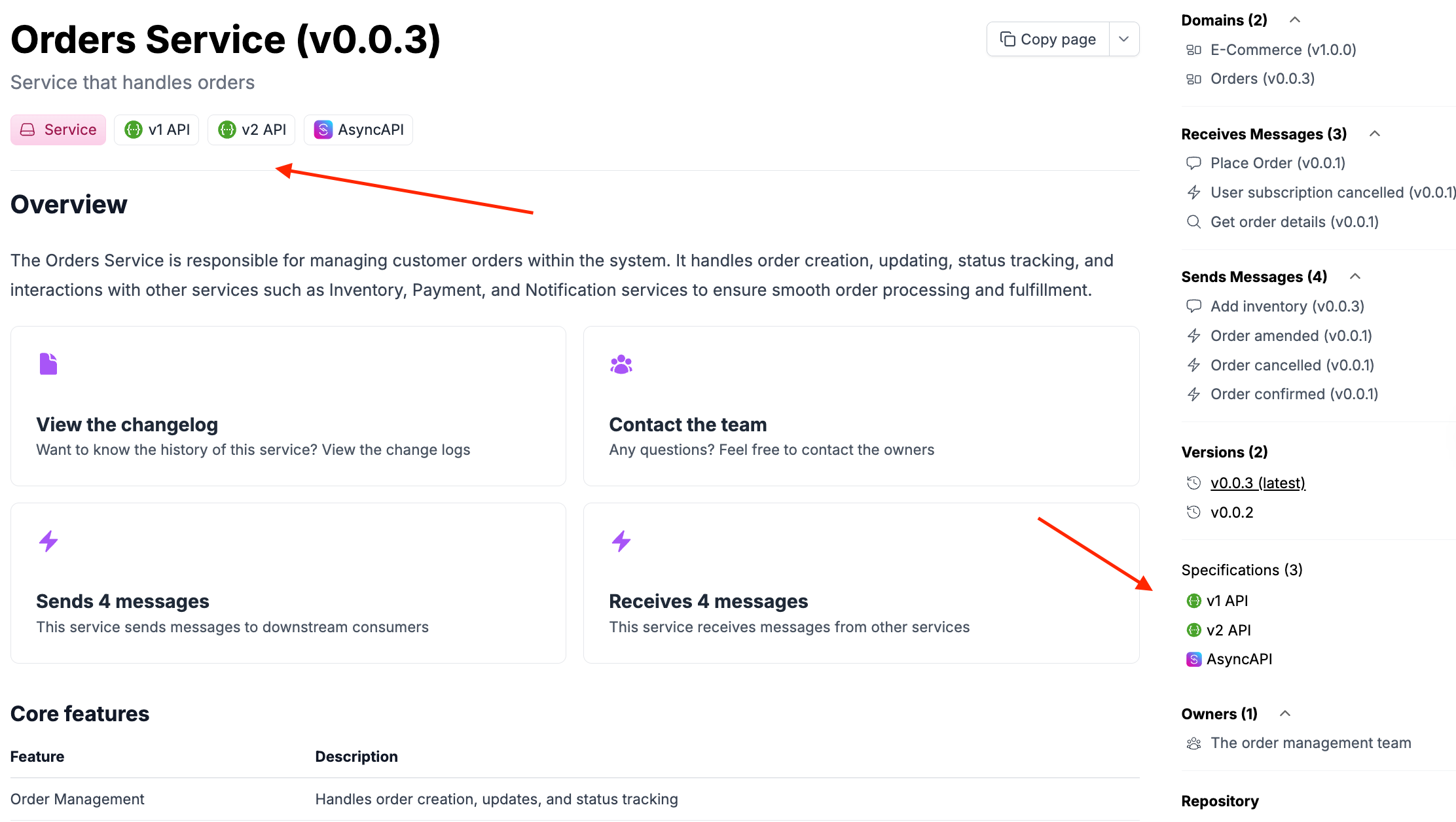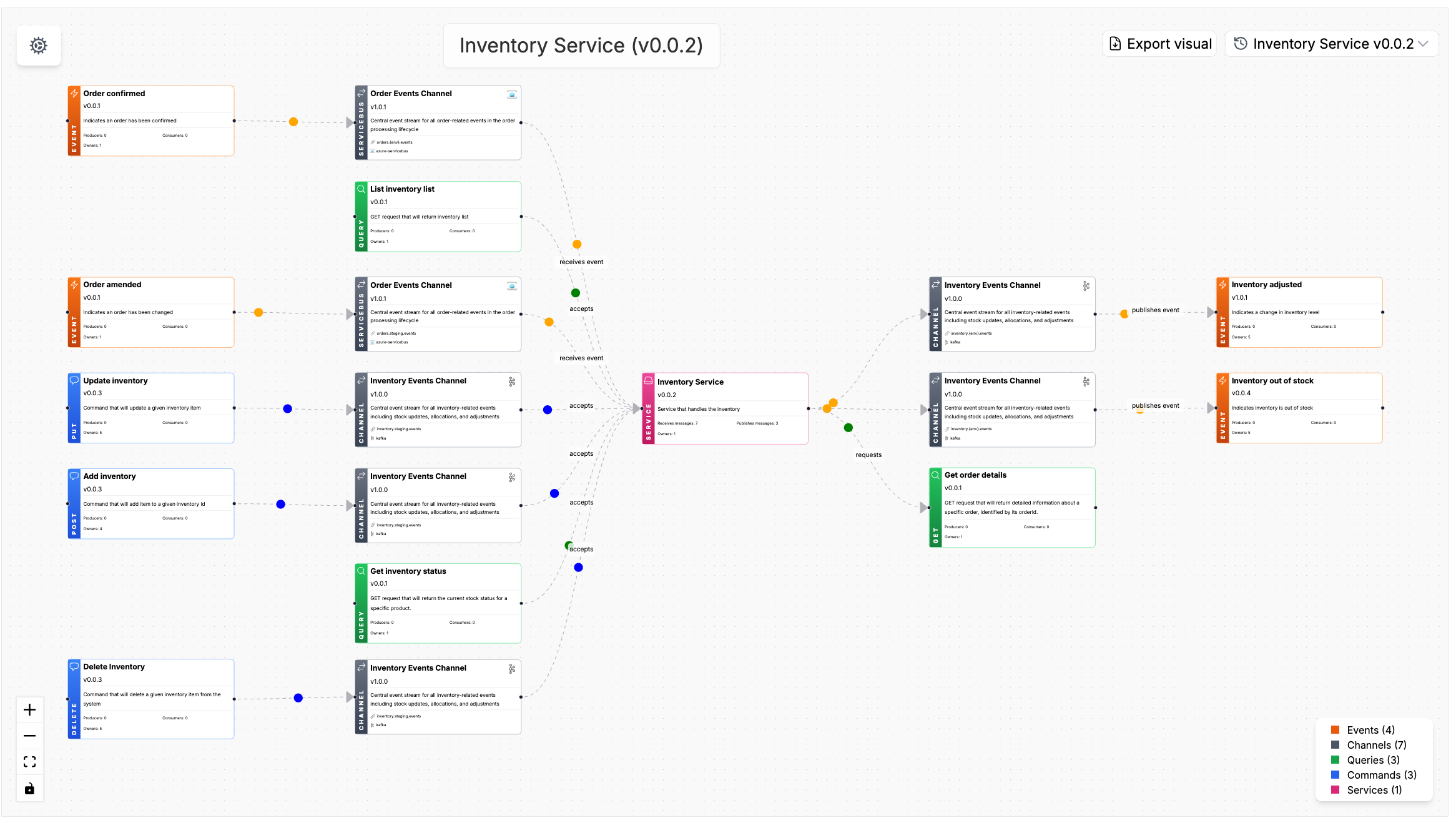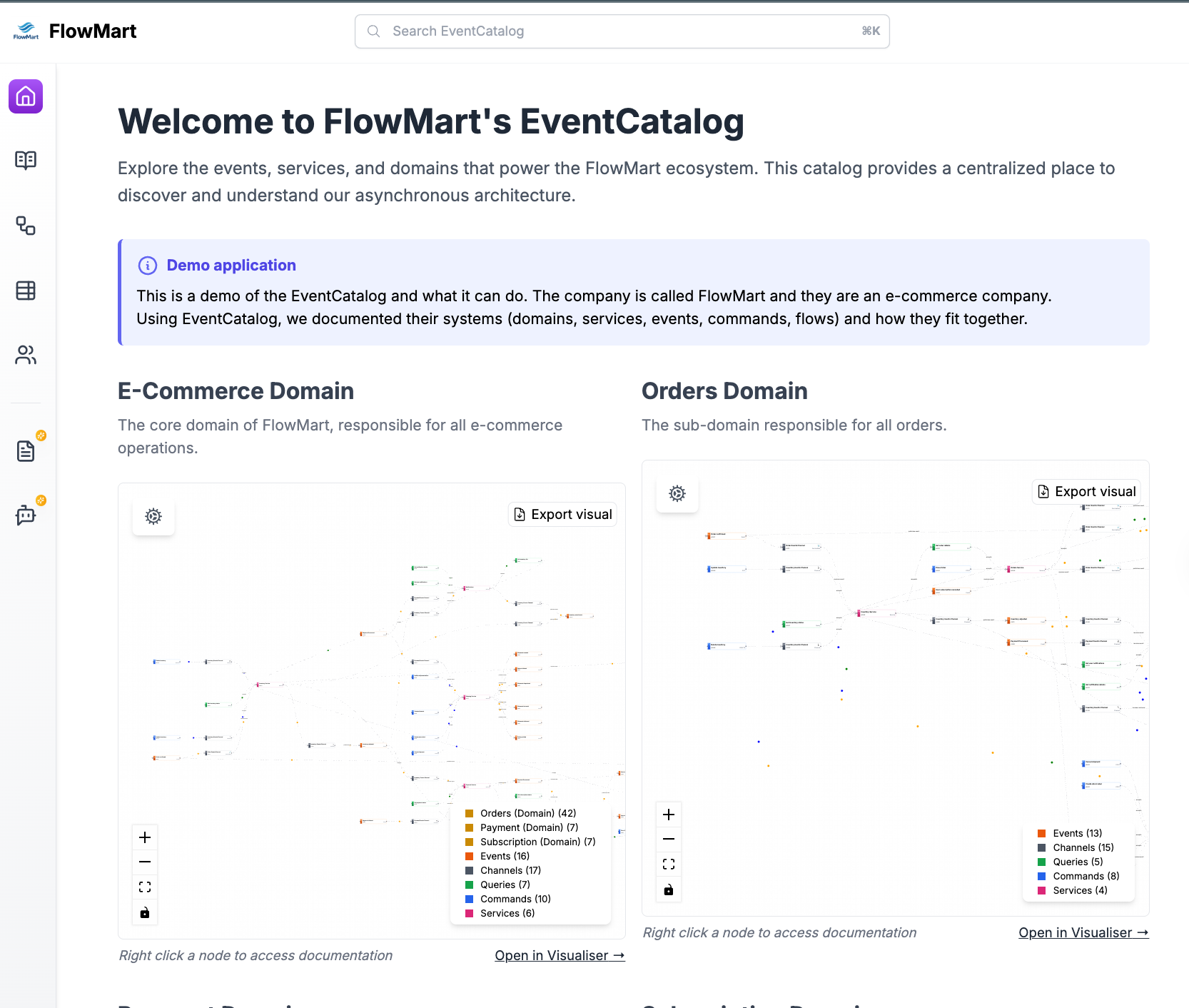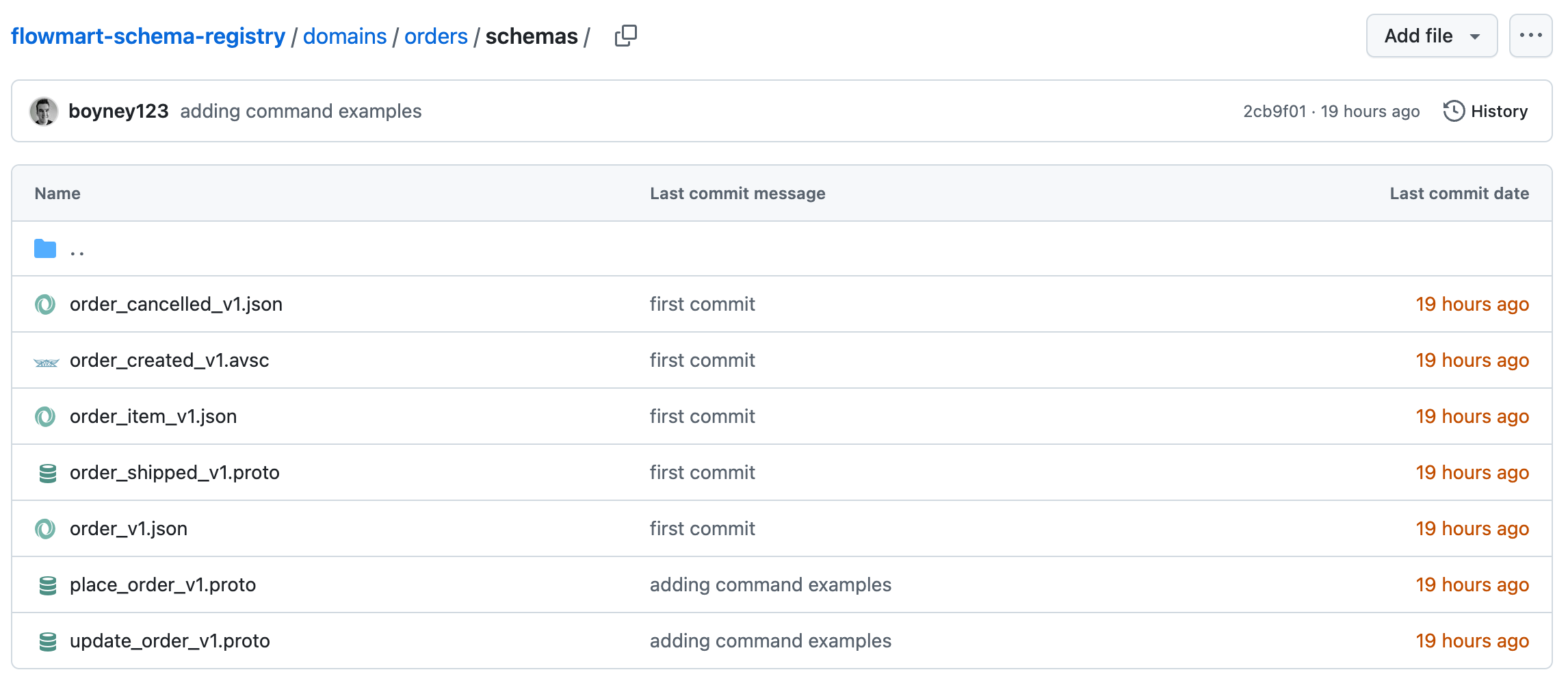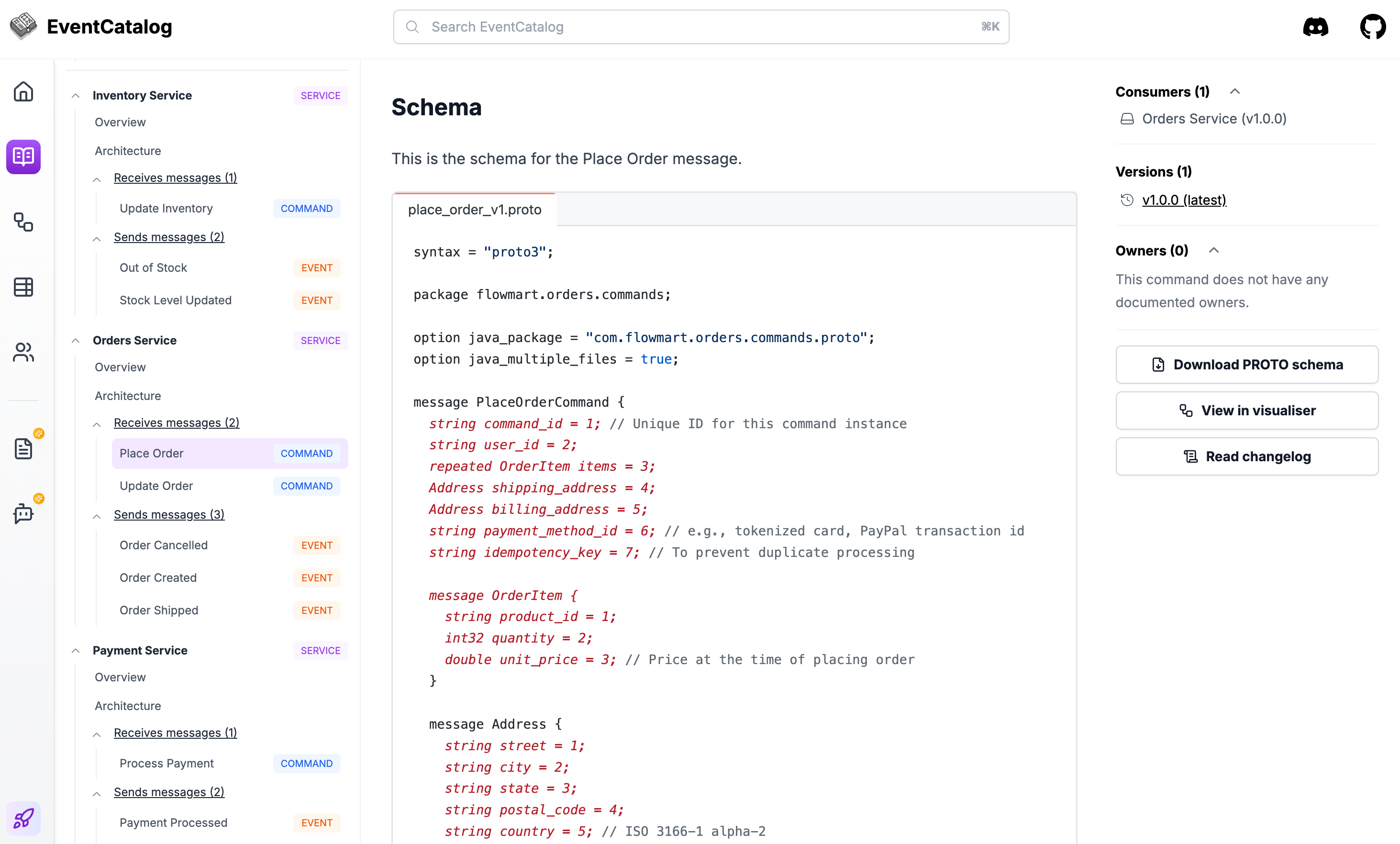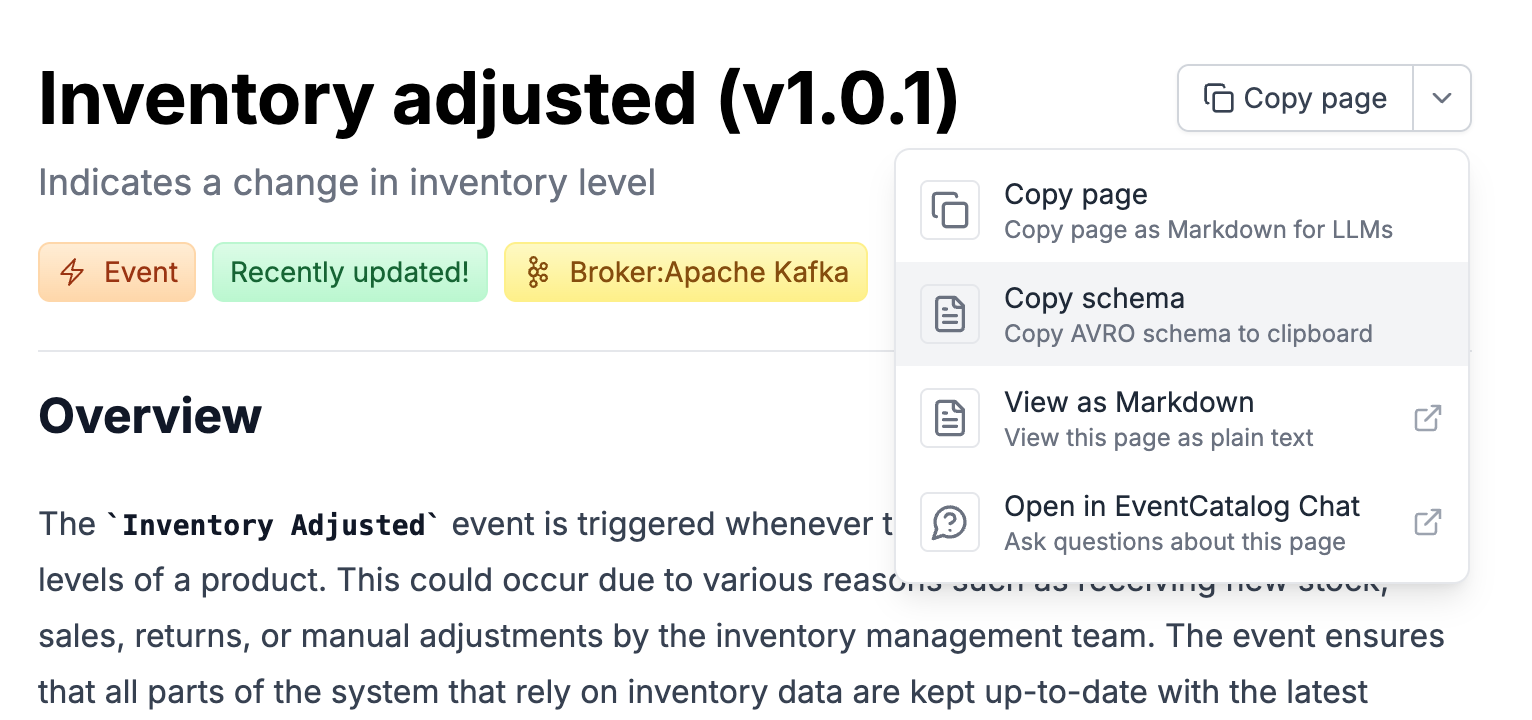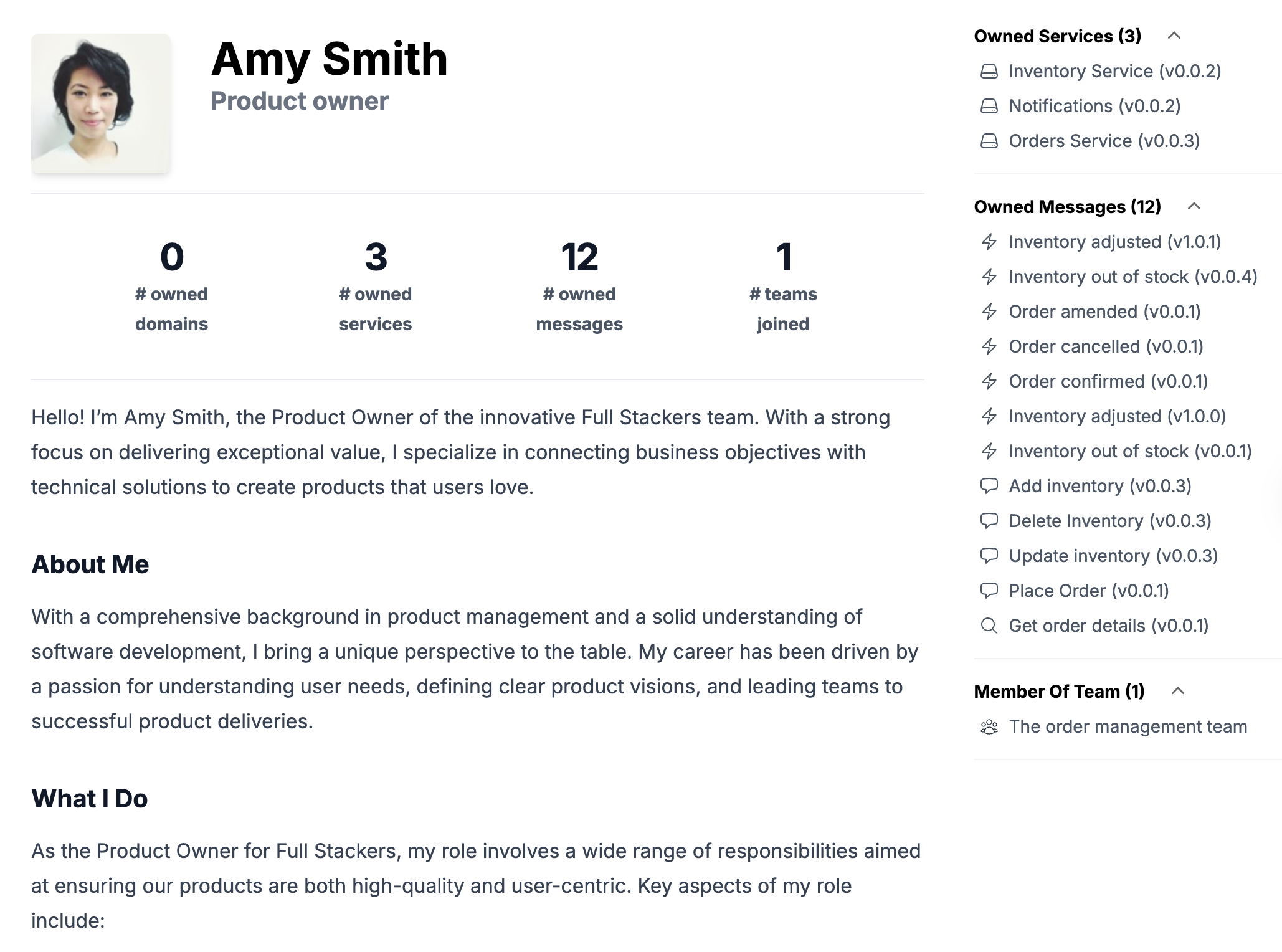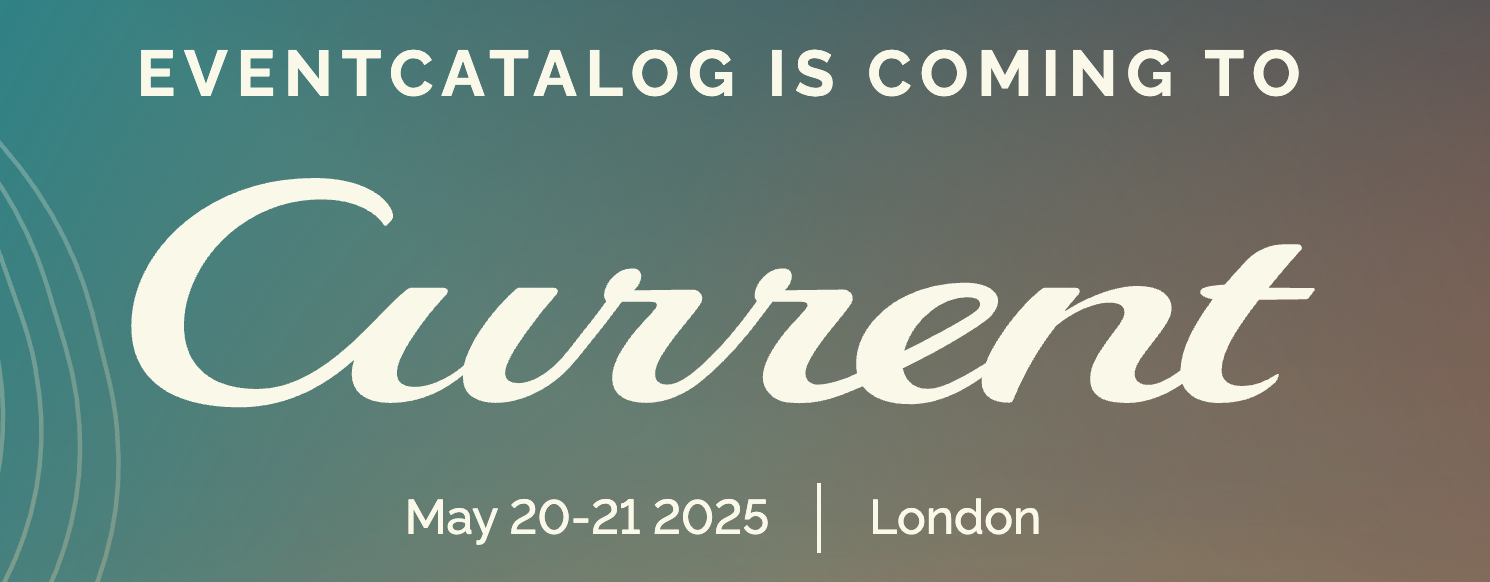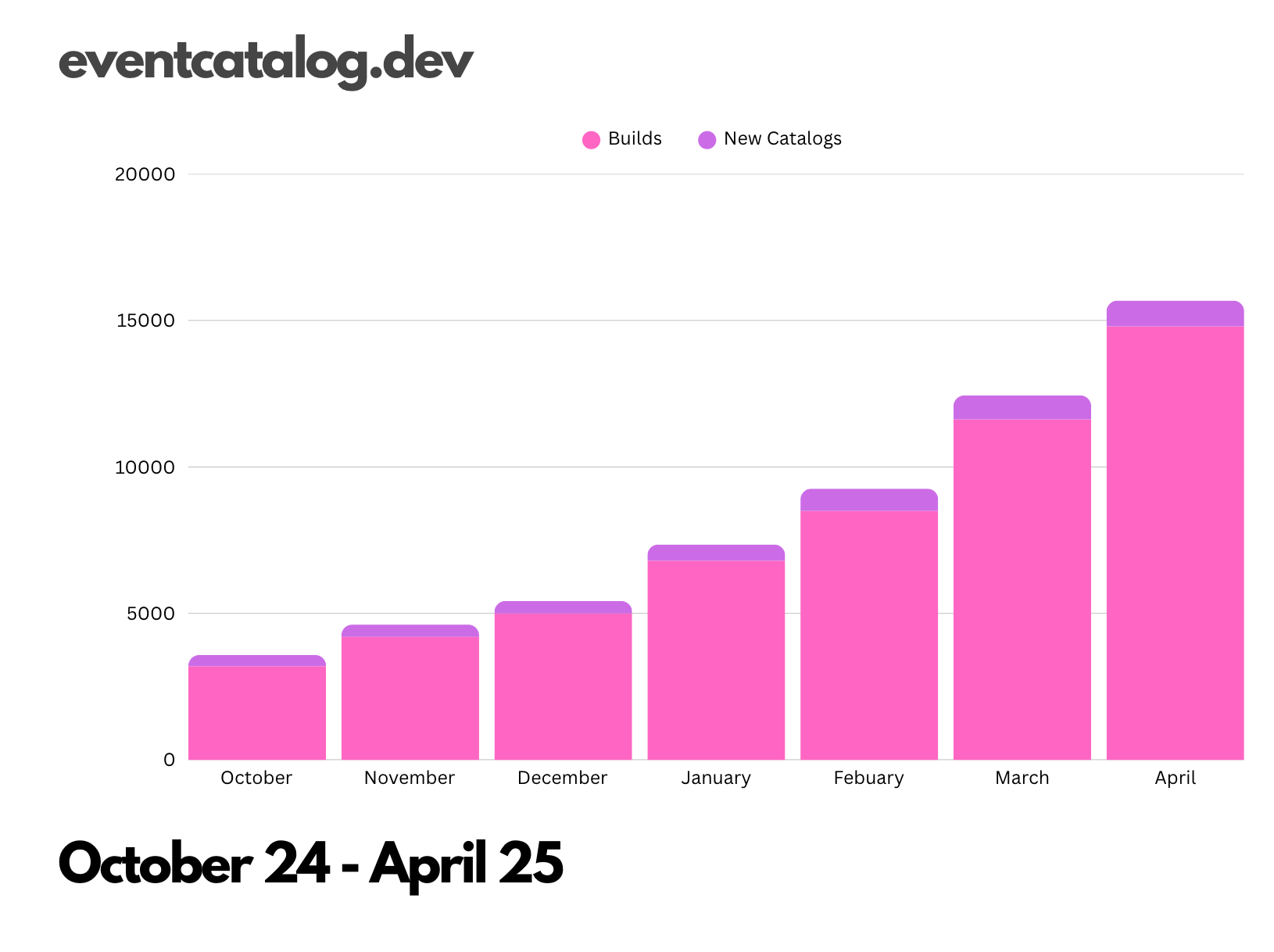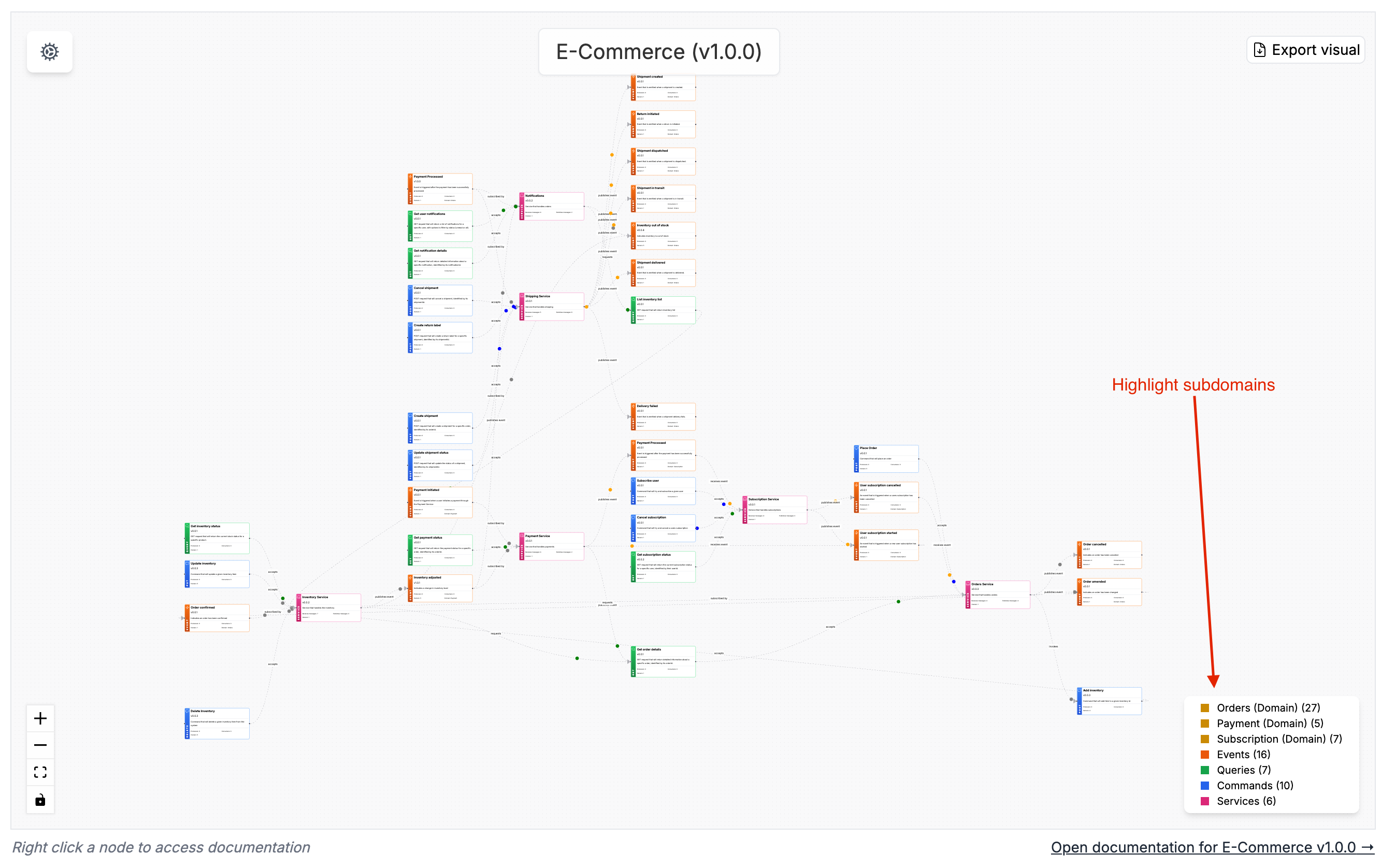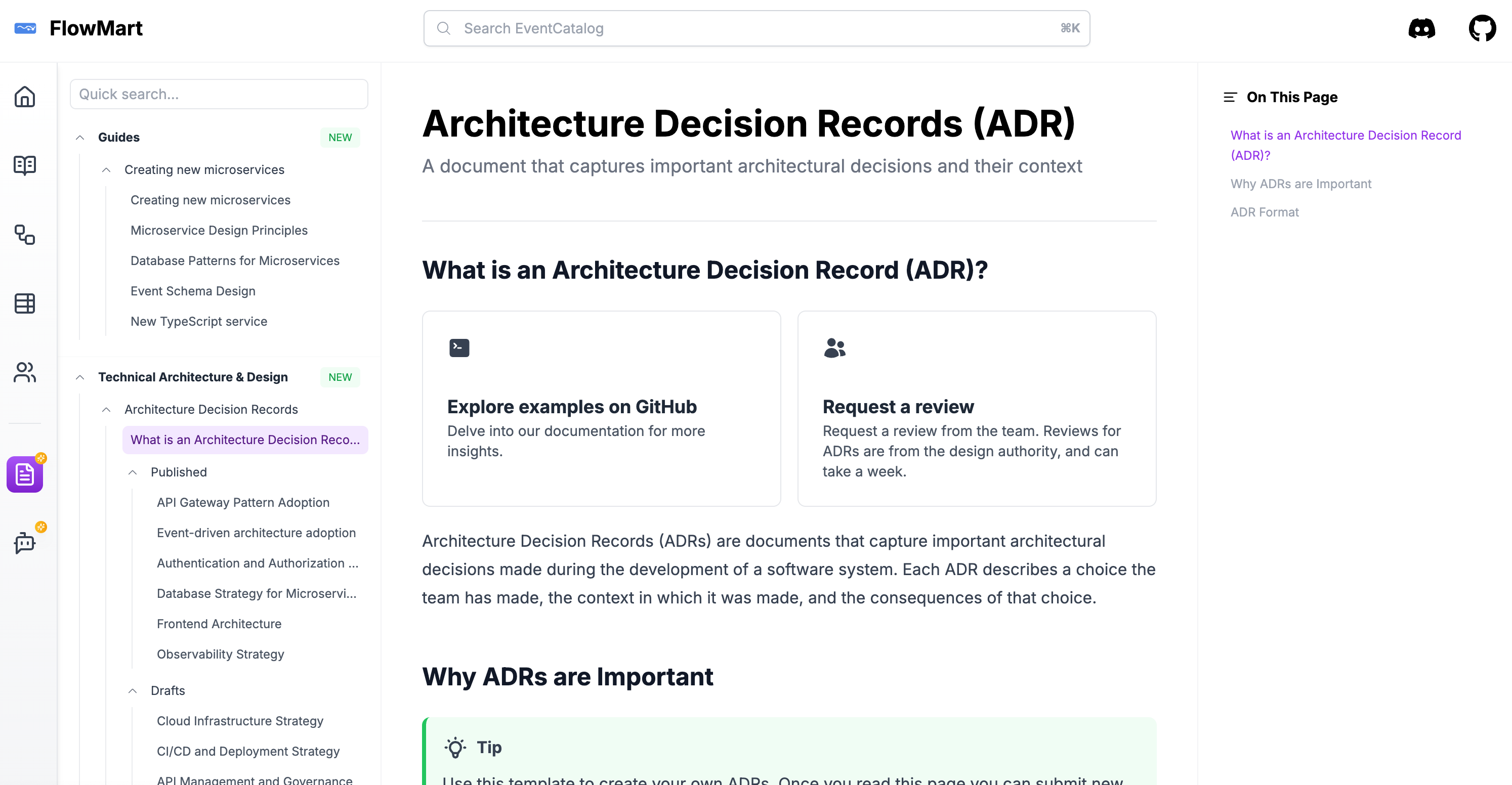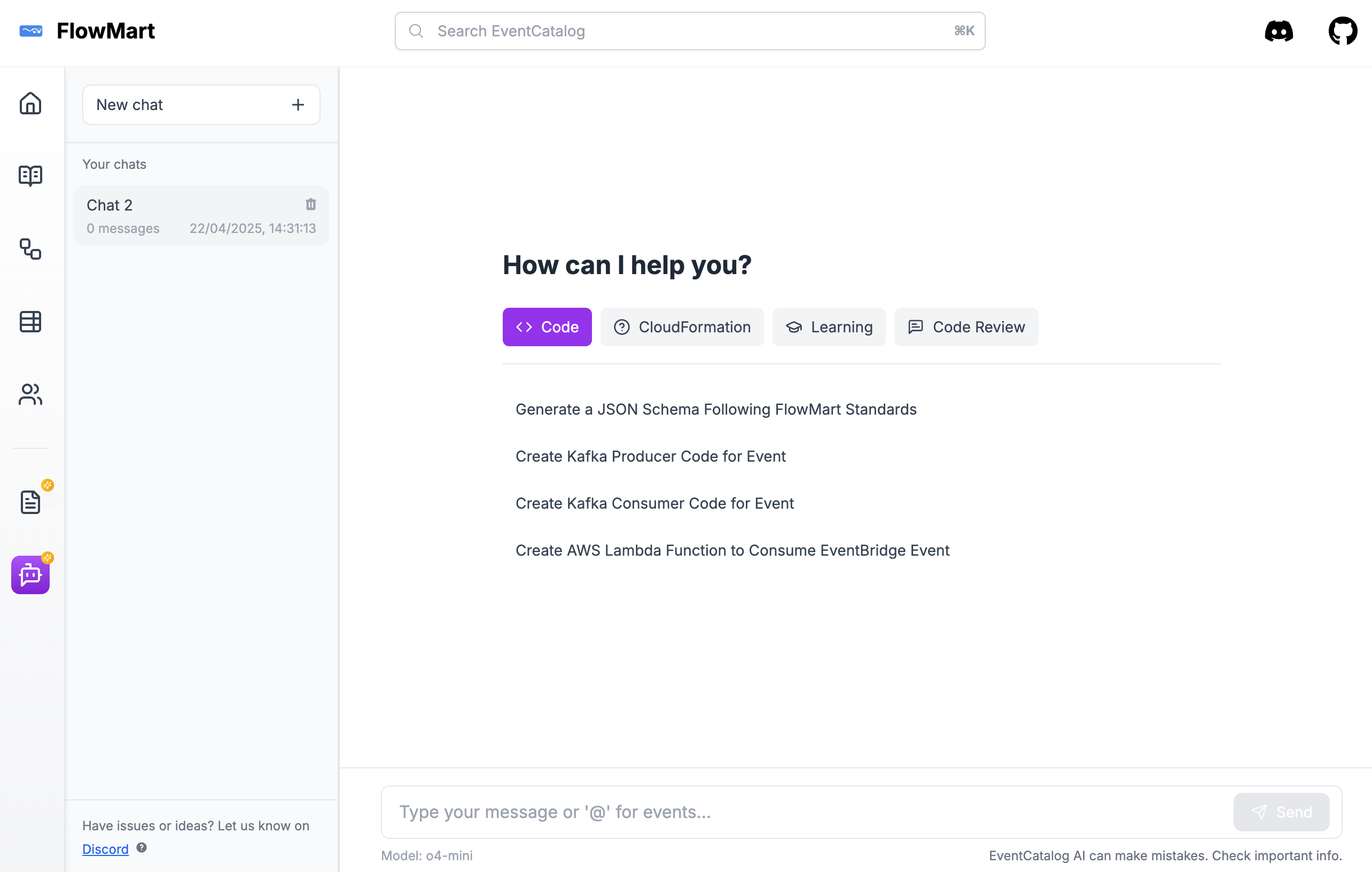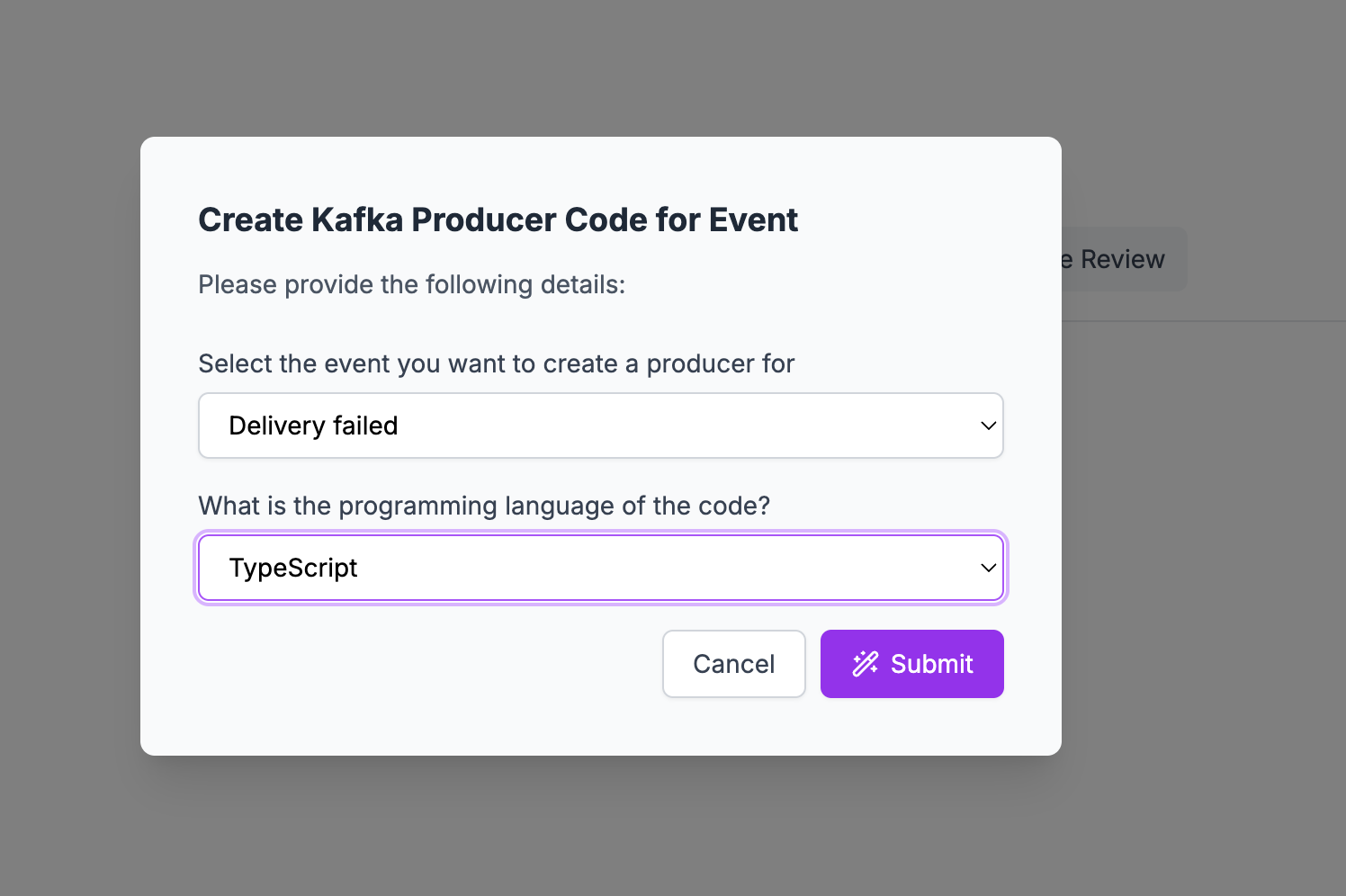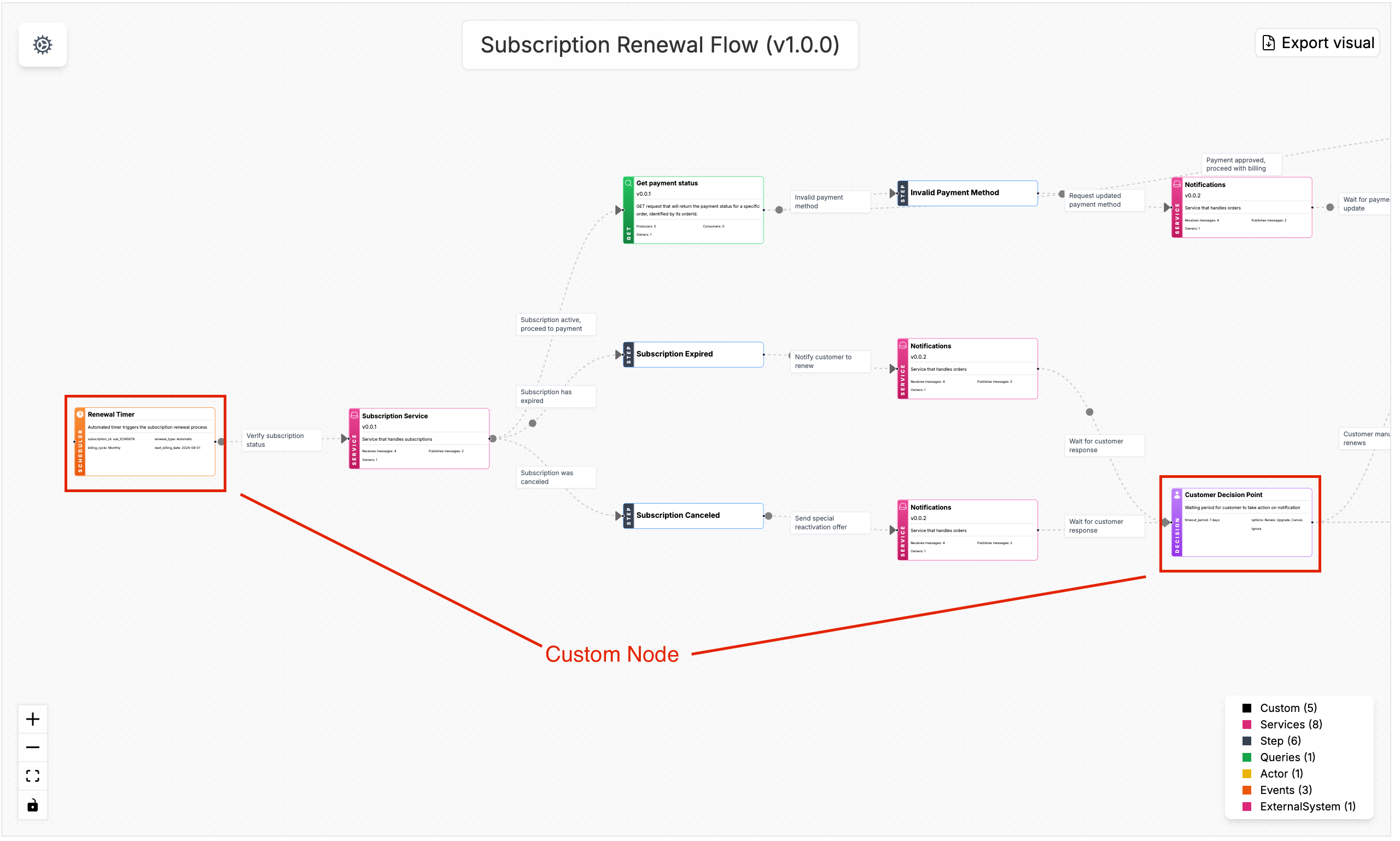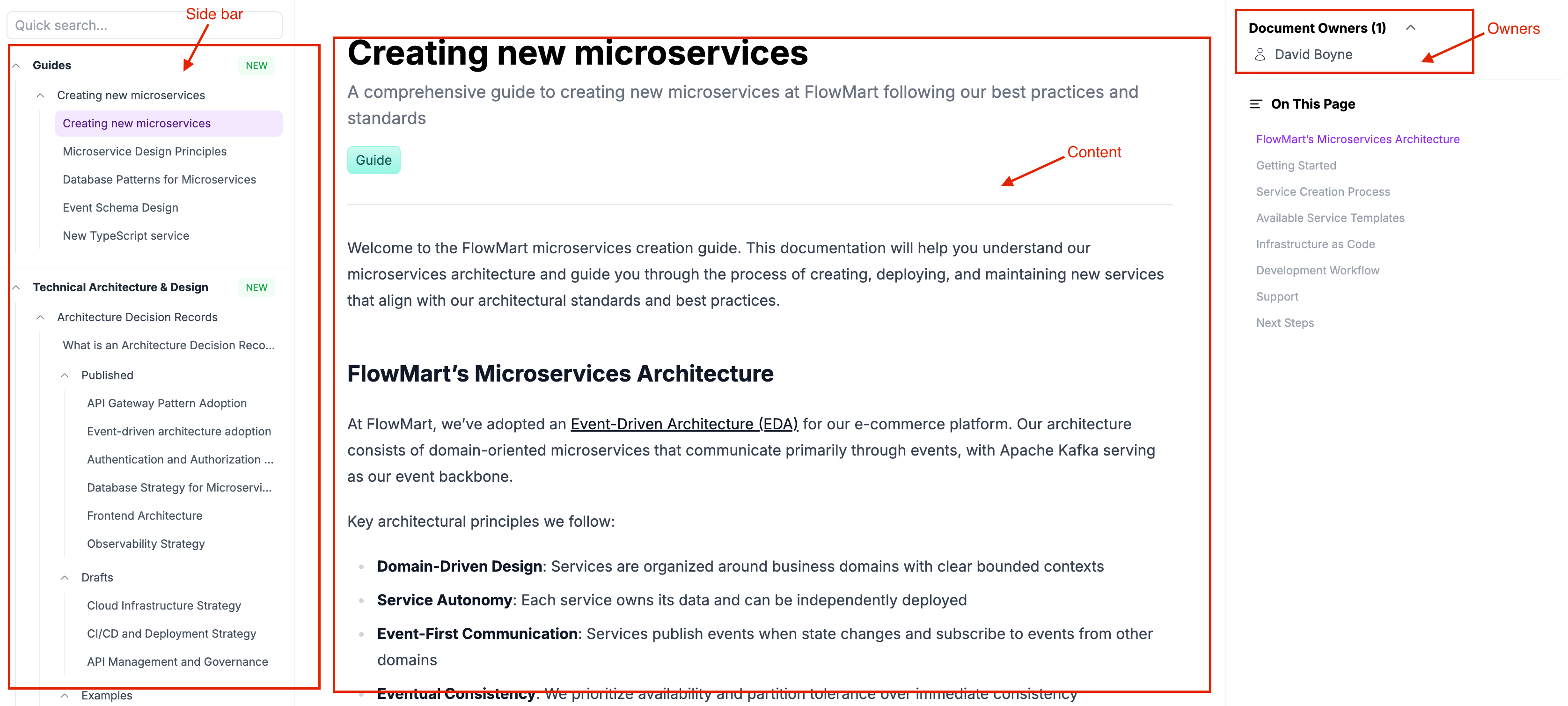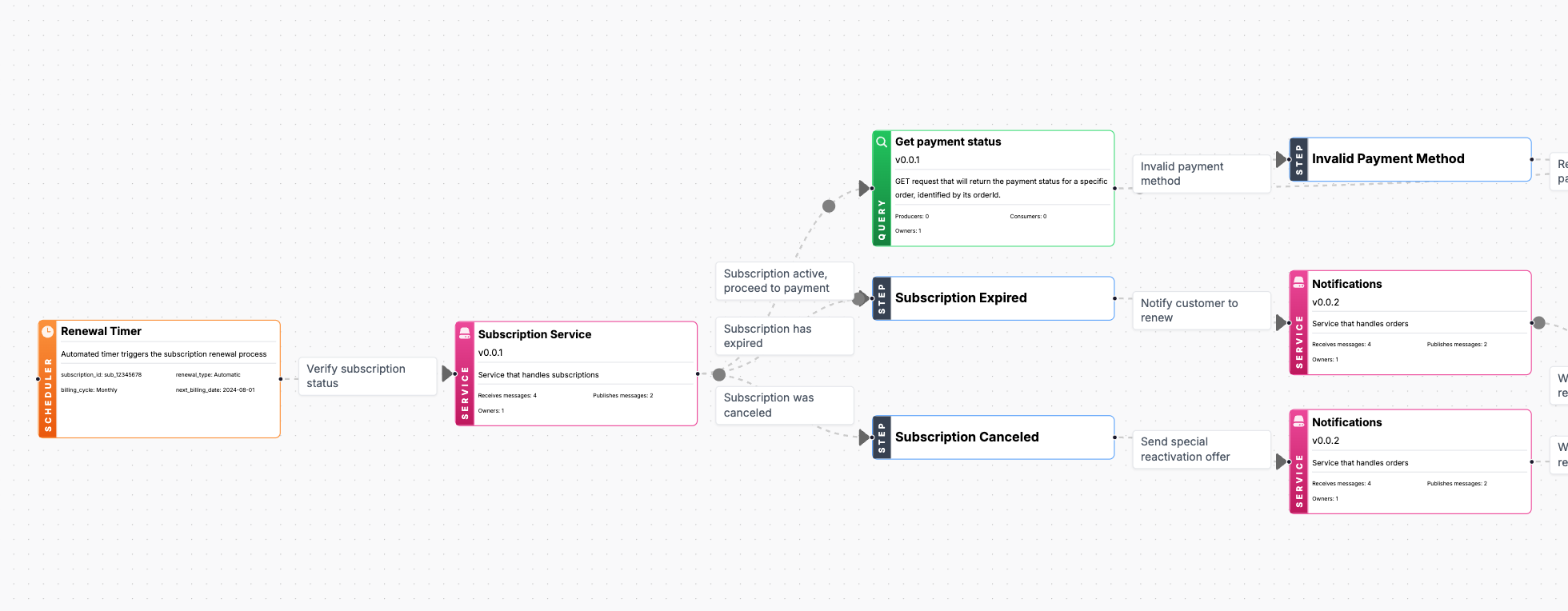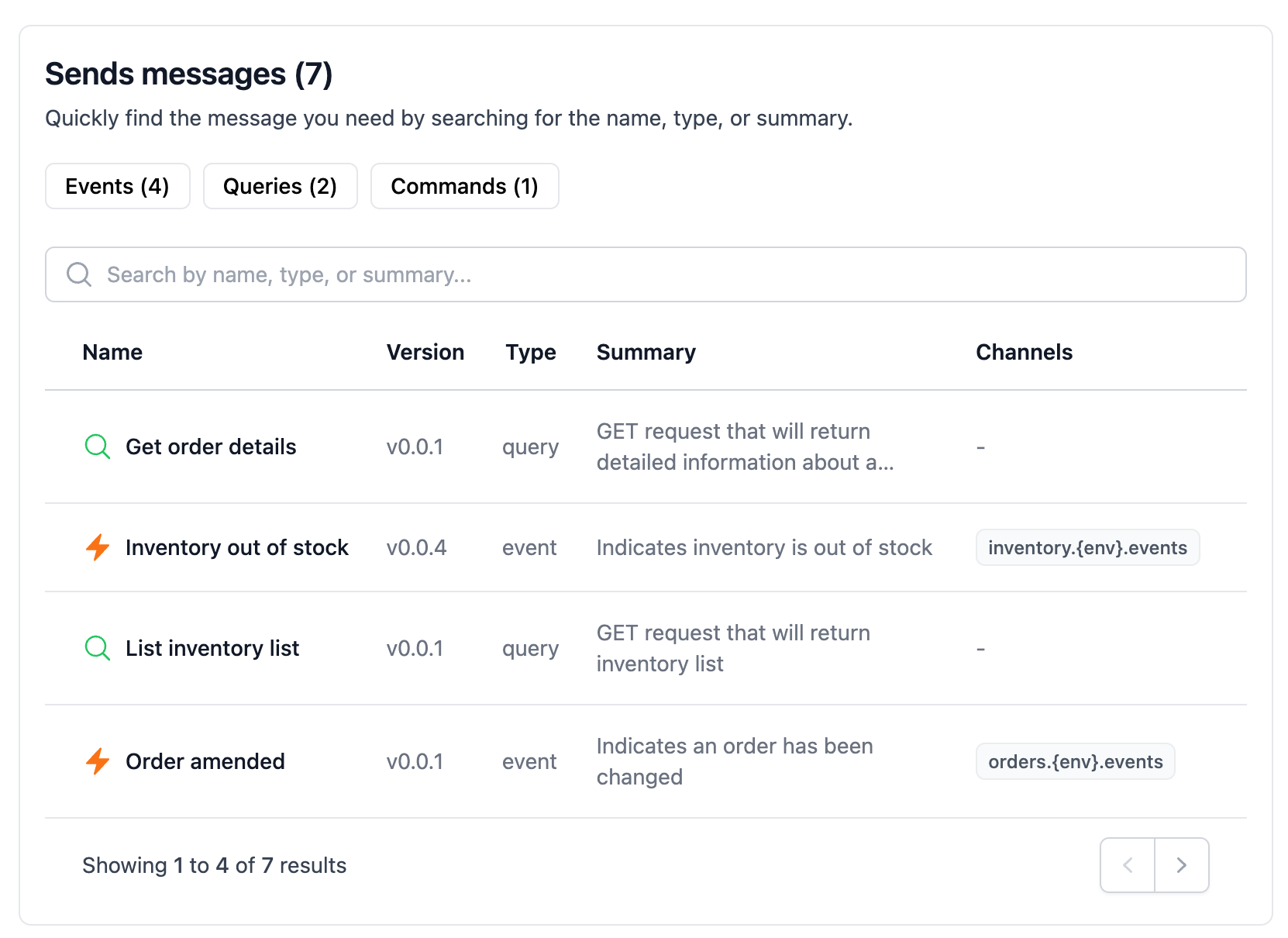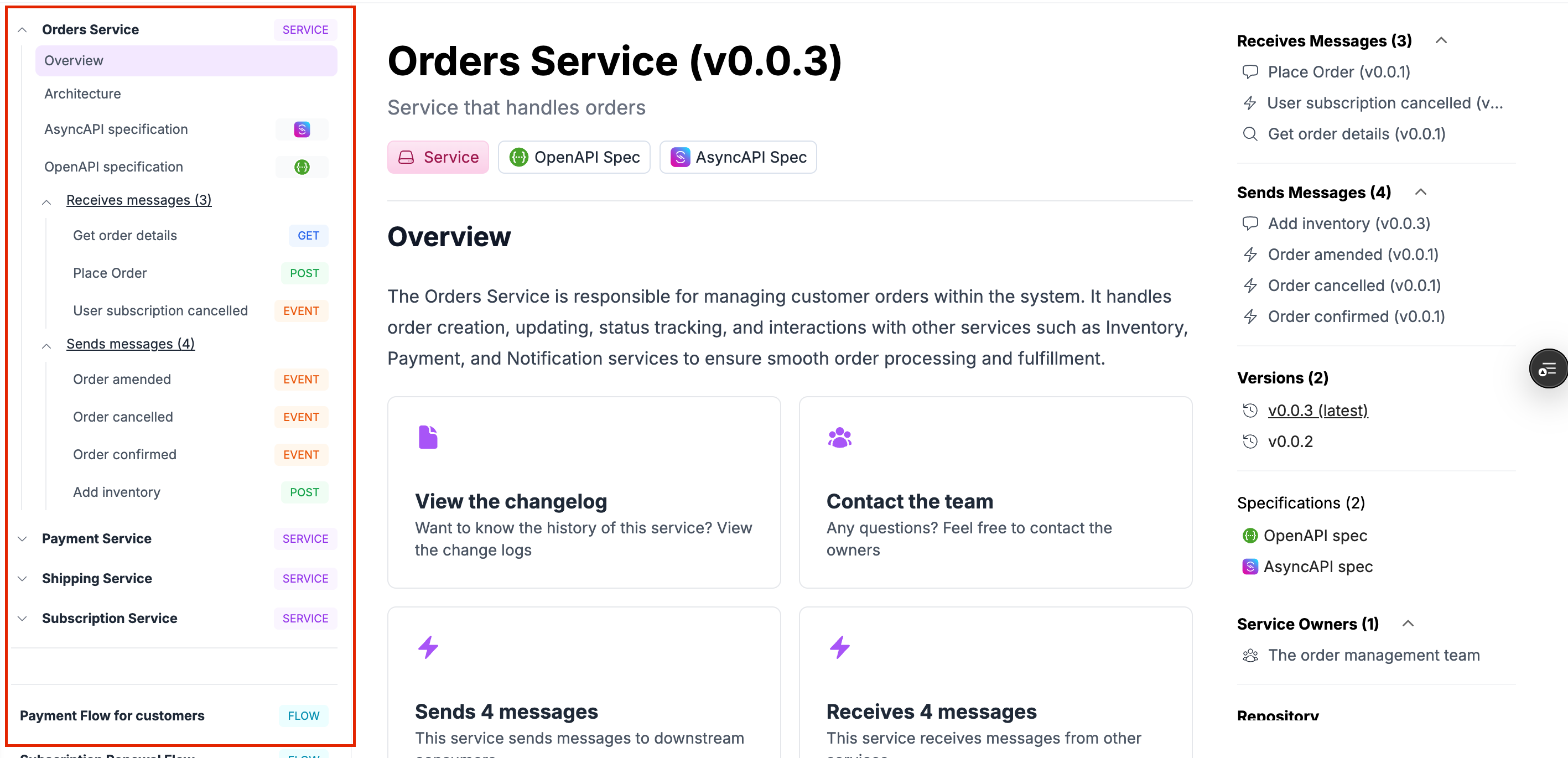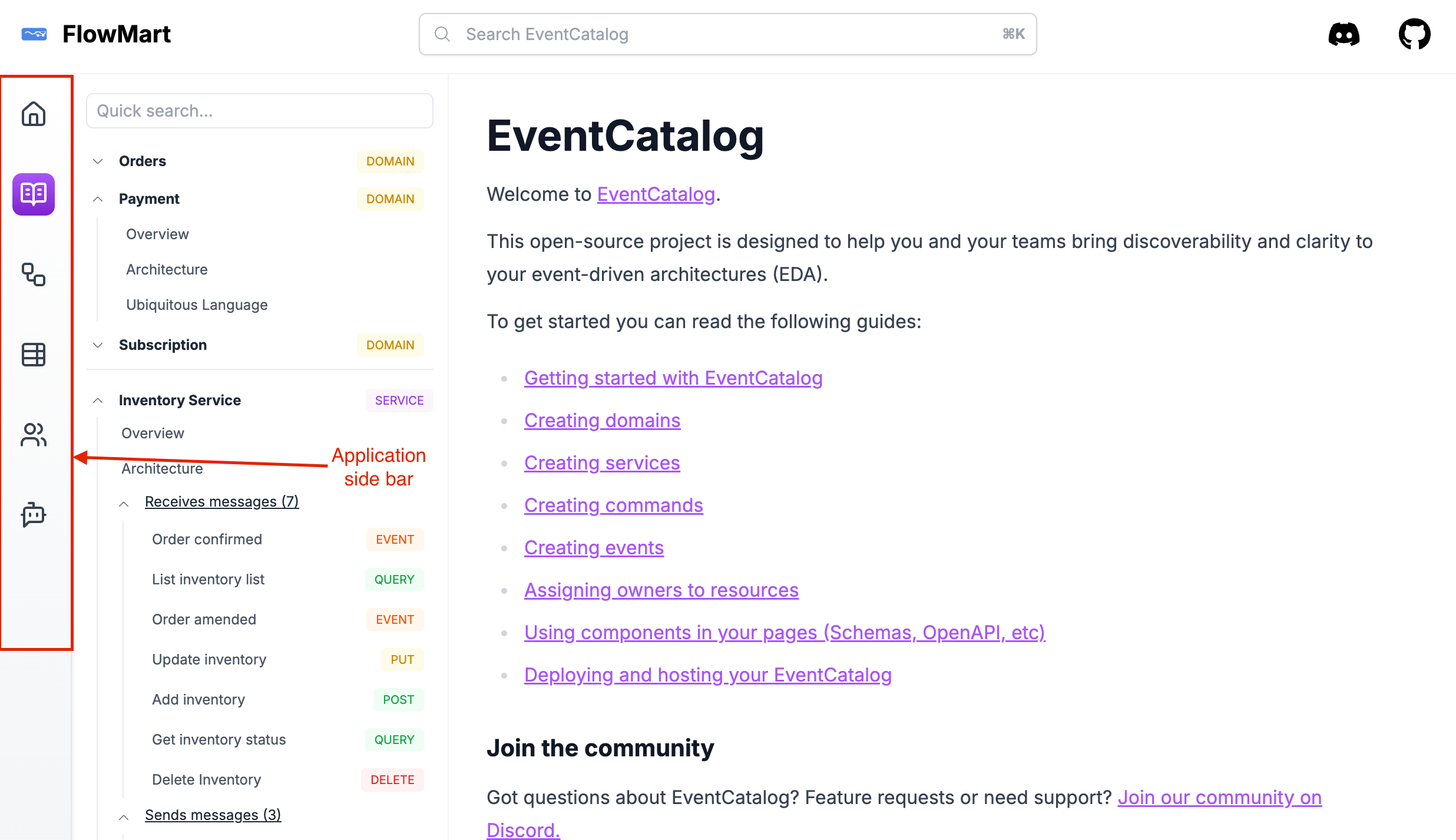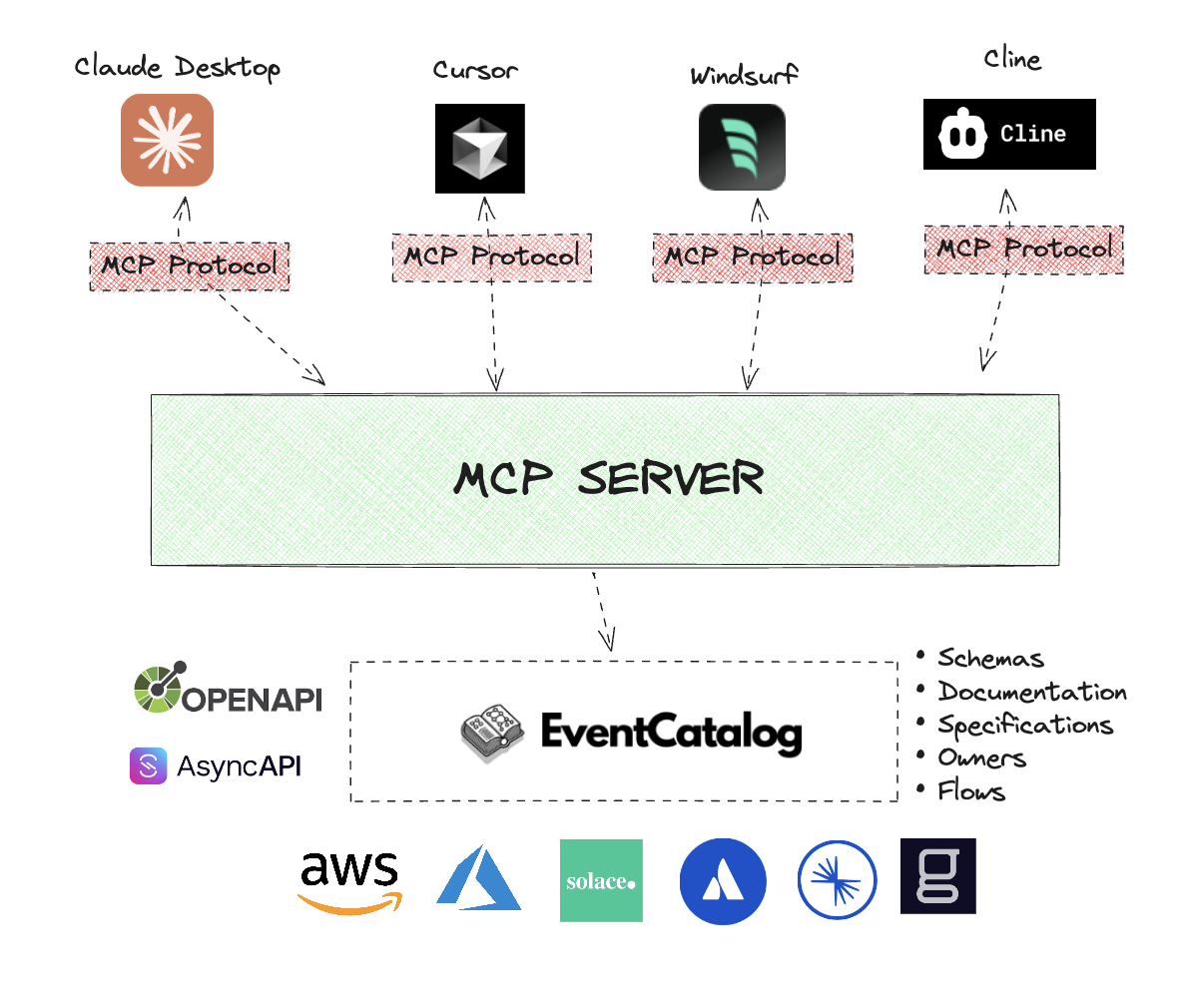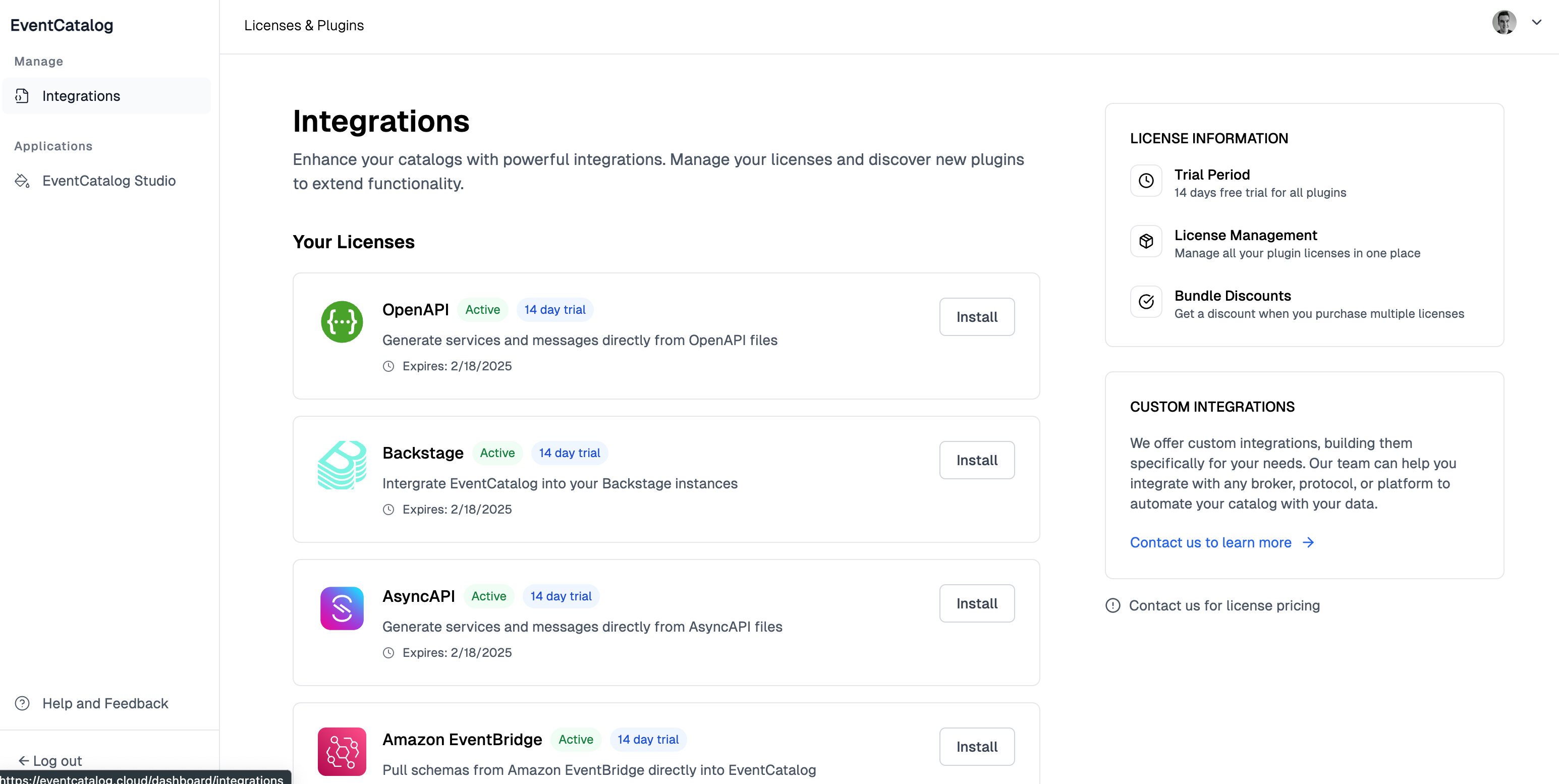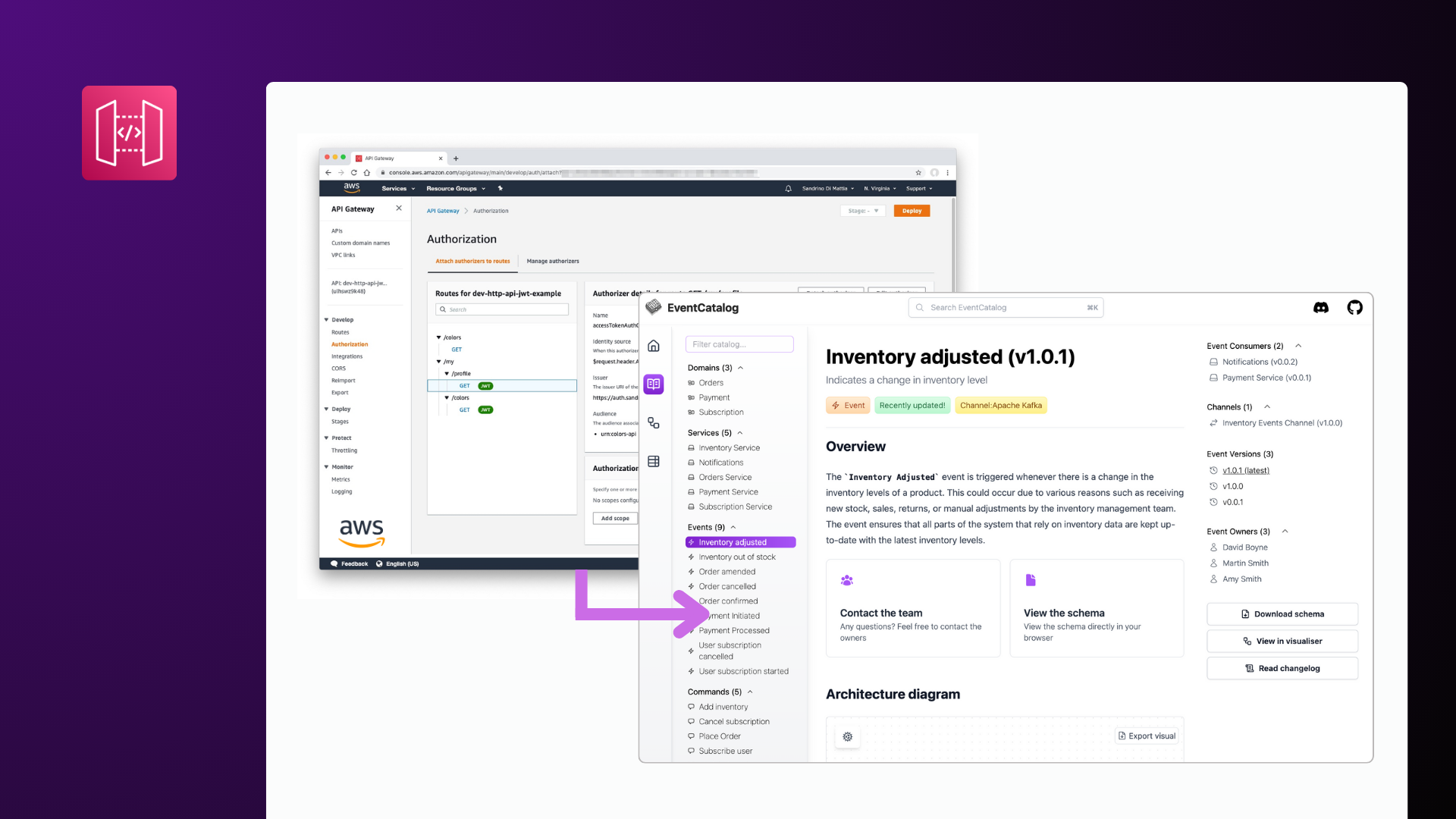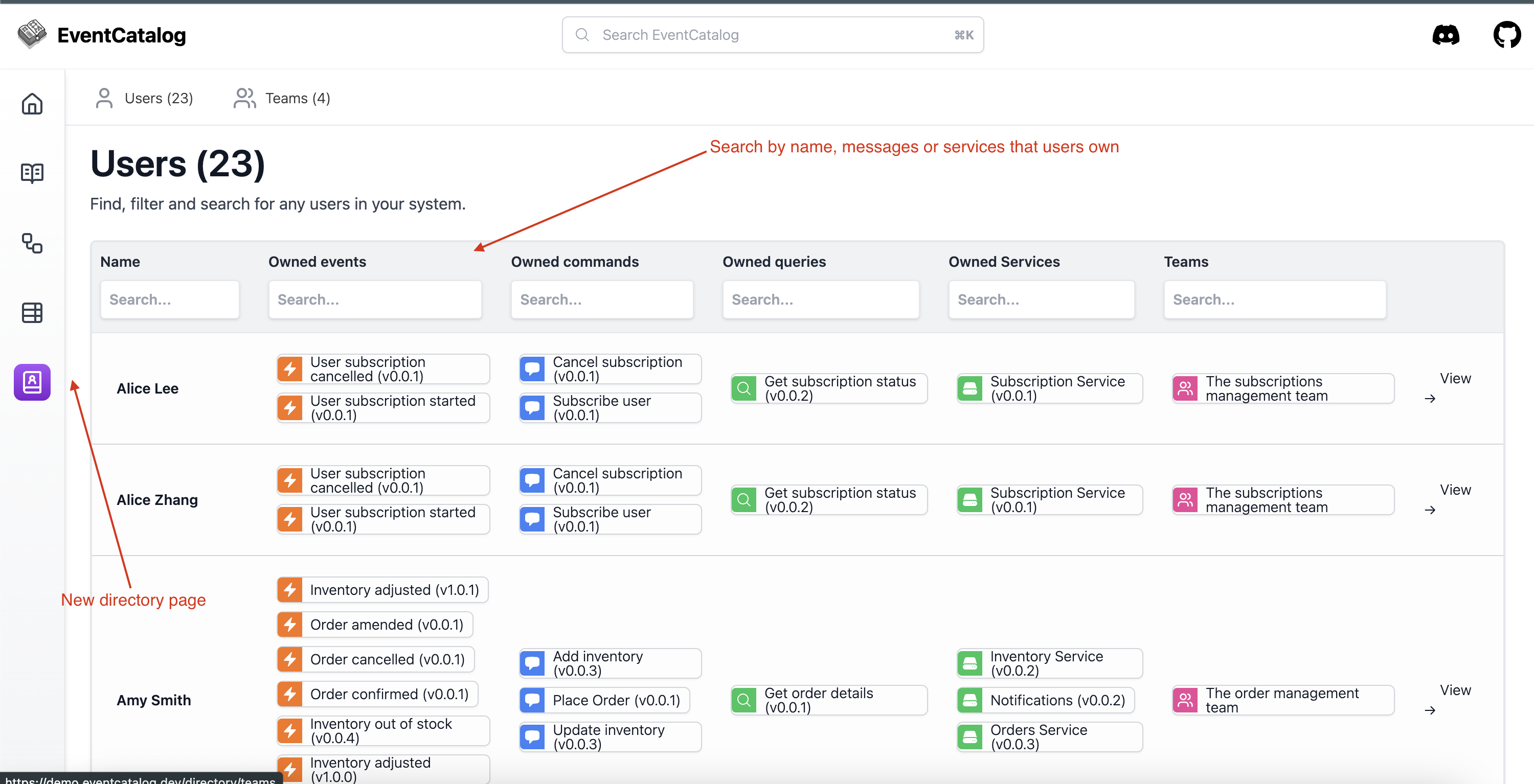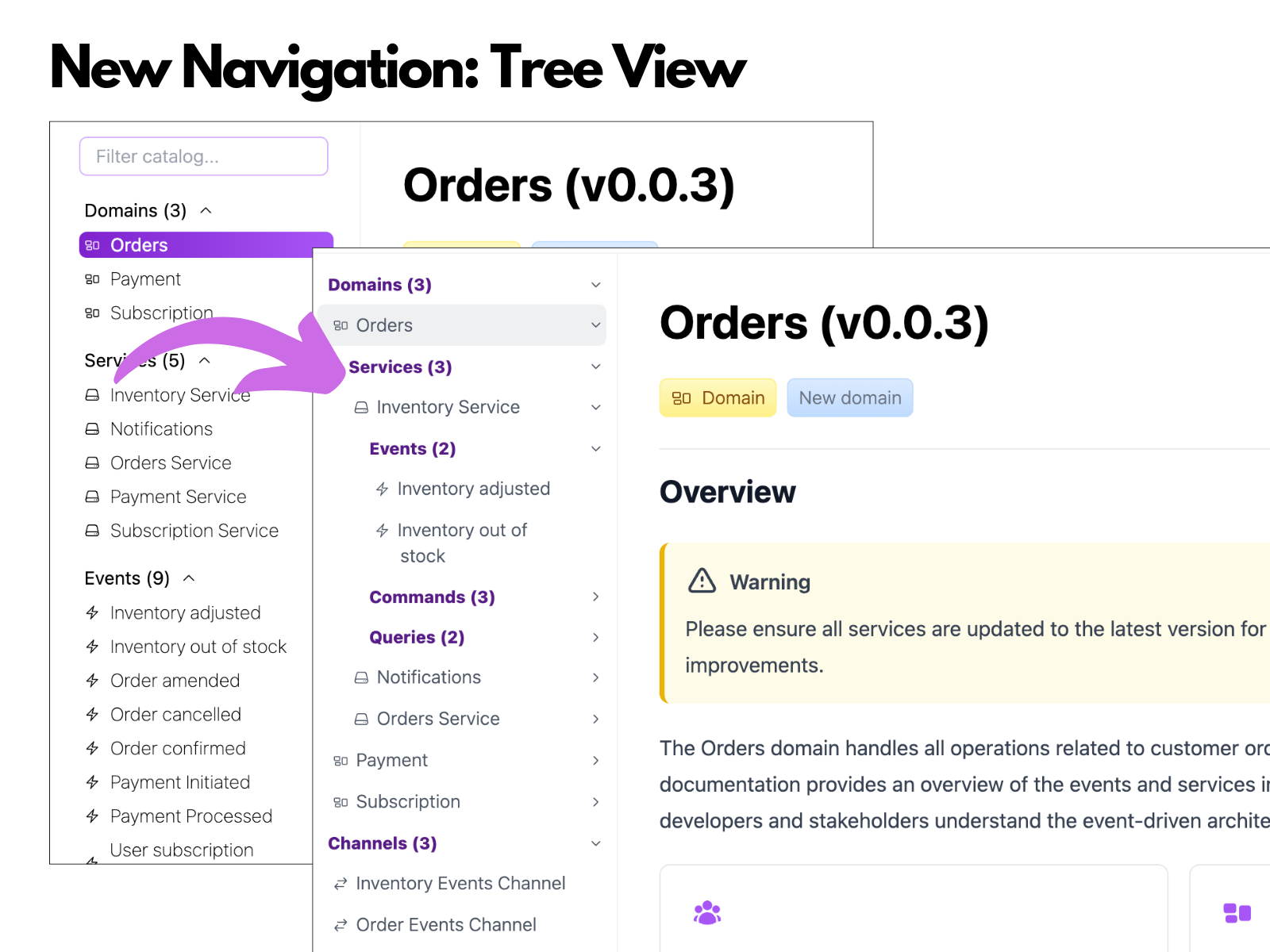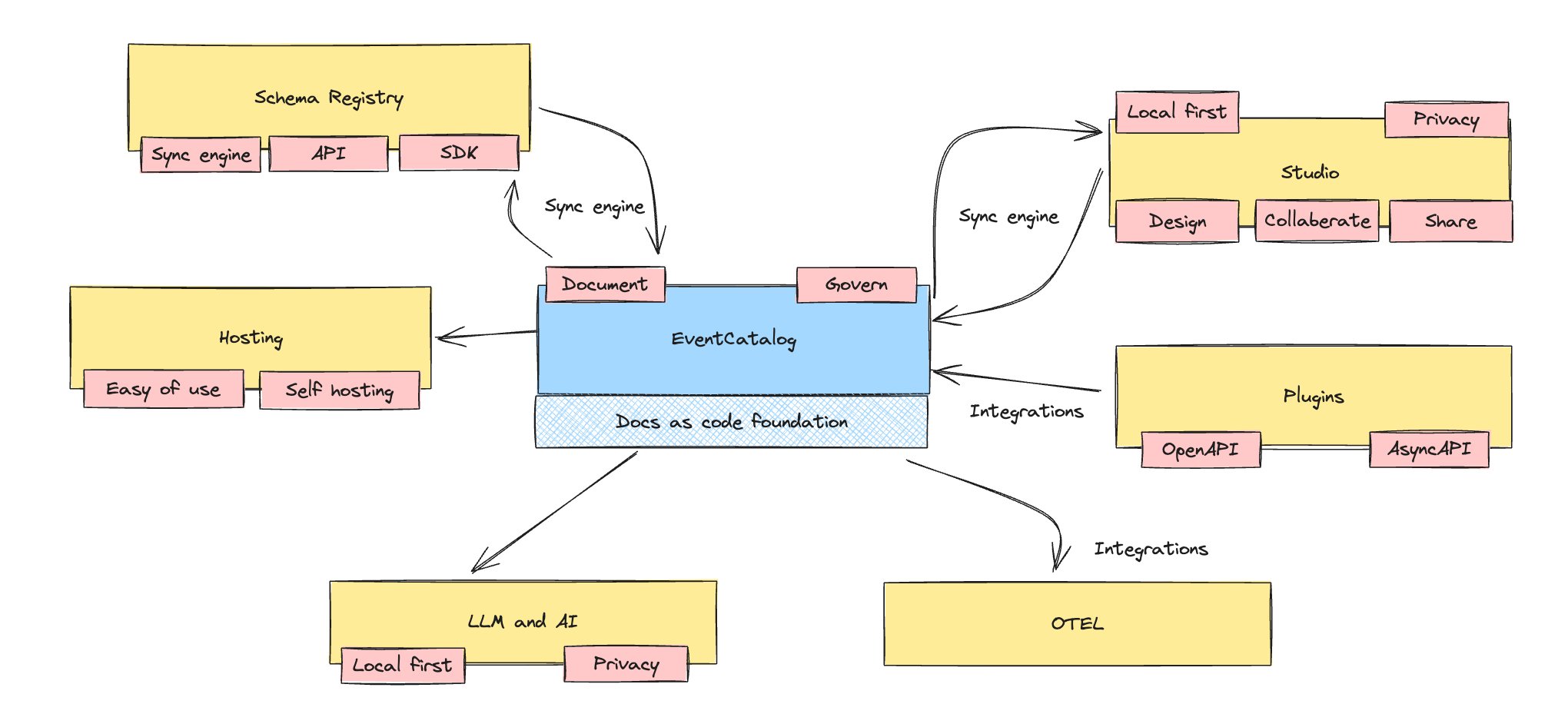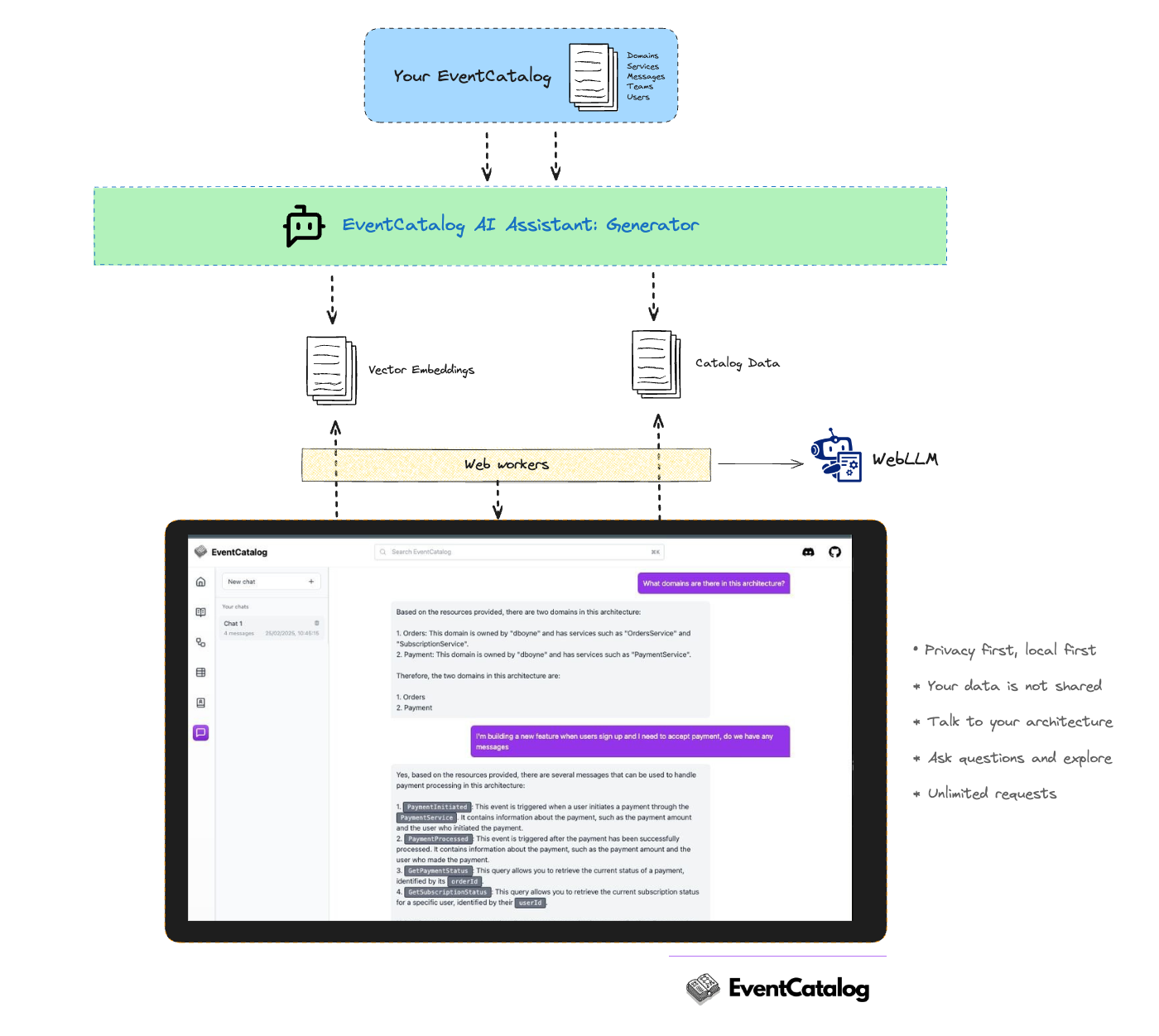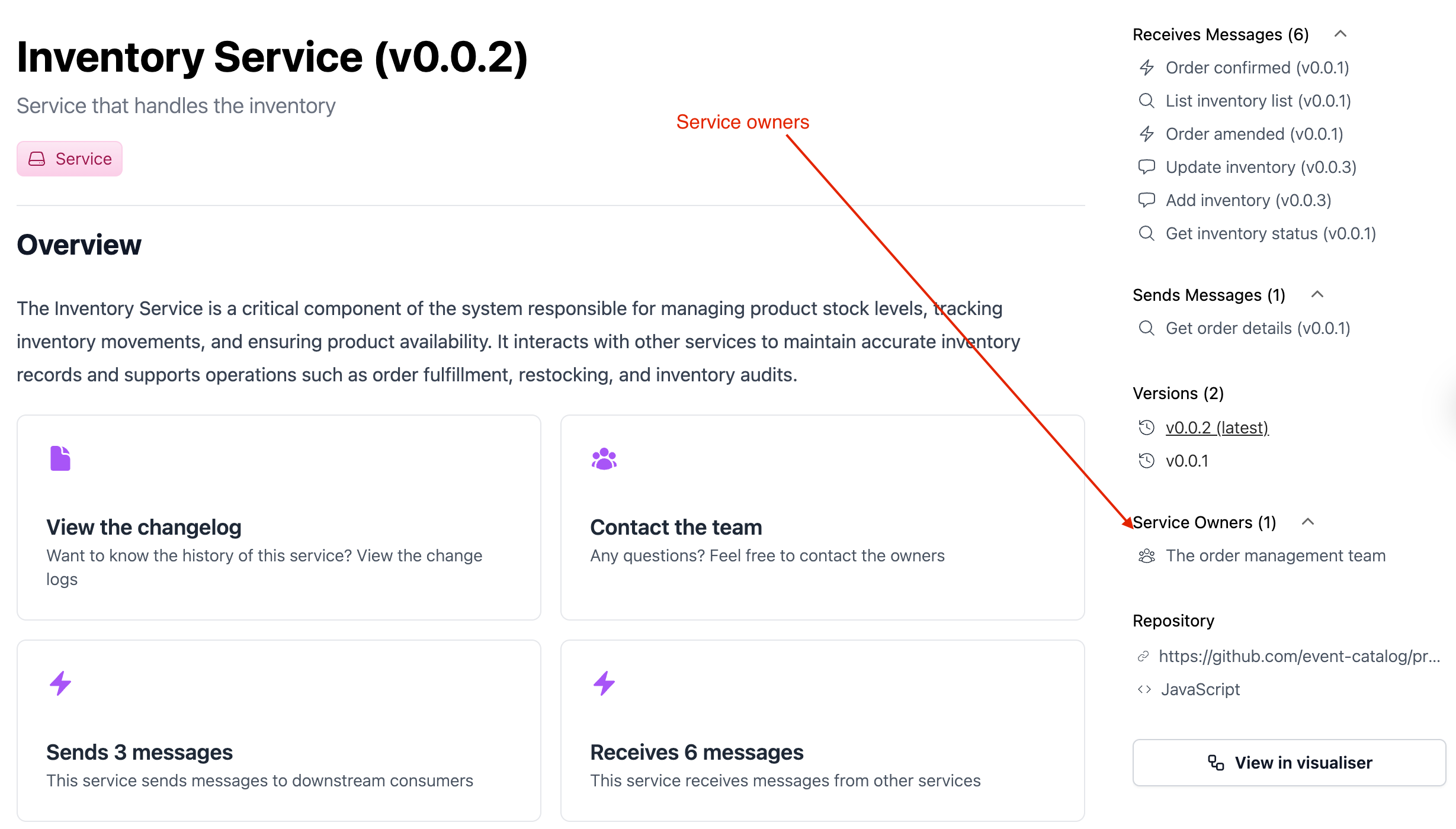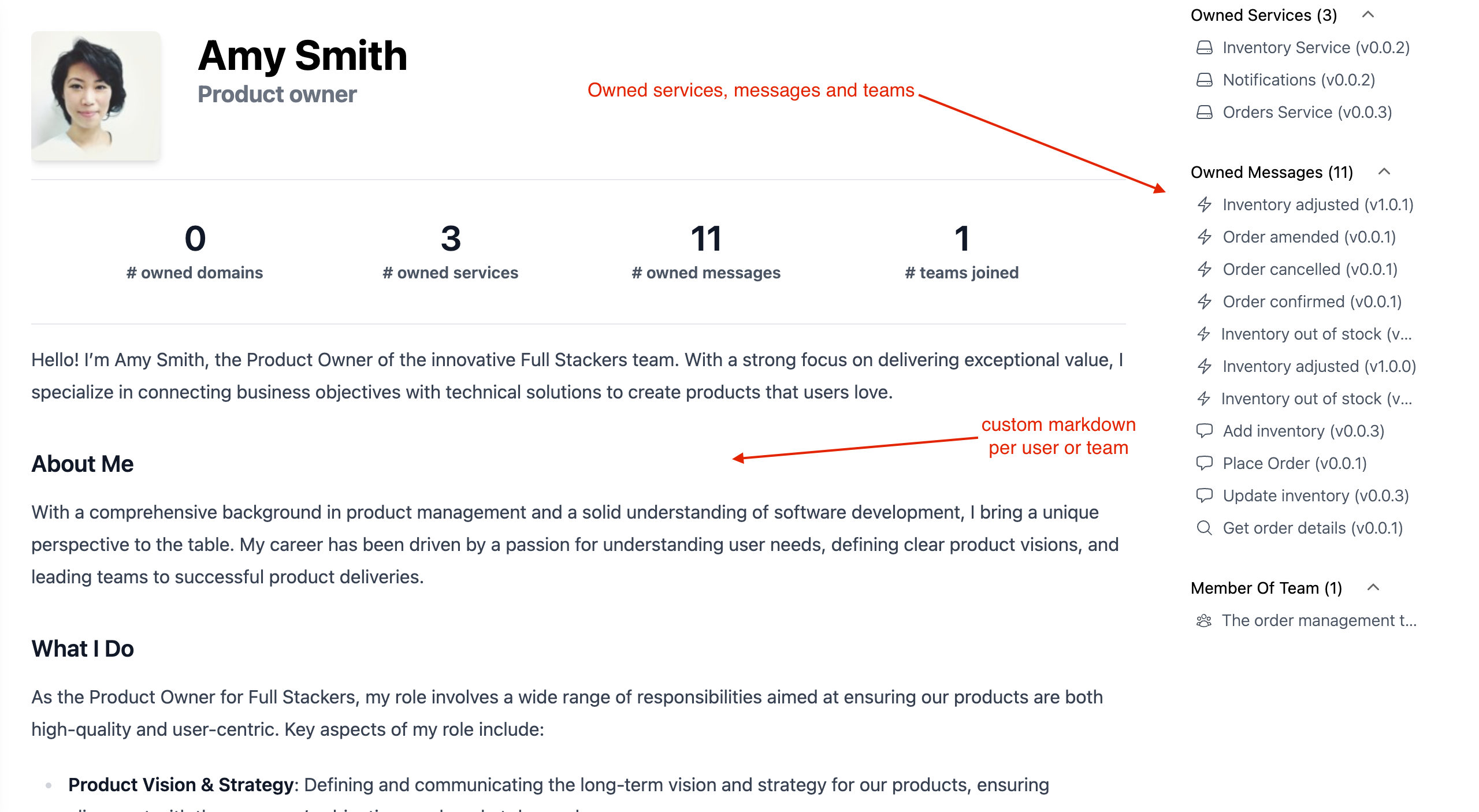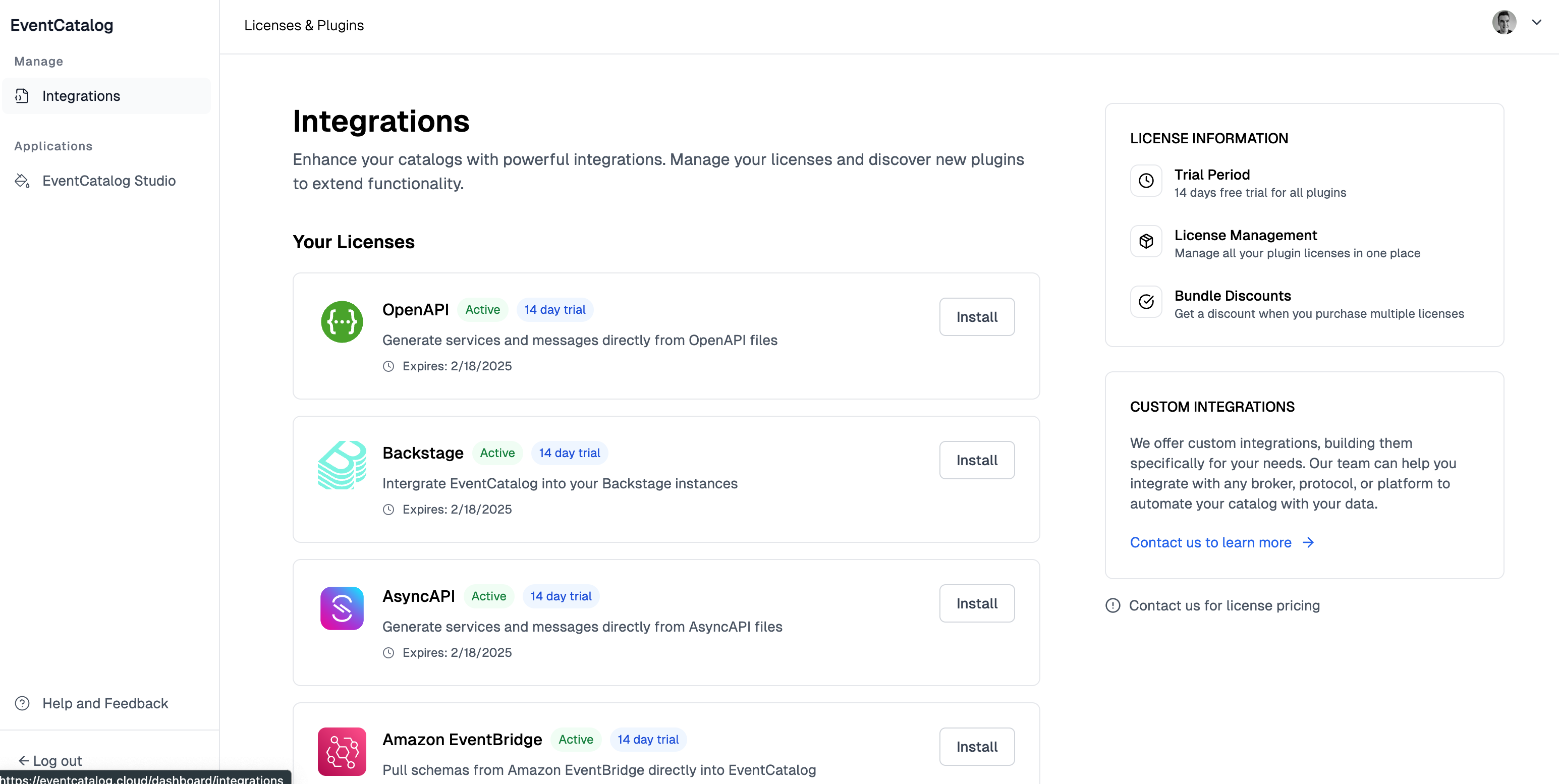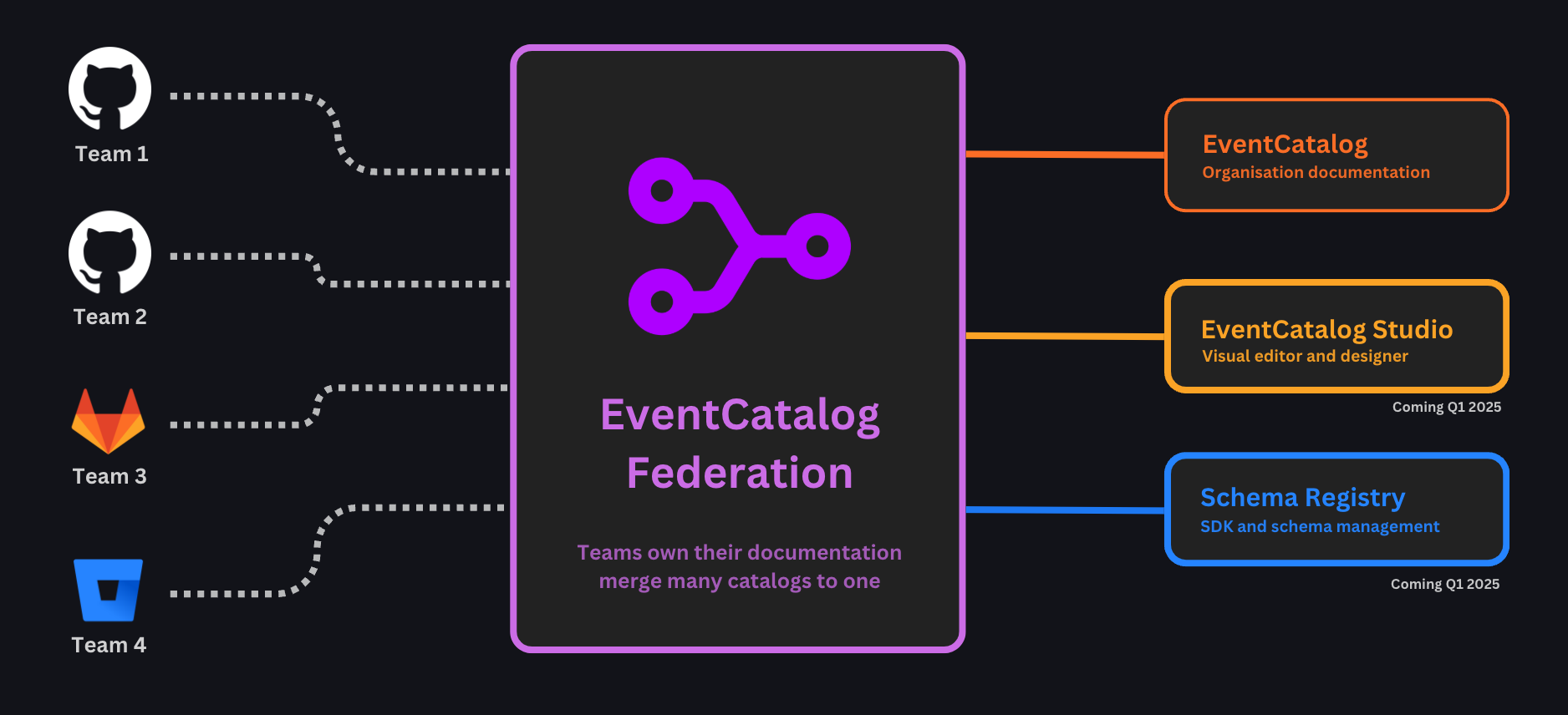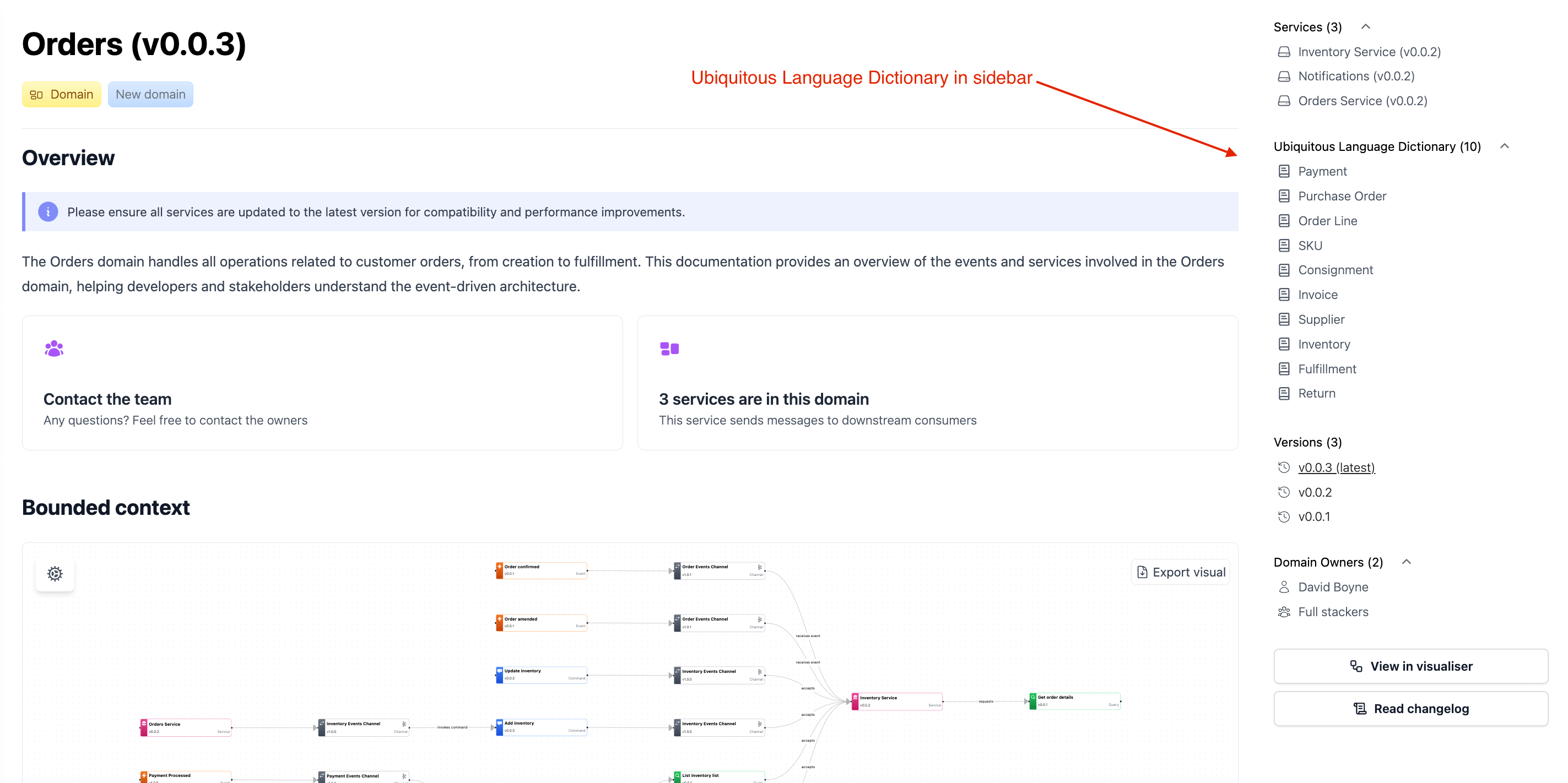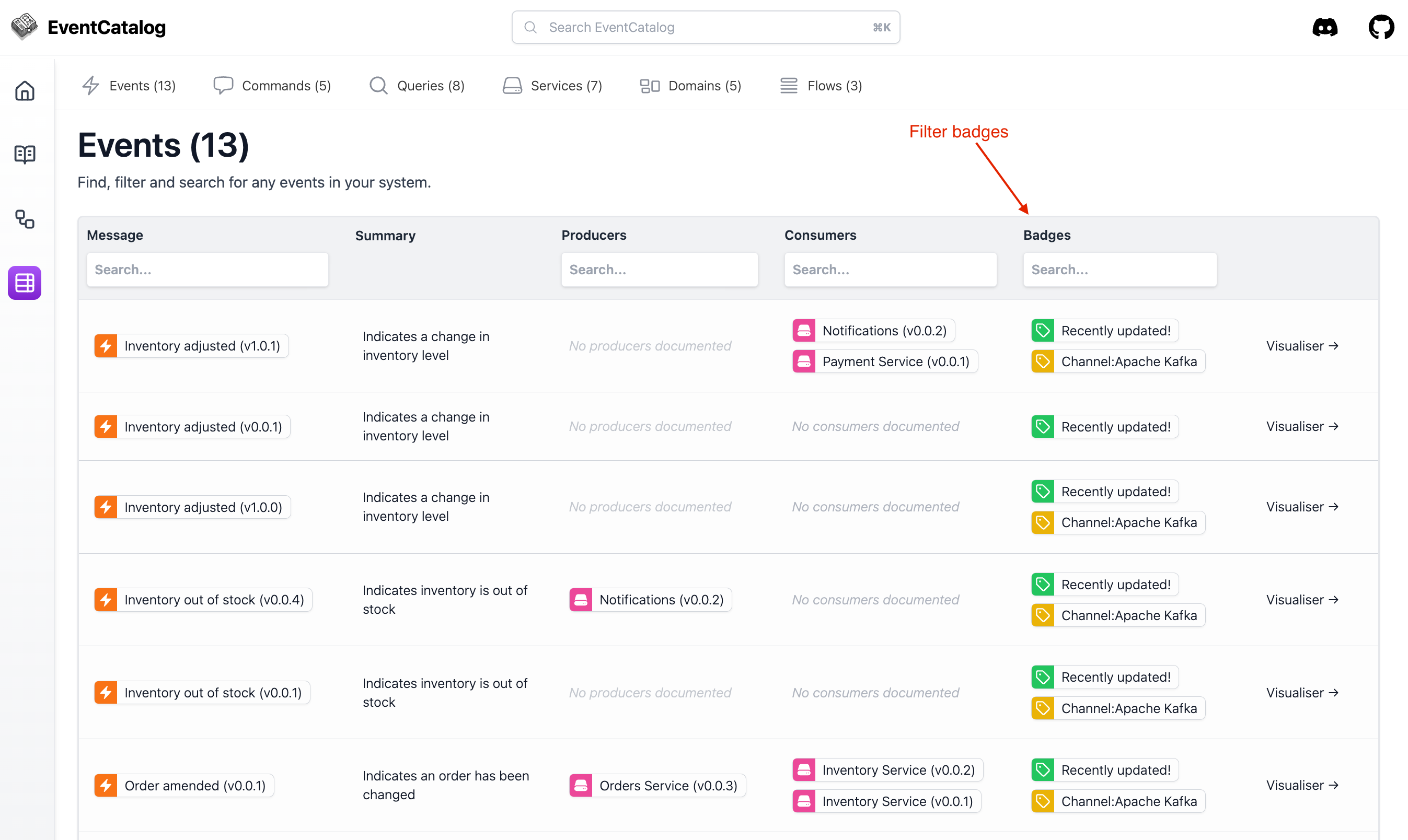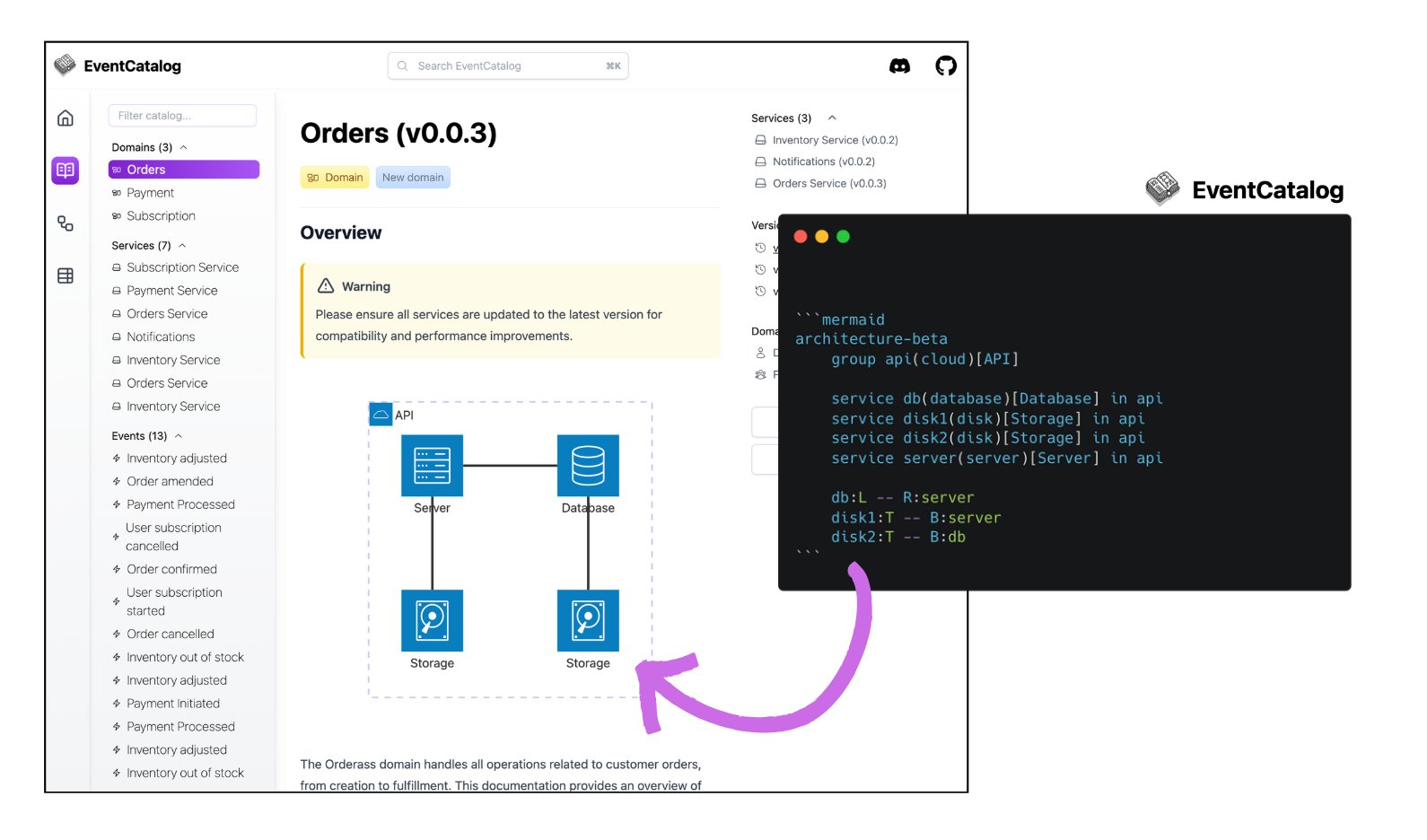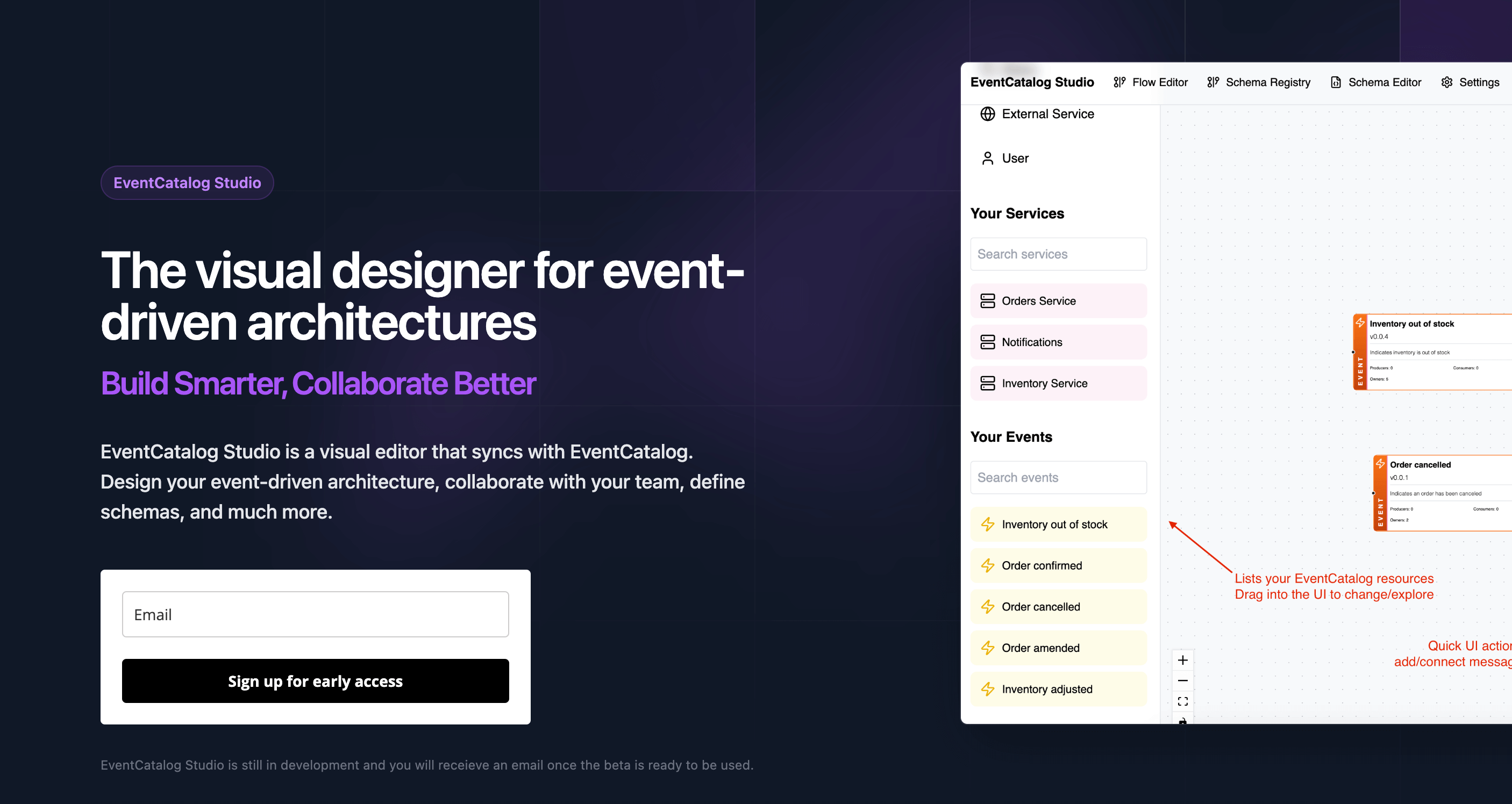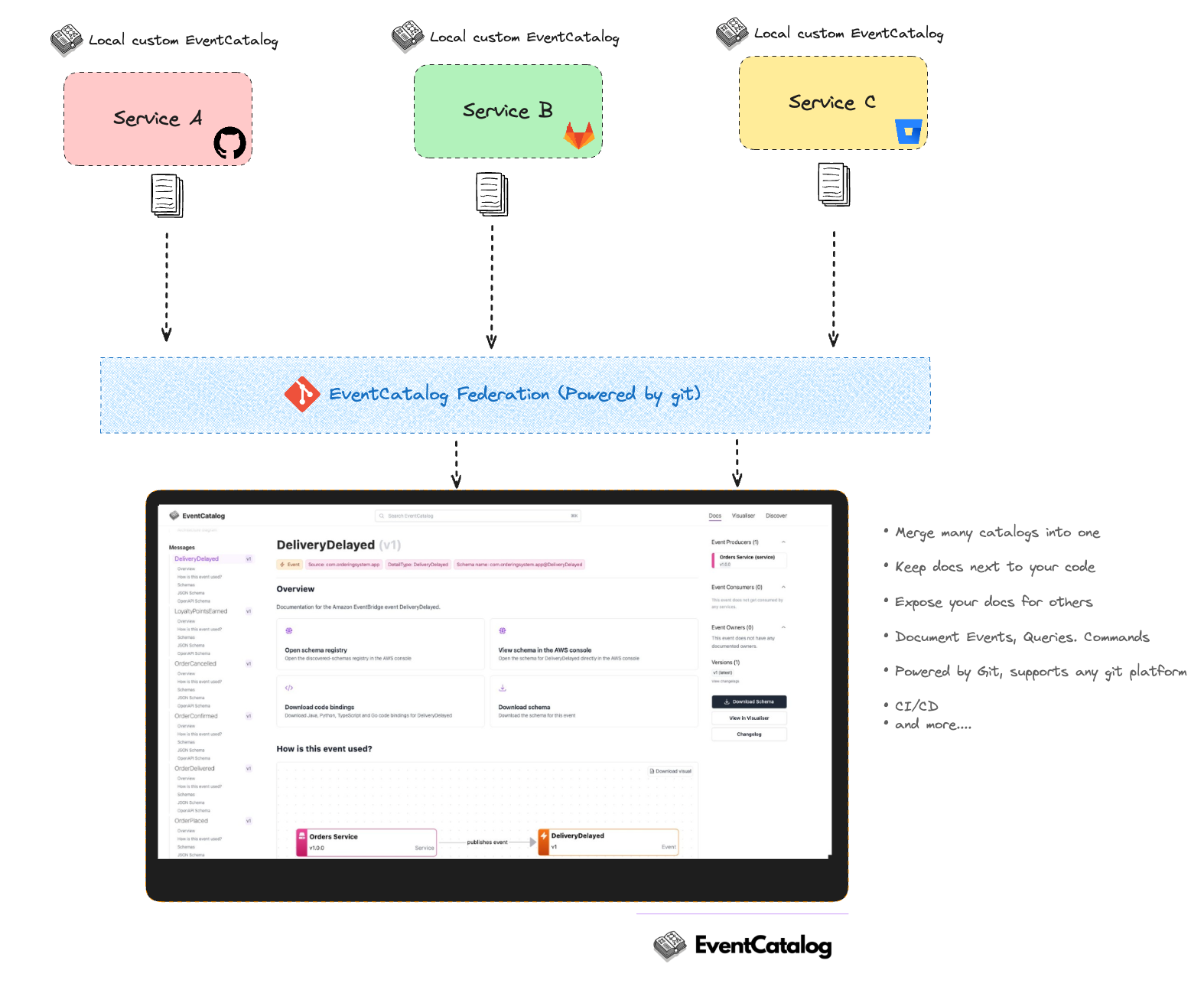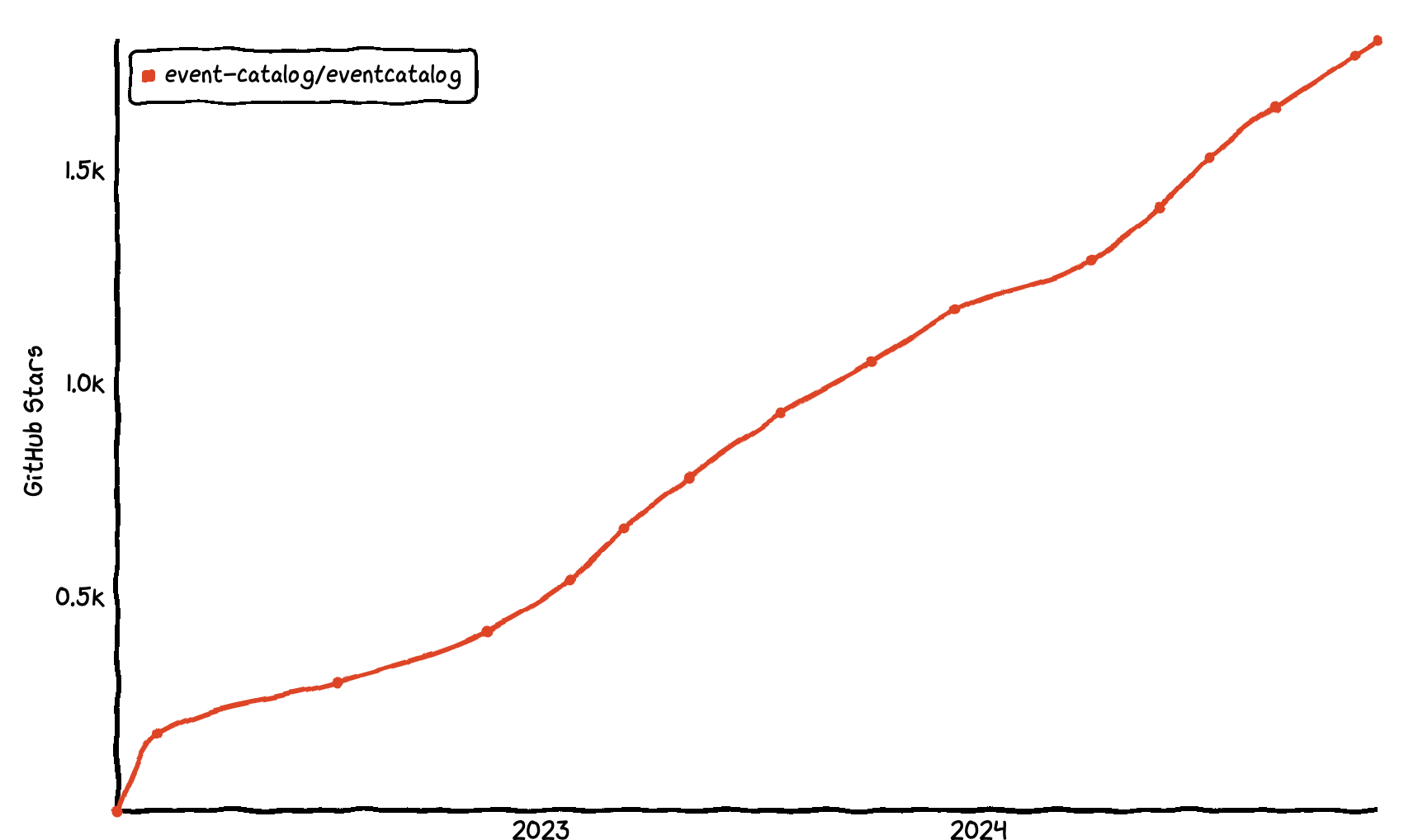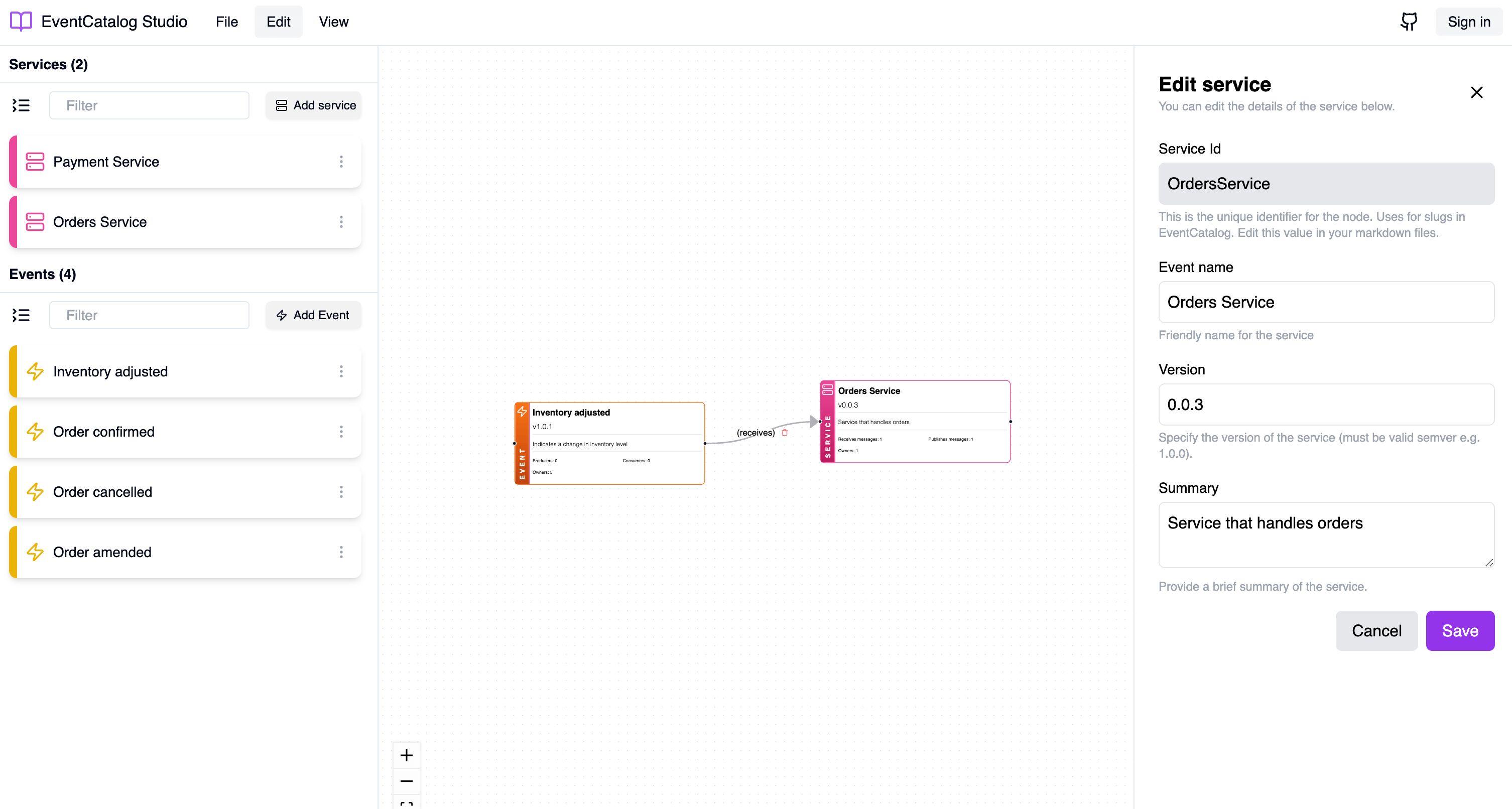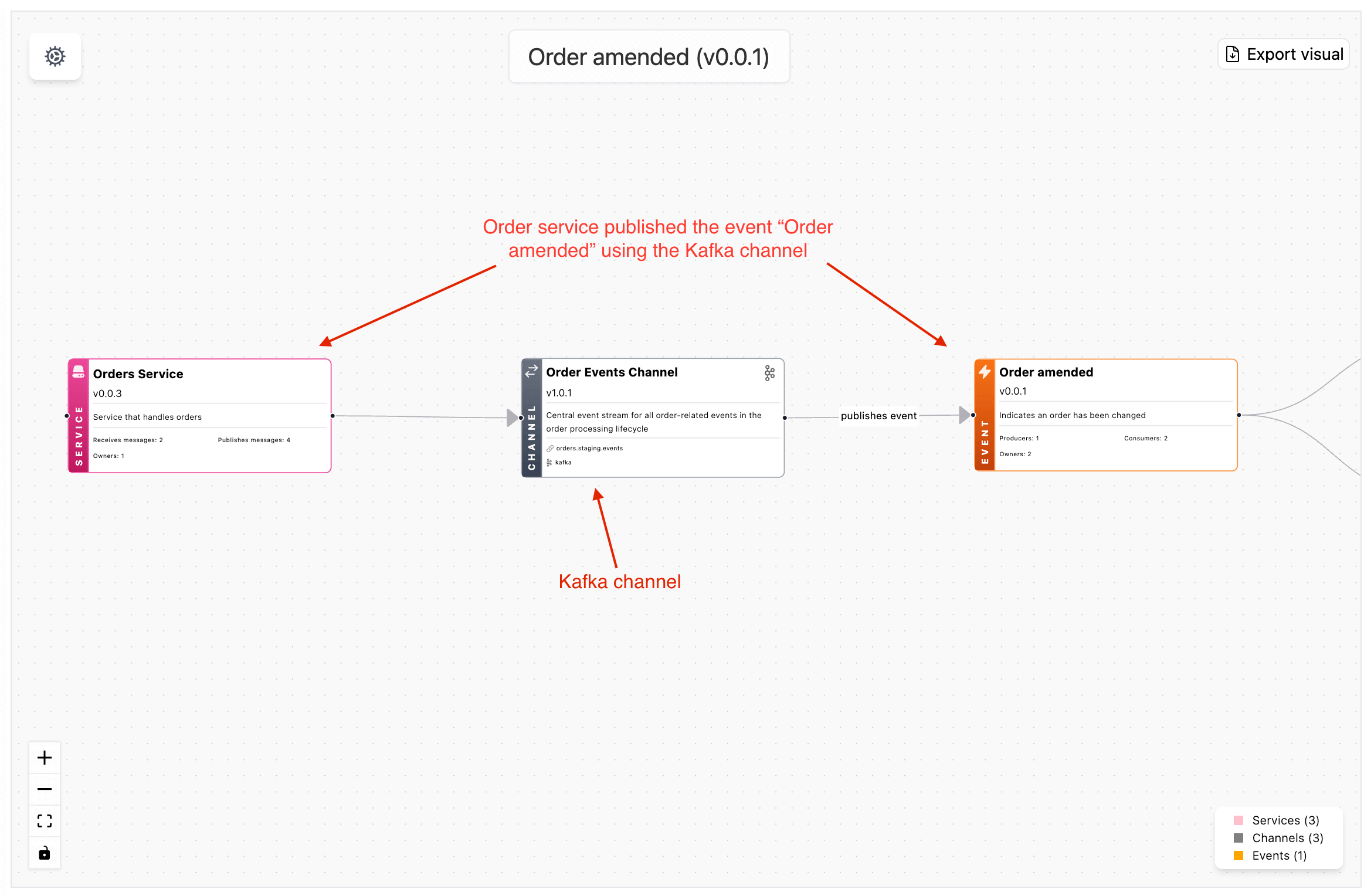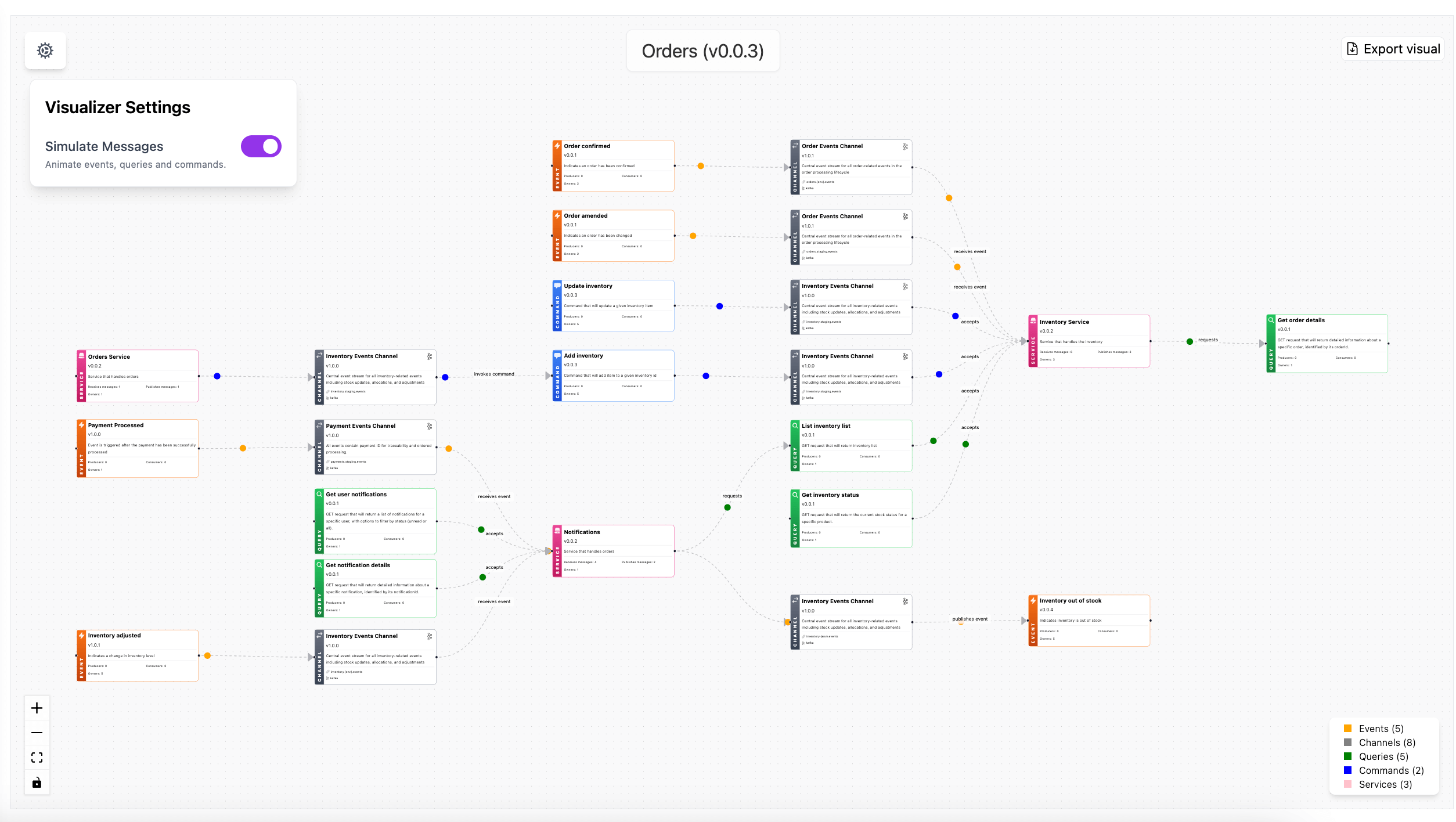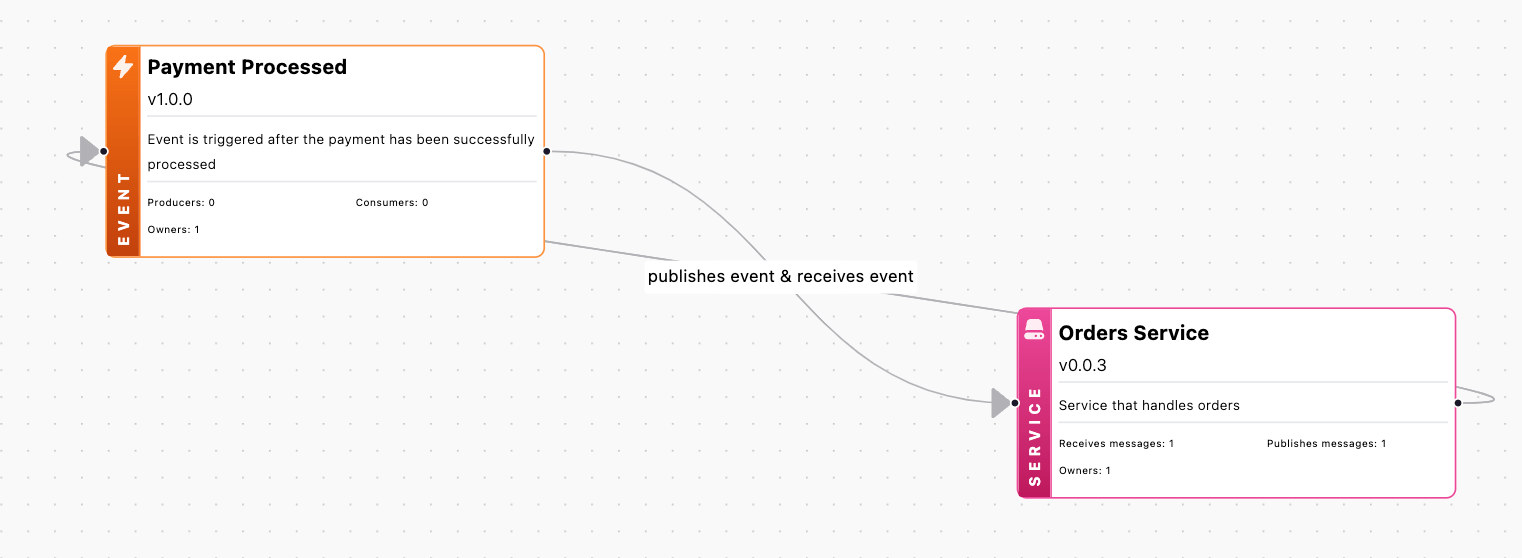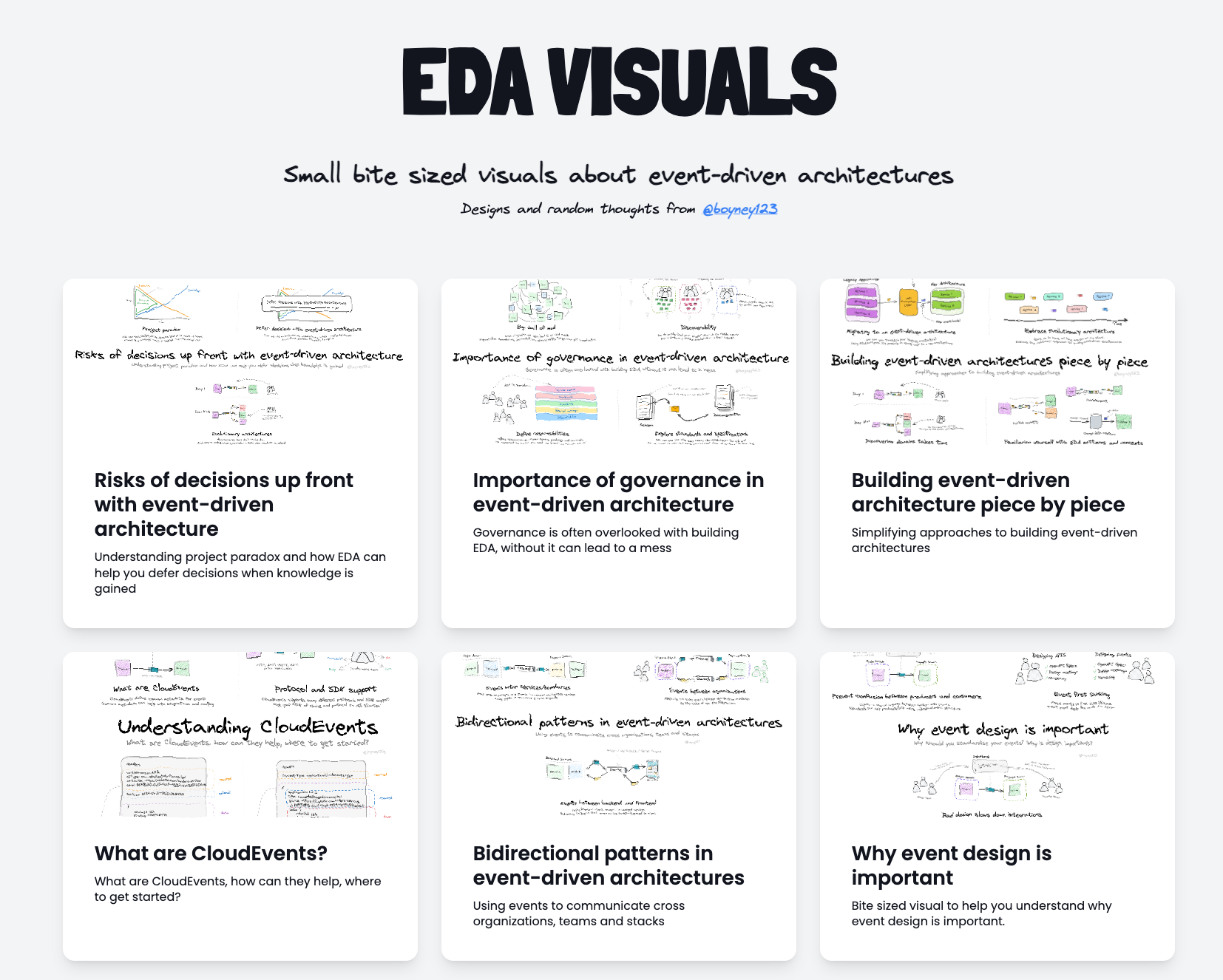Whats new in EventCatalog - October 2025
Welcome to another monthly update for EventCatalog. In this blog post I will summarise what was new to EventCatalog in October and how you can get started.
EventCatalog Schema Explorer
Many teams building event-driven architectures have schema sprawl throughout their organization.
Finding schemas can be hard. Most people are either directed to a schema registry (if you are lucky) or a random GitHub repo with the implementation details of the schema.
We want to help people save time and make schemas more discoverable and understandable in organisations, not only for technical developers but for business stakeholders.
This is why we built the Schema Explorer. A new page to help teams save time and find the information they need.
Teams can still have any schema registry as the source of truth, but with EventCatalog the schemas can be aggregated, filtered, and searchable helping teams find the information they need.
Using the Schema Explorer teams can quickly filter and find the schema they need (e.g JSON, Avro, Proto, OpenAPI, AsyncAPI, GraphQL), and find the producers and consumers of these schemas.
Teams can also track the versions of their schemas and quickly see a version has changed over time.
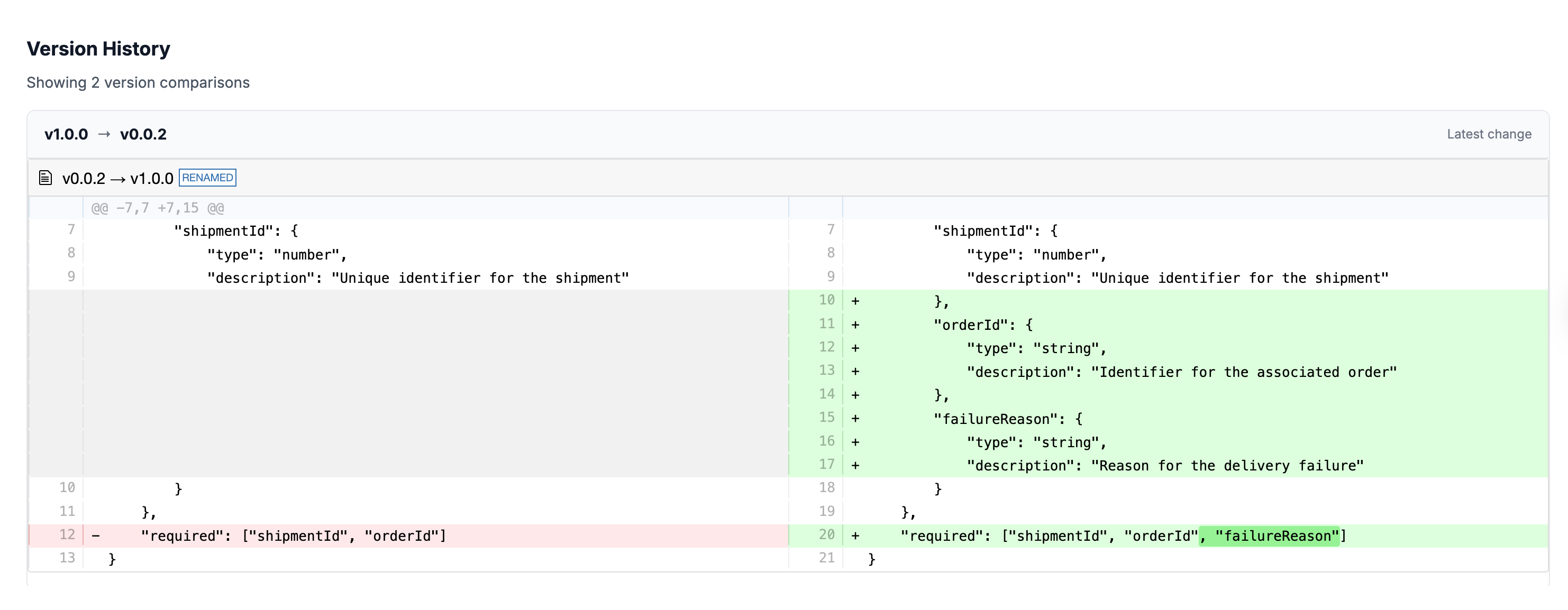 Schema diffs between versions
Schema diffs between versionsUsing the new Schema API, teams can also programmatically get access to their schemas to help them with any local testing or integrations they need to do. This supports any specification or schema format you are using in your organization.
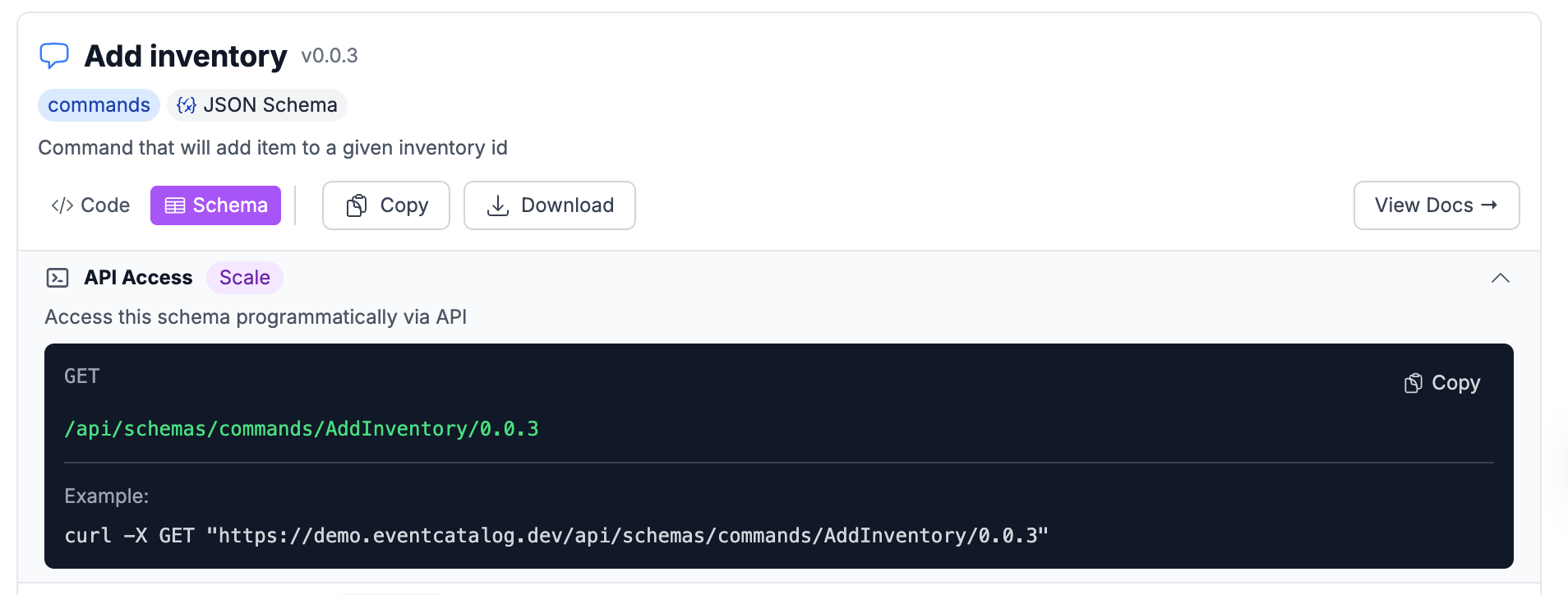
For folks using AI and MCP servers, we also added new tools in the EventCatalog MCP server to help you get the information you need in the context you need it.
We our new schema tools you can ask questions about your schemas and fetch them in your IDE, giving your teams the context they need when they need it. Saving them time searching for the information they need.
If you want to get started with the Schema Explorer you can read our documentation page.
Introduced Data stores into EventCatalog
After speaking to users of EventCatalog, we felt one thing missing, was the ability to model and document data stores (e.g databases, caches, objectStores, searchIndex etc).
So this is our first iteration into data architecture, starting with the data stores (containers).
Data stores are like any other resource type in EventCatalog. You define them with markdown and frontmatter. When you define your data store they are given their own page in your catalog.
Like any other resource type in EventCatalog, you can visualize them, assign schemas to them, version them, and more.
Using the new data store resource you can document databases, caches, object stores, search indexes, and more, assign schemas to them and create read/write relationships with your services.
You can now assign your services to to data stores using the new readsFrom and writesTo properties in your services. EventCatalog will then render and visualize the relationship between your services and their data layers.
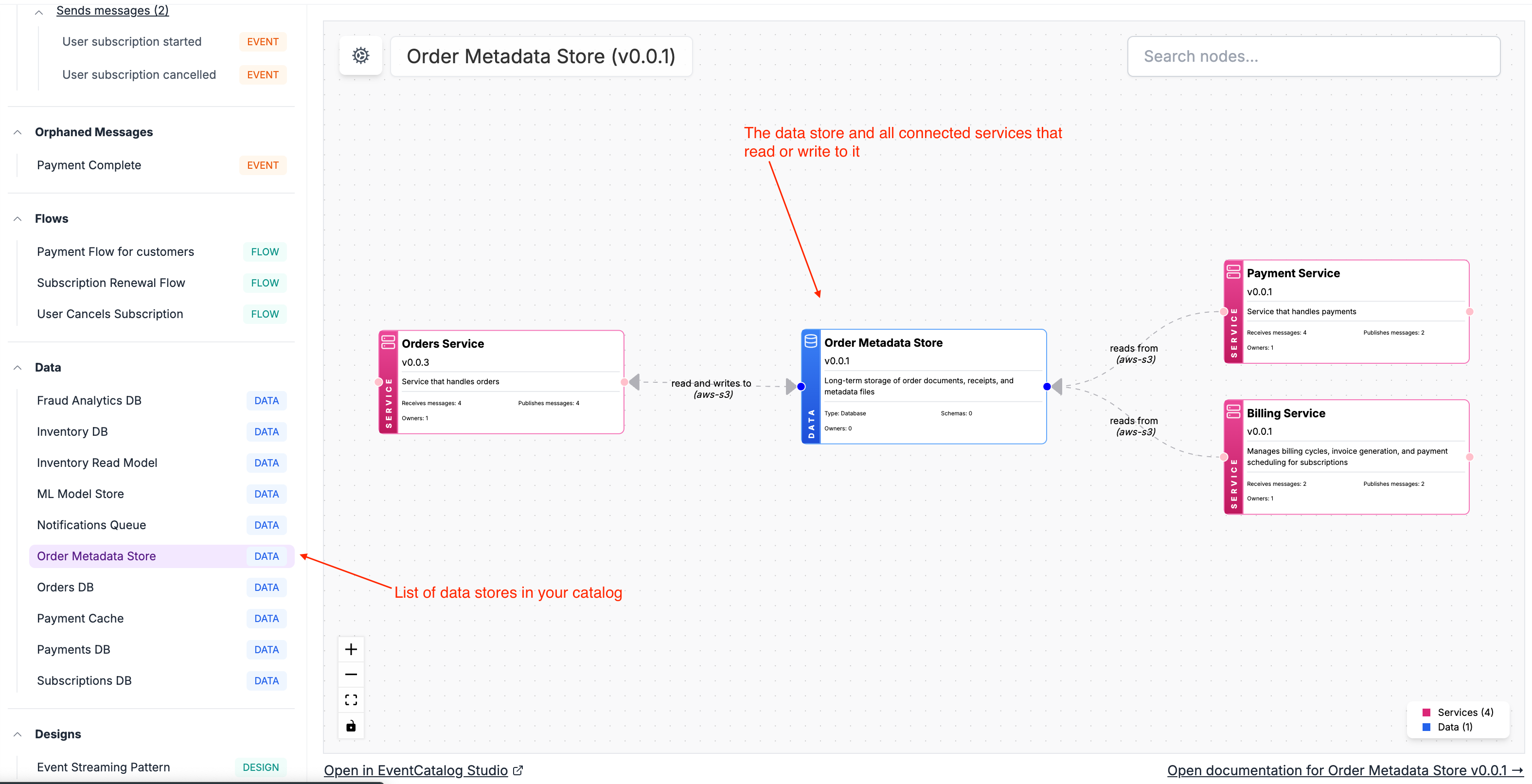
A new version of the EventCatalog SDK has been released with support for data stores, and if you want to start documenting your data stores today you can read our data store documentation.
We also want to start looking and how we can help data architects catalog information using EventCatalog.
To do this we are exploring more channel to channel patterns in EventCatalog, and data product support in EventCatalog. If this is something you would be interested, reach out to me I would love to talk to you!
EventCatalog MCP Server improvements
The EventCatalog MCP server has been updated with new tools to help you get the information you need in the context you need it. You can ask questions about your schemas and fetch them in your IDE, giving your teams the context they need.
EventStorming to EventCatalog
This is more of an experimental tool, that will take a picture of your event storm and automatically create an EventCatalog for you. Upload your photo to your LLM and tell it to create you an EventCatalog.
The EventCatalog MCP server gives your teams the ability to query, and find information you need in your MCP clients (e.g Cursor, Claude Desktop), giving you even more value from your documented architecture and saving time.
You can find our MCP server on GitHub, or setup our MCP server with our guides.
Import all your resources into EventCatalog Studio
We want to make it easier to document flows in EventCatalog. How information flows across your organization with your messages, domains and services.
We introduced a new feature that let’s you import all your resources from EventCatalog straight into EventCatalog Studio. This let’s you create new designs in Studio using our drag and drop editor and import them back into your documentation page, giving you more value from your documented architecture.
Integration updates
The OpenAPI, AsyncAPI and GraphQL plugins for EventCatalog have been updated. You can now fetch schemas giving a remote URL. This will sync your schemas with your EventCatalog documentation.
We have many integrations with specifications and schema registries, to help you integration with systems you already have. You can find the list of integrations here.
Avro Schema Viewer Support
Our SchemaViewer now supports avro schemas, whilst will render your avro schemas in a new UI.
This gives you the ability to render and filter your avro properties in the UI.
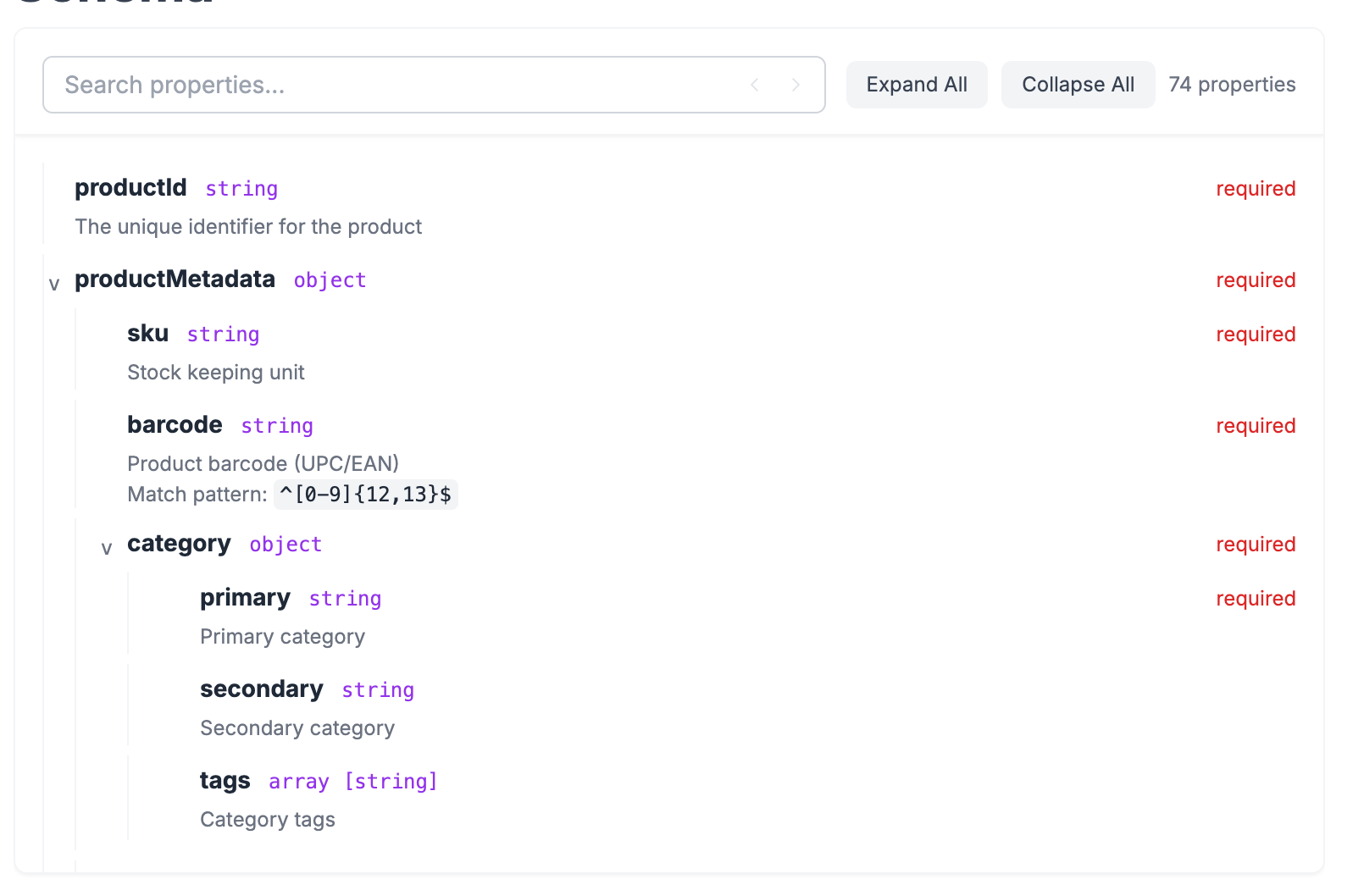
Summary
October was a busy month for EventCatalog, and the project continues to grow.
My project vision remains the same; bring discoverability to event-driven architectures and save teams time.
A few things we want to focus on next include, channel to channel support, ability for domains to send and receive messages, exploring data products and flows, and stability of the project.
If you like EventCatalog, I would love a ⭐️ on GitHub, and feel free to join our Discord Channel, which now has over 1,200 members!
